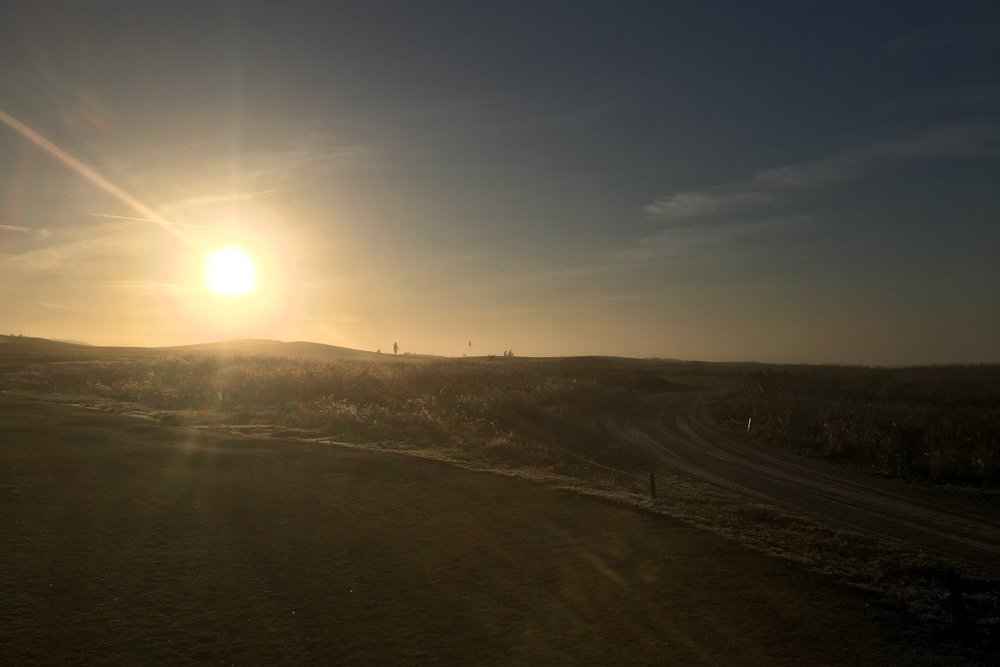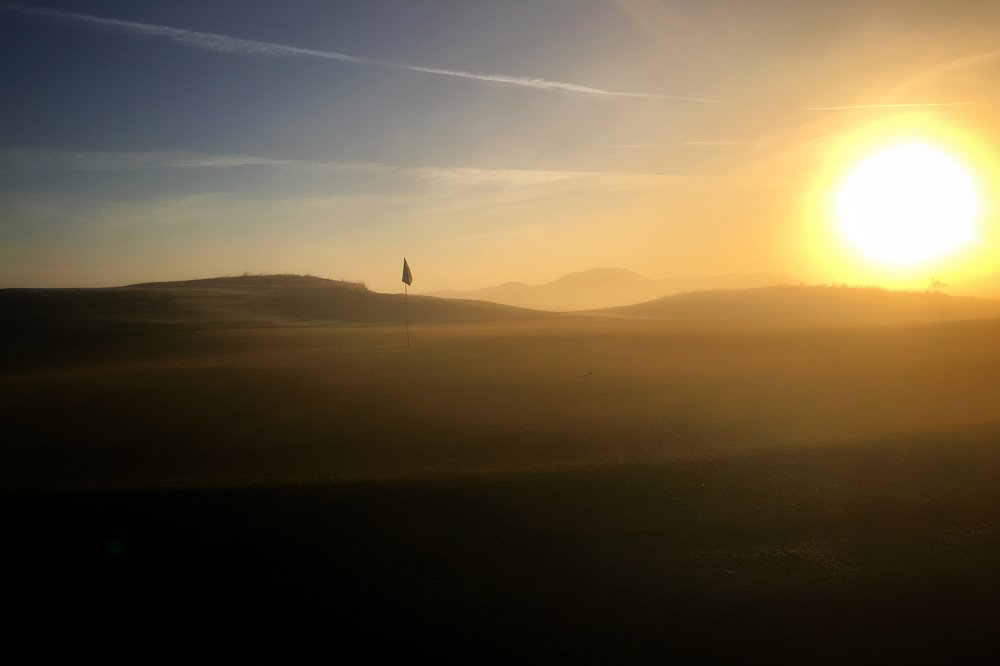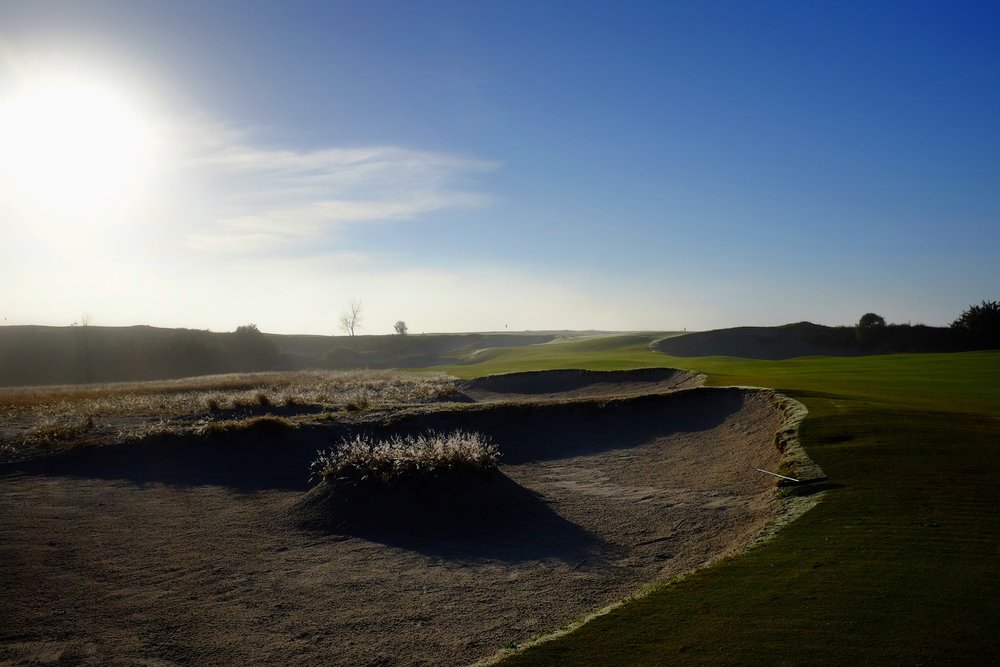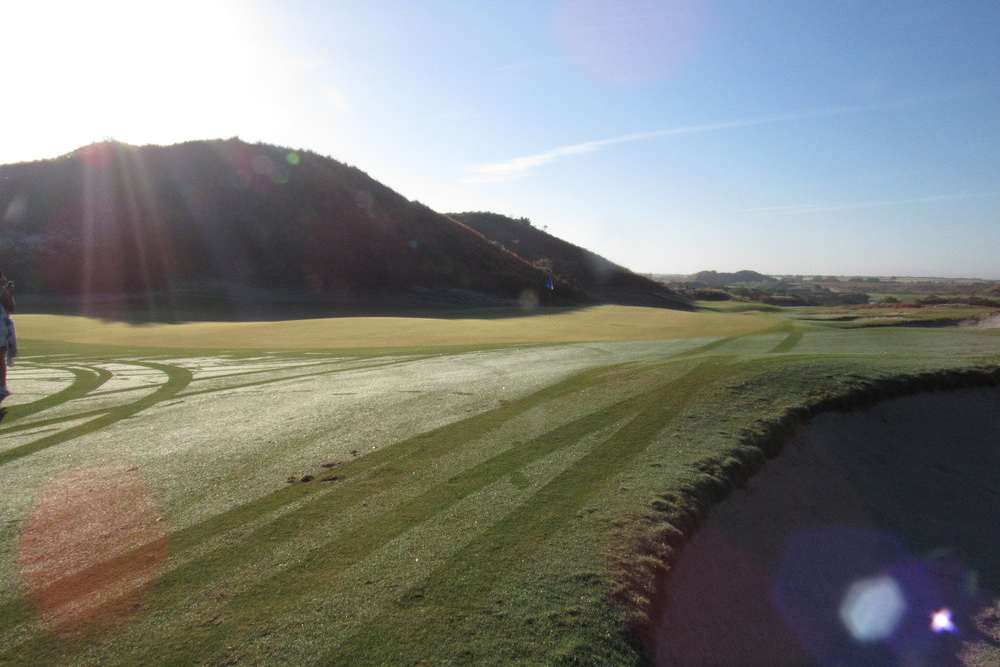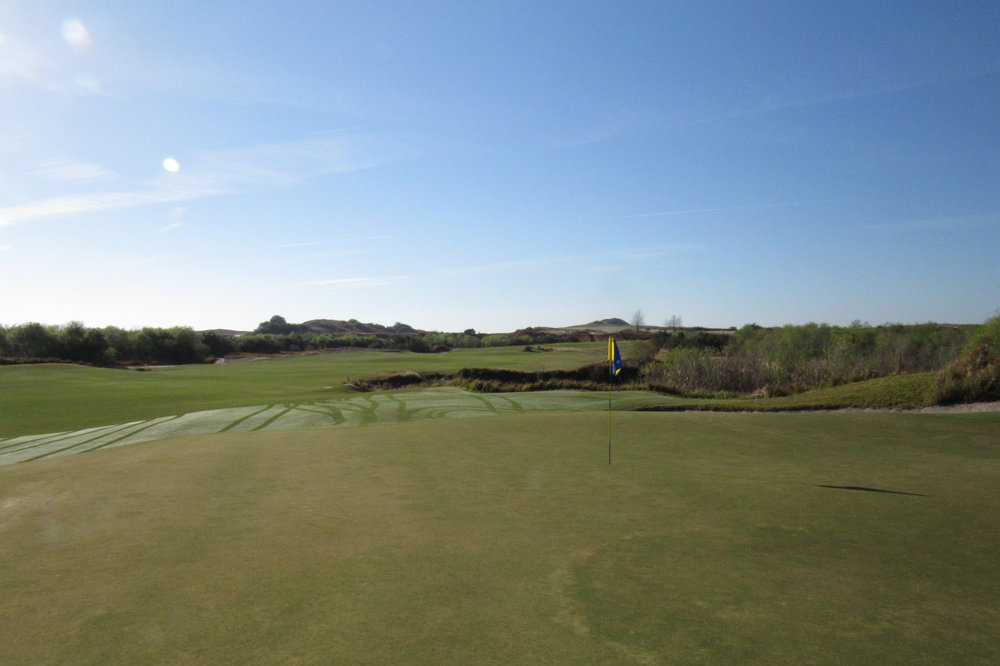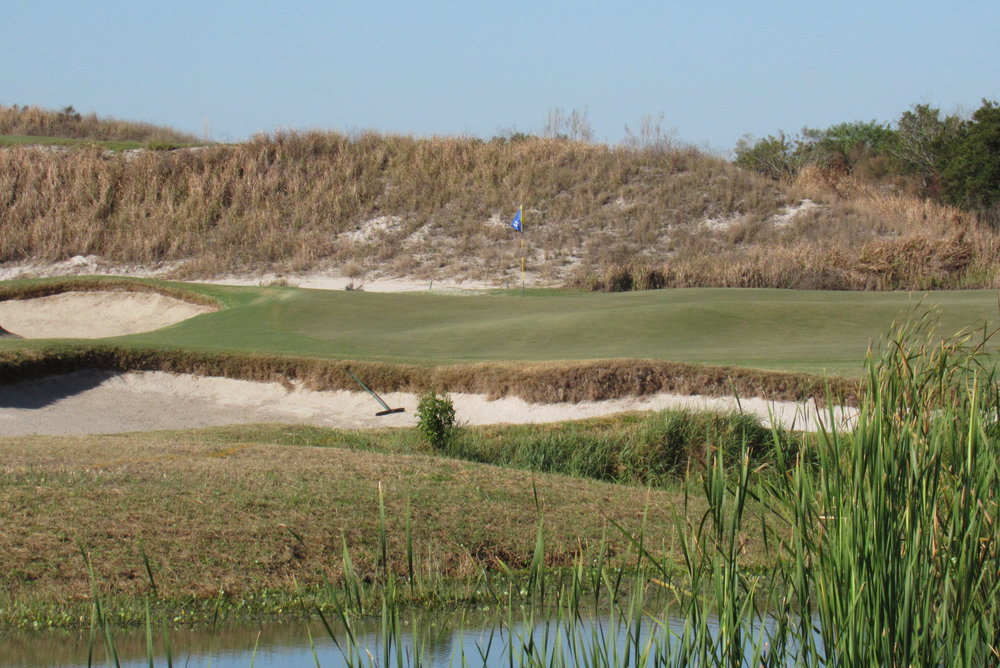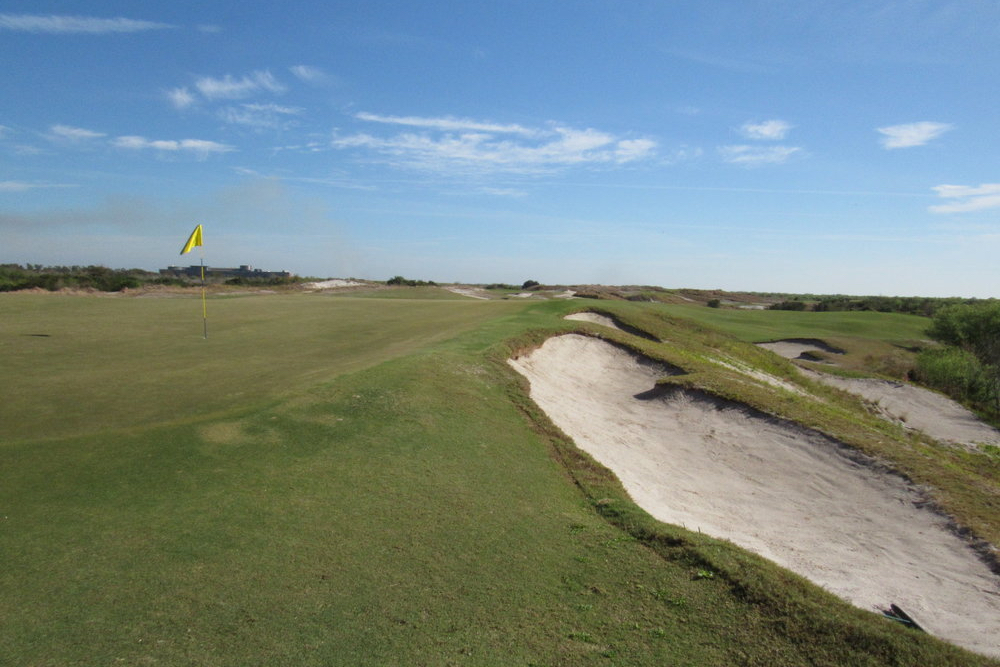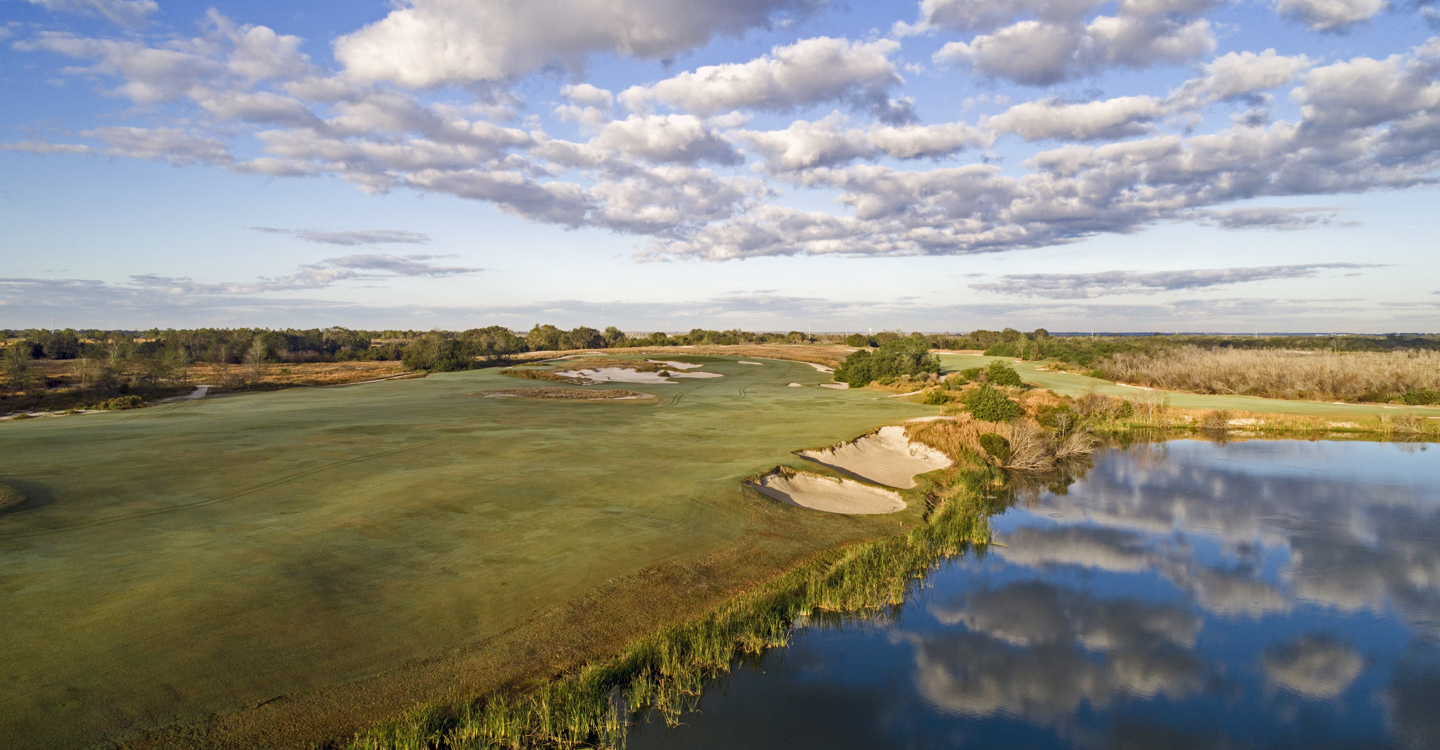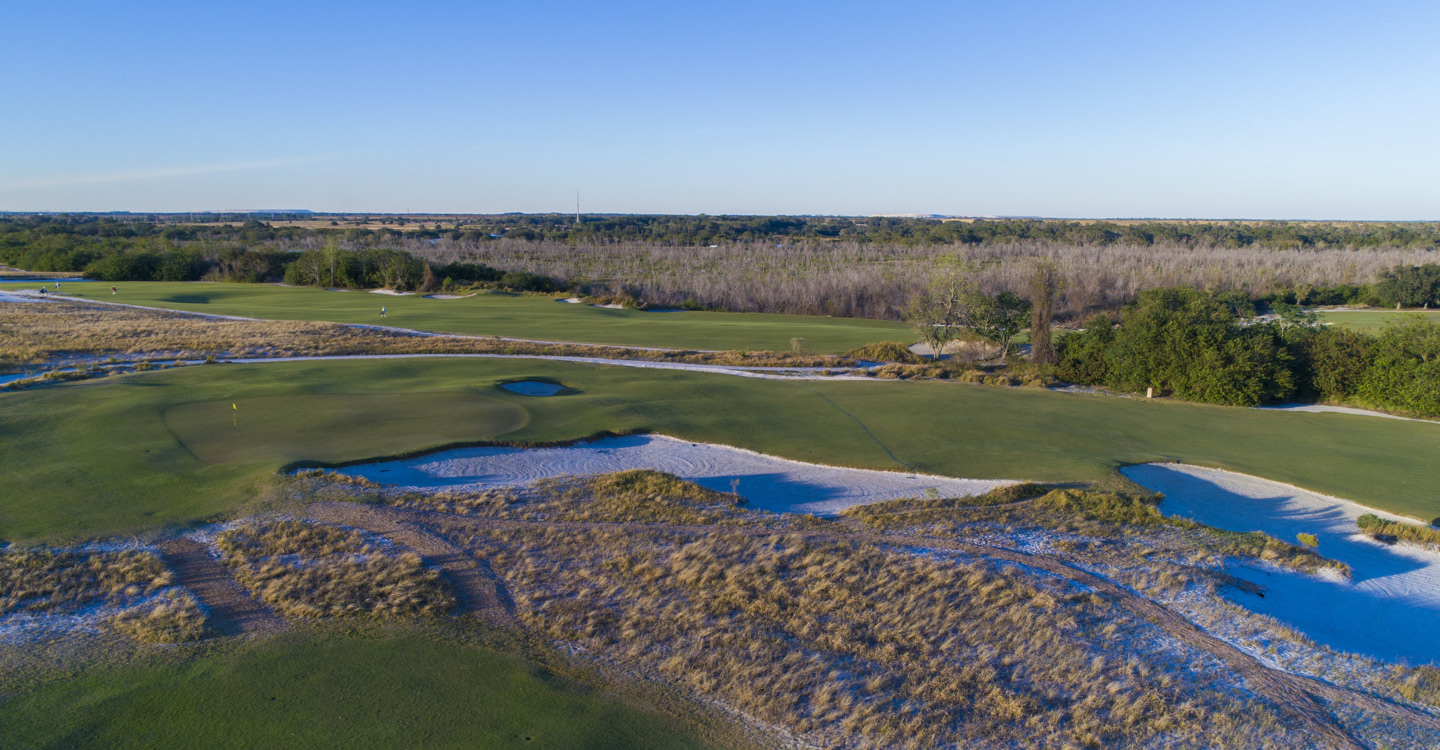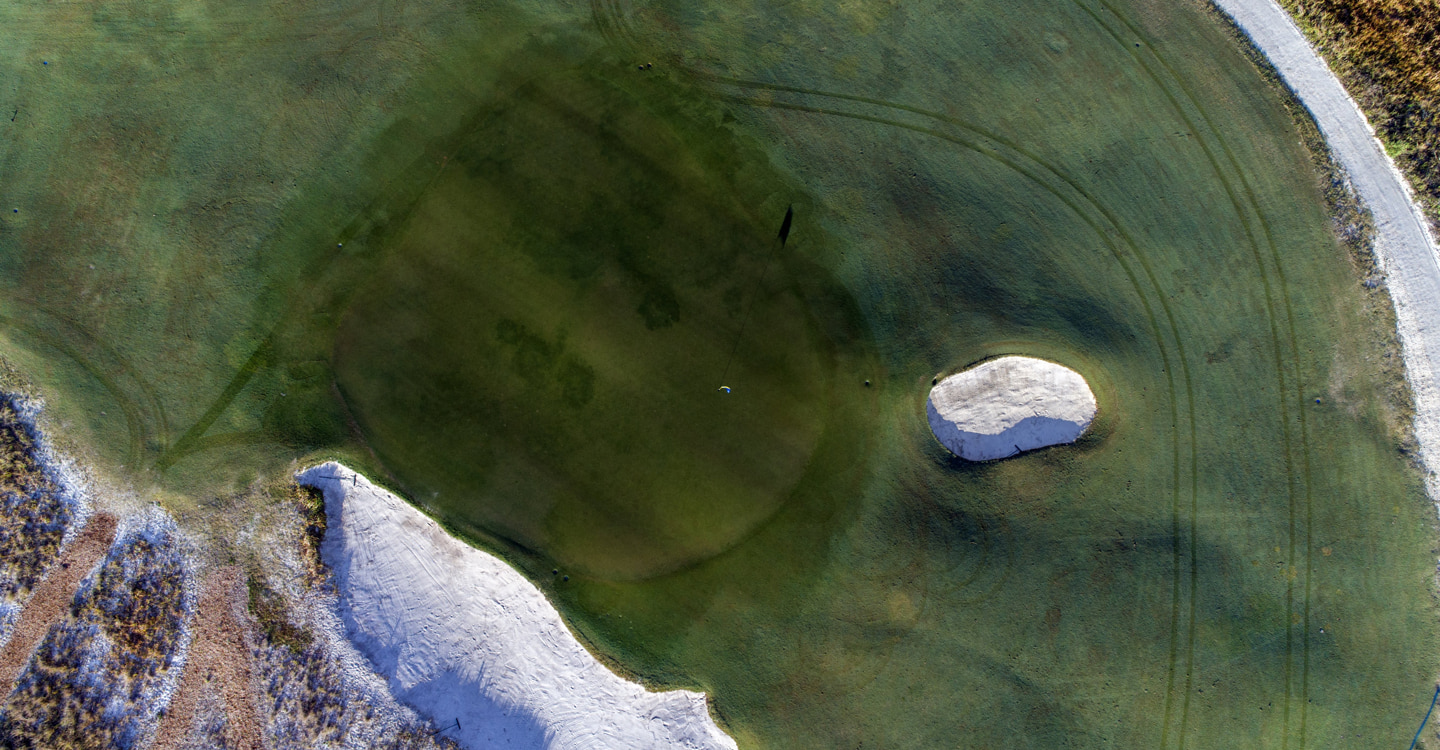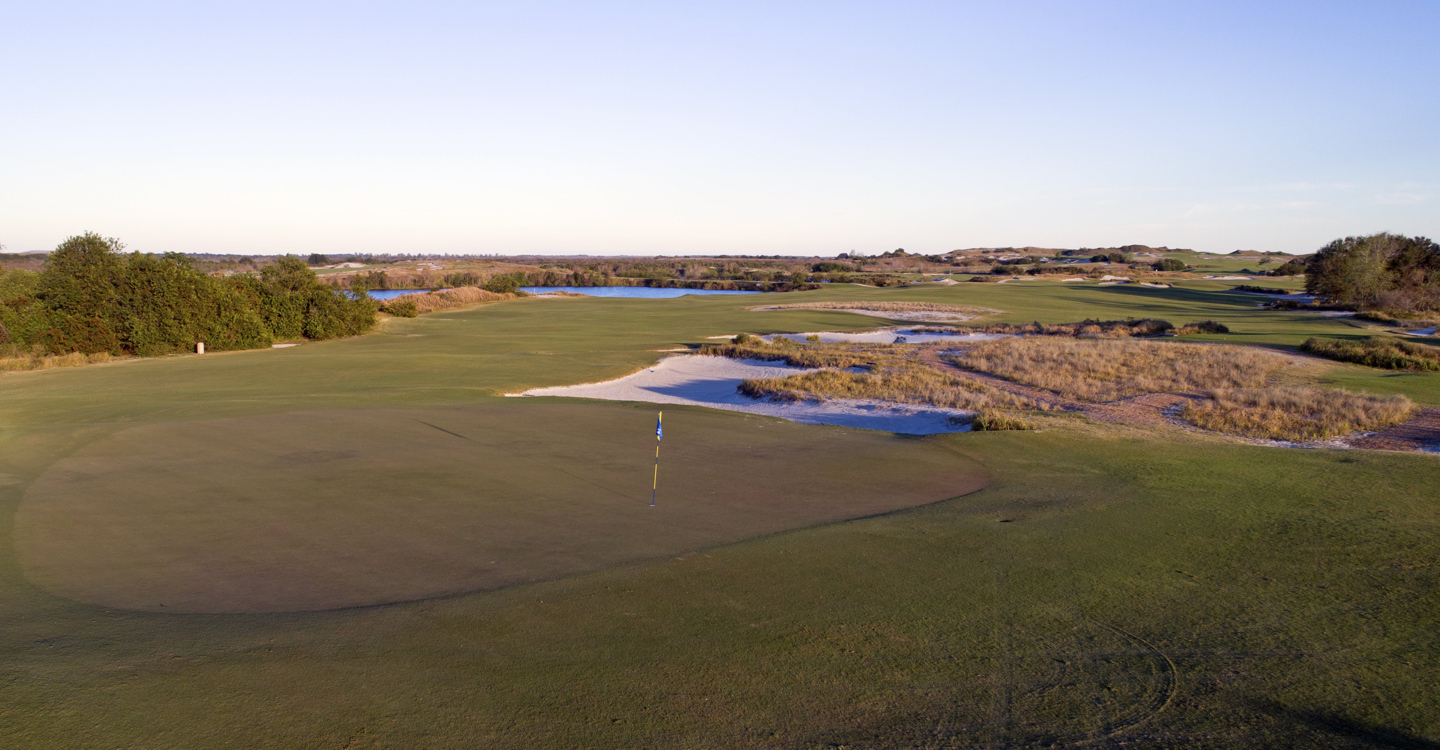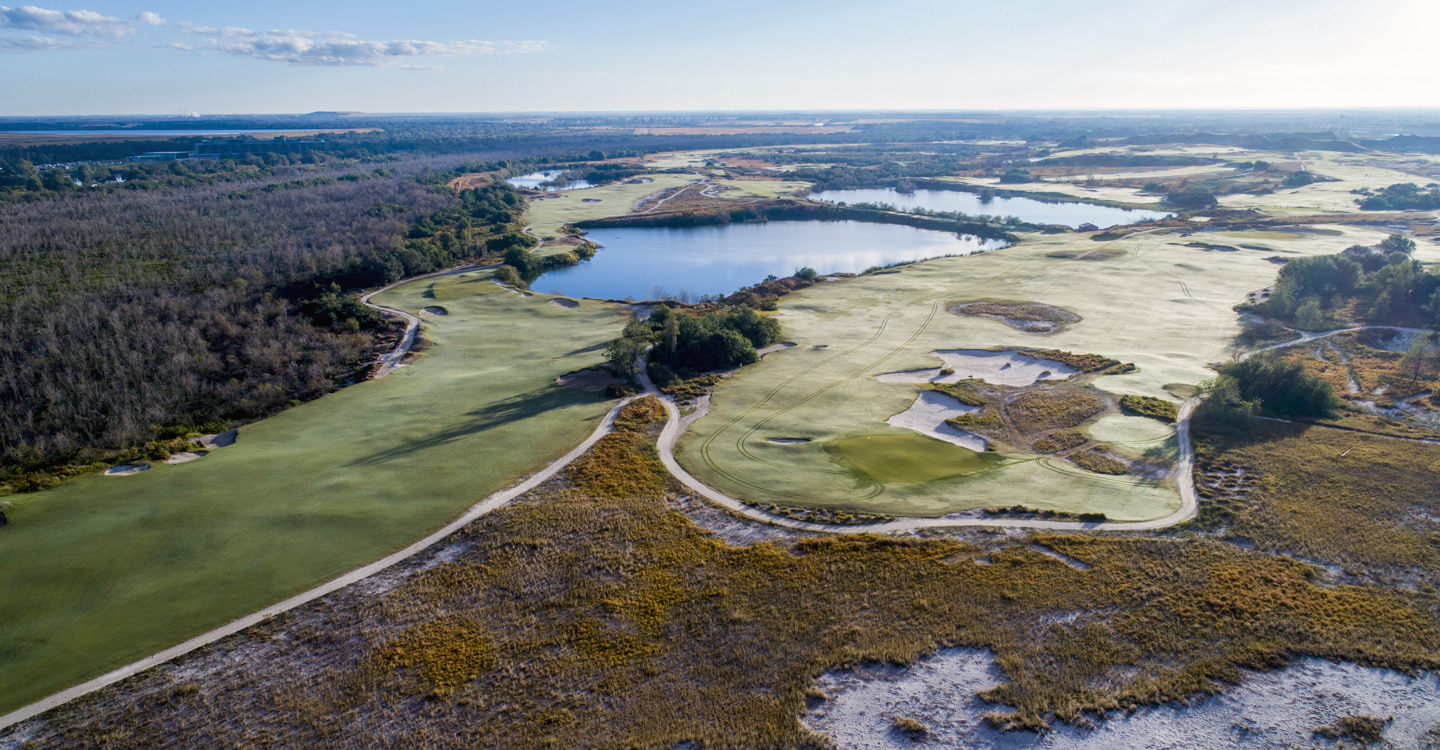Streamsong Blue was designed by one of today’s most prolific architects, Tom Doak. A man whose catalog of work includes highly acclaimed courses such as Pacific Dunes, Old Macdonald and Ballyneal.
Over the years, I have been fortunate to play a number of Tom Doak golf courses. These experiences have allowed me to begin to gain a deeper understanding of the venerable architect’s design philosophies and tendencies. I’ve found that his designs are generally centered around the principles of playability and strategy. Doak consistently delivers projects that exemplify these principles, often using the recipe of width and bold green complexes. Width allows Doak to create the feeling of playability for average players, but for the great players, he throws a centerline bunker or has a specific side of the fairway which is the preferred angle of approach to his wild greens. Doak’s greens are often large and heavily contoured with multiple shelves. These greens wreck havoc on the great players who have to hit pinpoint shots in order to score. Meanwhile, the average player isn’t as dramatically affected because they are often chipping or putting from a distance. This recipe is one that Doak employs to perfection at Streamsong Blue.
The Blue course winds around the inside and more dramatic piece of the property, with the Red routed around an outer loop. The routing slider below illustrates how the two courses interact with one another on this parcel, which is large but retains a feeling of intimacy.
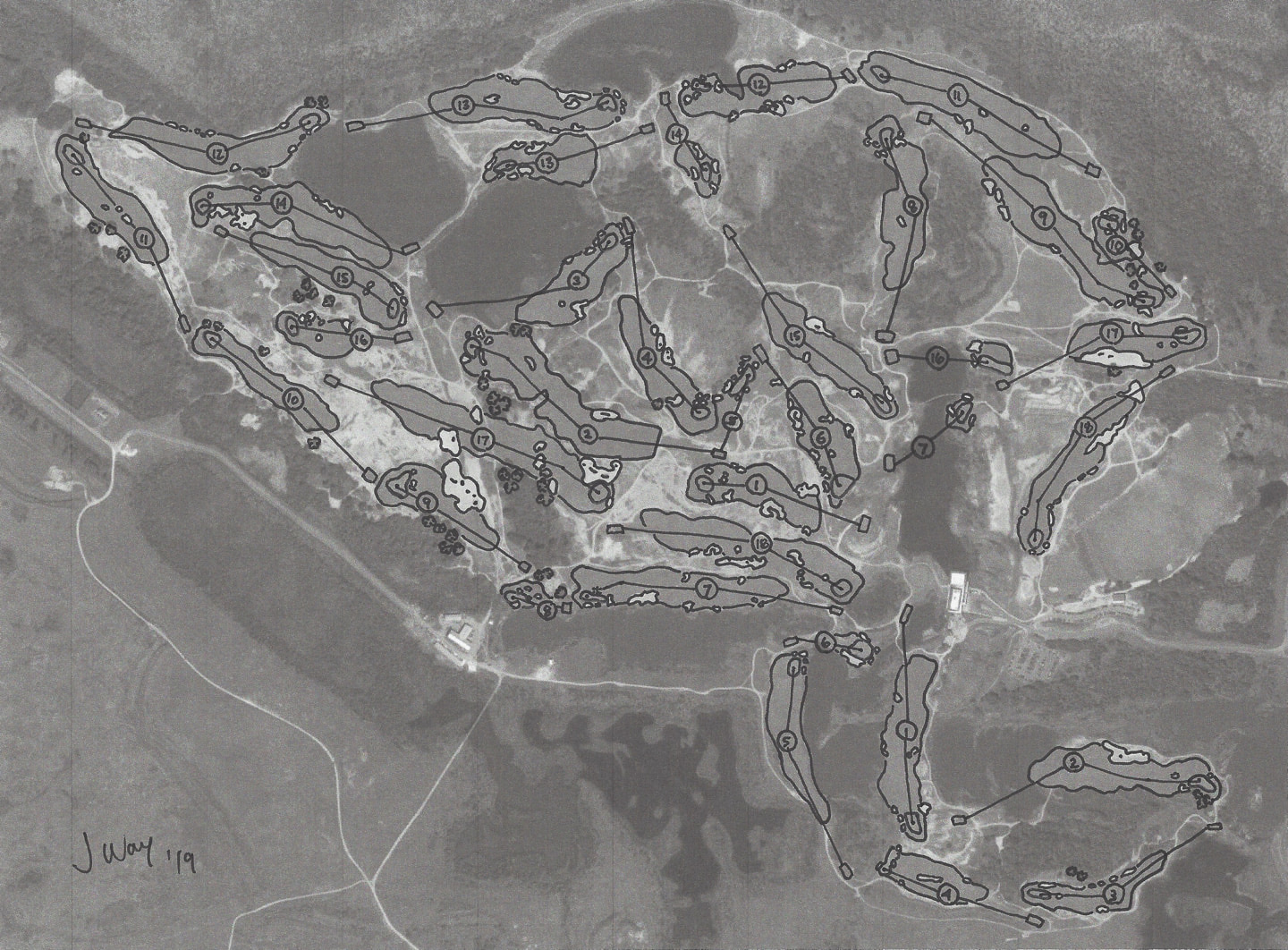
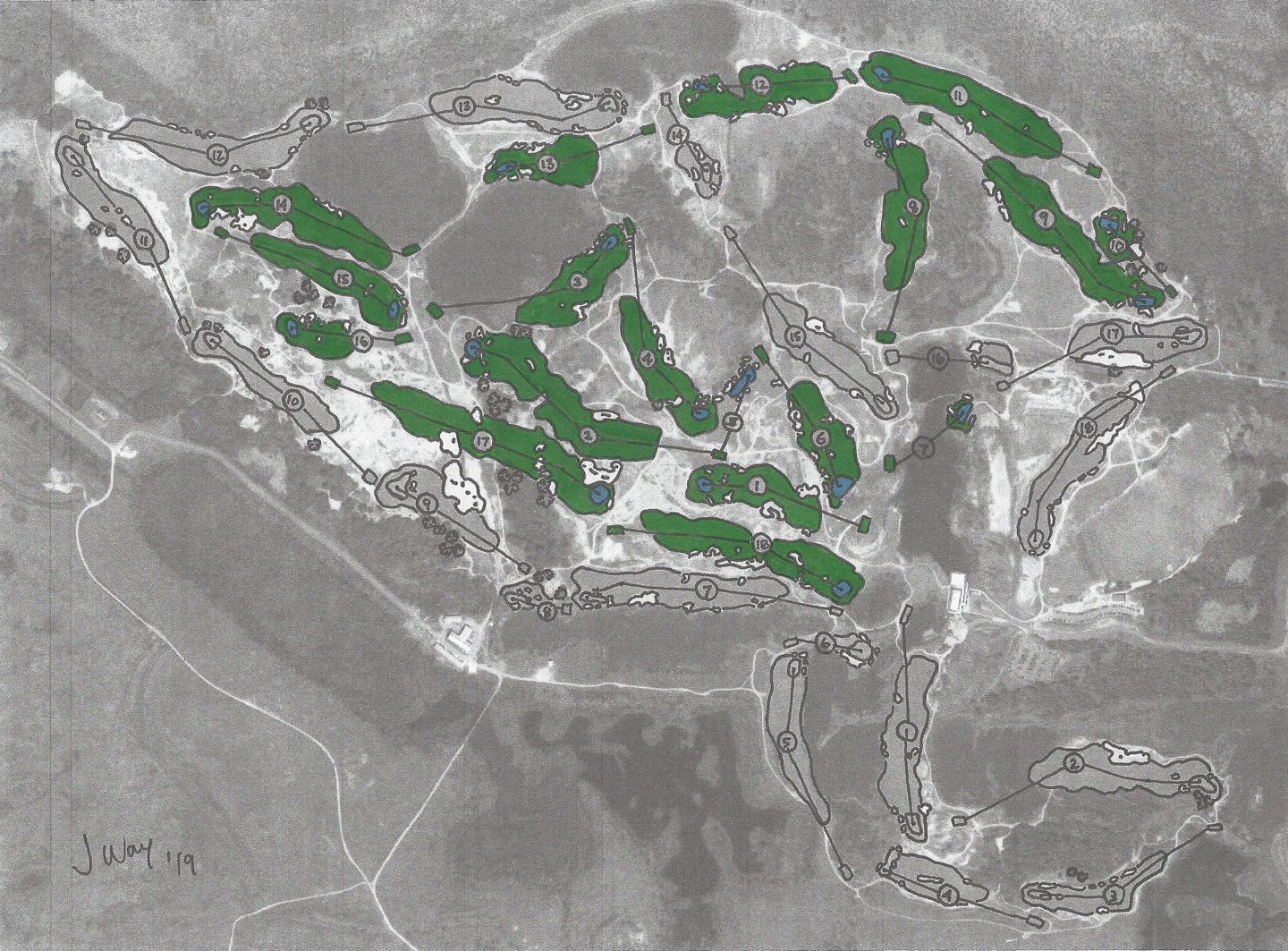
The sloping, sandy land allowed Doak to create dramatic vistas and thrilling shots up and down these ledges. However, where the architect exhibits his true skill is on the flatter pieces of the property, where he was able to generate interesting holes with unique green complexes, risk-reward shots and old school trusted template designs.
On my first visit to Streamsong Resort to play the Blue course with photographer Christian Hafer (@hafe_life), we were treated to a foggy early morning tee time which made seeing more than 50 yards in front of us tough for the first few holes. The benefit of the conditions was that over the first hour, the fog slowly lifted revealing an ethereal quality to the course has.
On subsequent visits to replay the Blue, the weather was more typically filled with Florida sunshine. The drone flew, allowing me to better capture the strategy and contour that Doak and the Renaissance team baked into the course.
HOLE #1 – 338 yards – par 4
Tom Doak didn’t waste any time showing off the dramatic land at Streamsong as the first tee sits on a 50’ sand dune. Players hit their tee shot down to a wide fairway which is framed by large fairway bunkers on both the right and left side. Depending on the pin location, the right or the left side of the fairway will be preferred and a good drive will leave a little wedge shot into the green which plays slightly uphill. The green is guarded by a lone bunker on the left side and a large sand dune on the right, and is surrounded by runoff areas that penalize a shot that misses long, right or left.
-
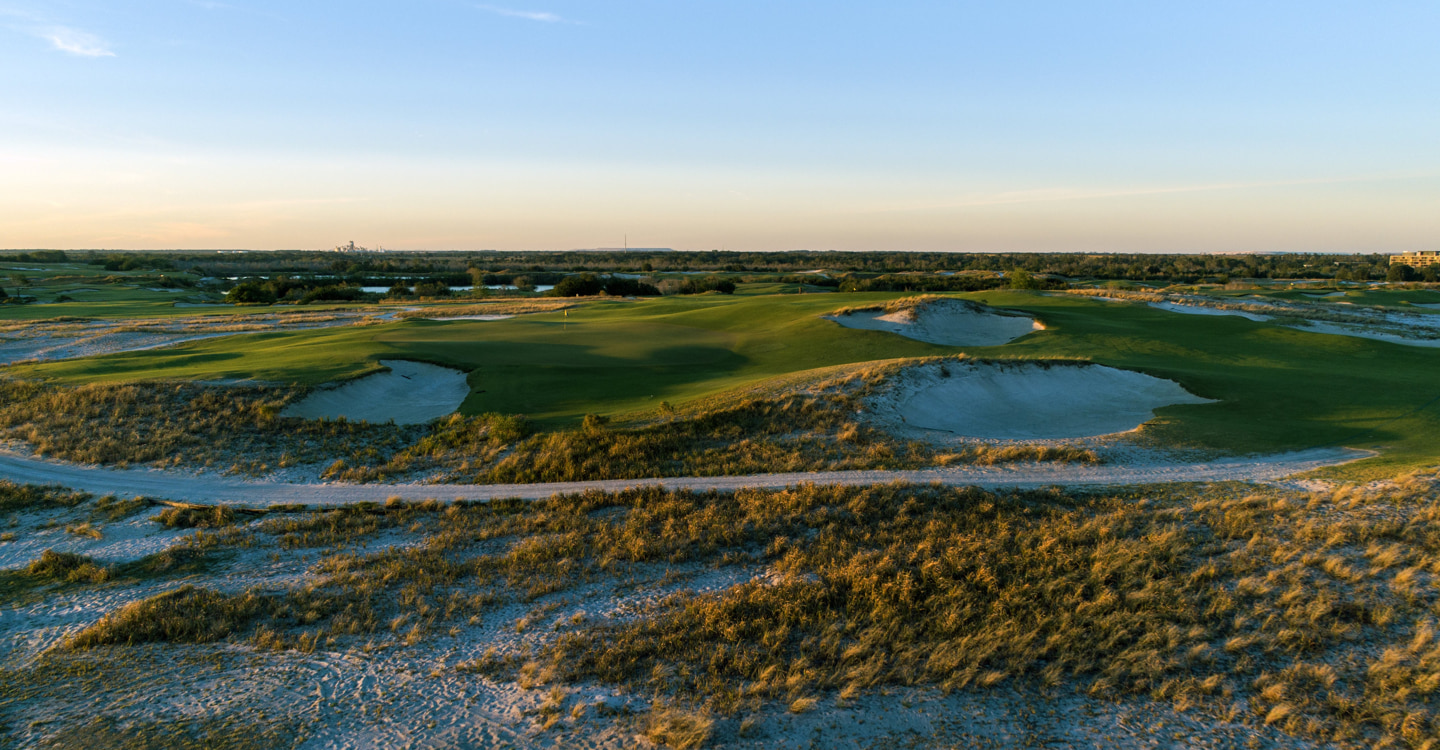
The runoff left of the green leaves tricky recoveries
-
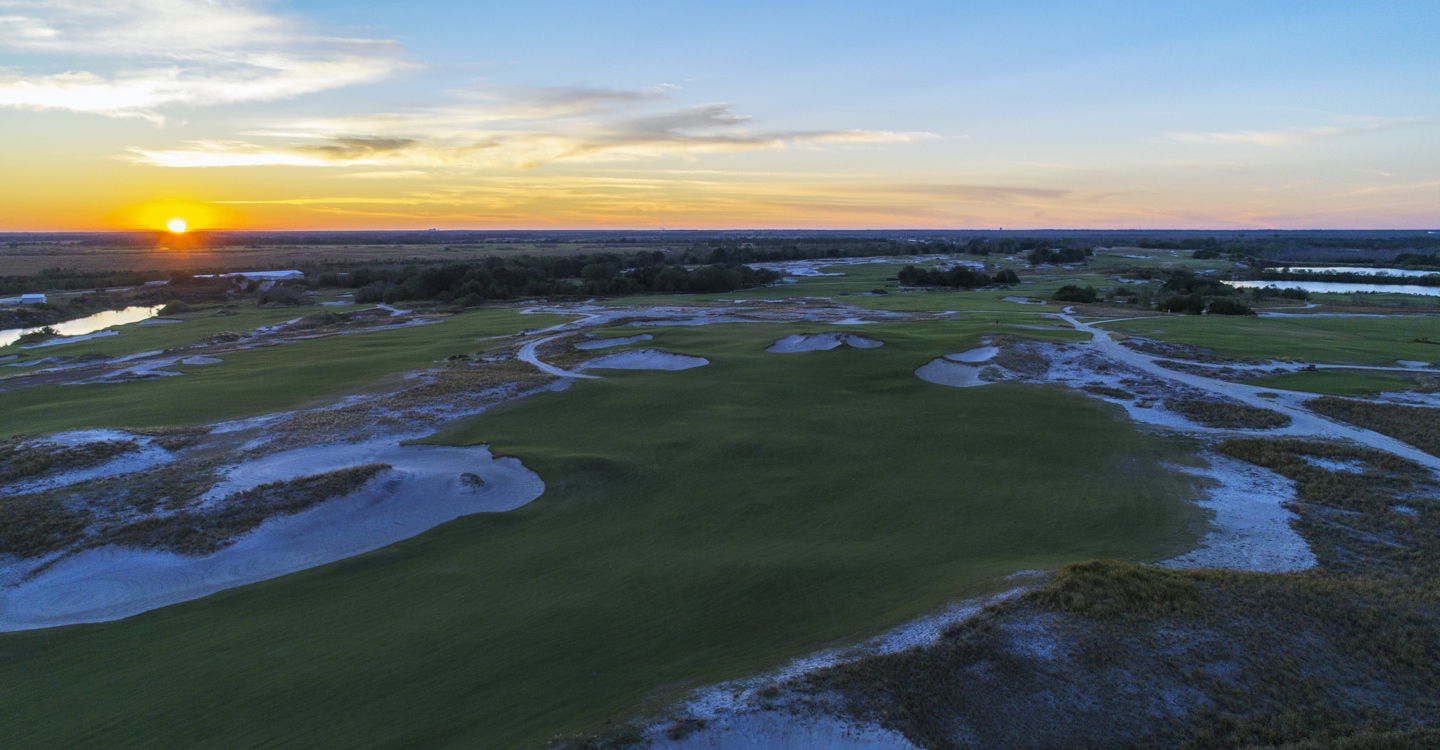
The approach into the 1st
-
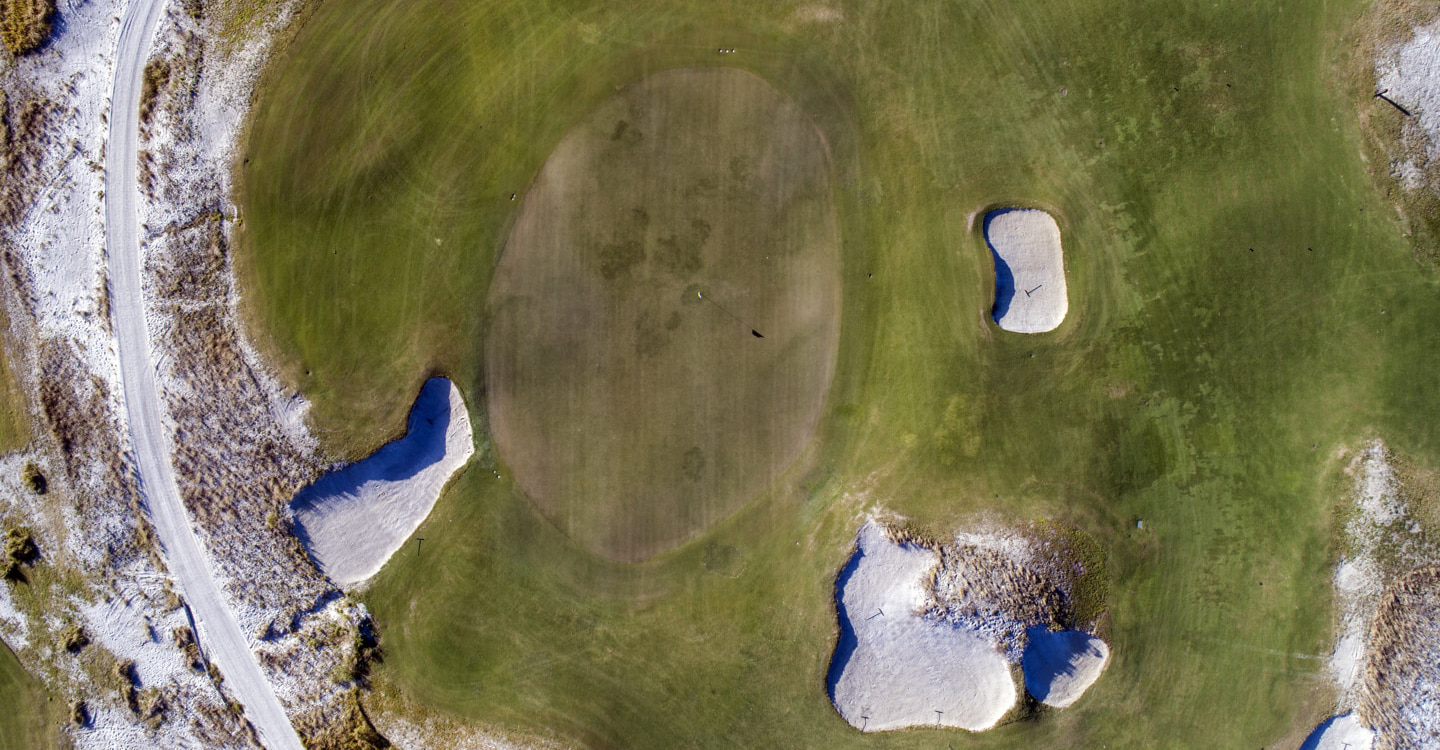
The well defended putting surface from above
HOLE #2 – 554 yards – par 5
The 2nd tee offers up vistas of what lies ahead. The par-5 2nd is another great birdie opportunity as the hole plays downhill and has an extremely wide fairway. It is a great example of Doak blending playability and strategy. The key to the second hole is hitting the correct side of the fairway to set up an angle to the green for your second shot. Doak splits the green into two distinct segments with a large and deep greenside bunker. If the pin is left, you want to be on the left side of the fairway. If the pin is right, you want to be on the right side.
-
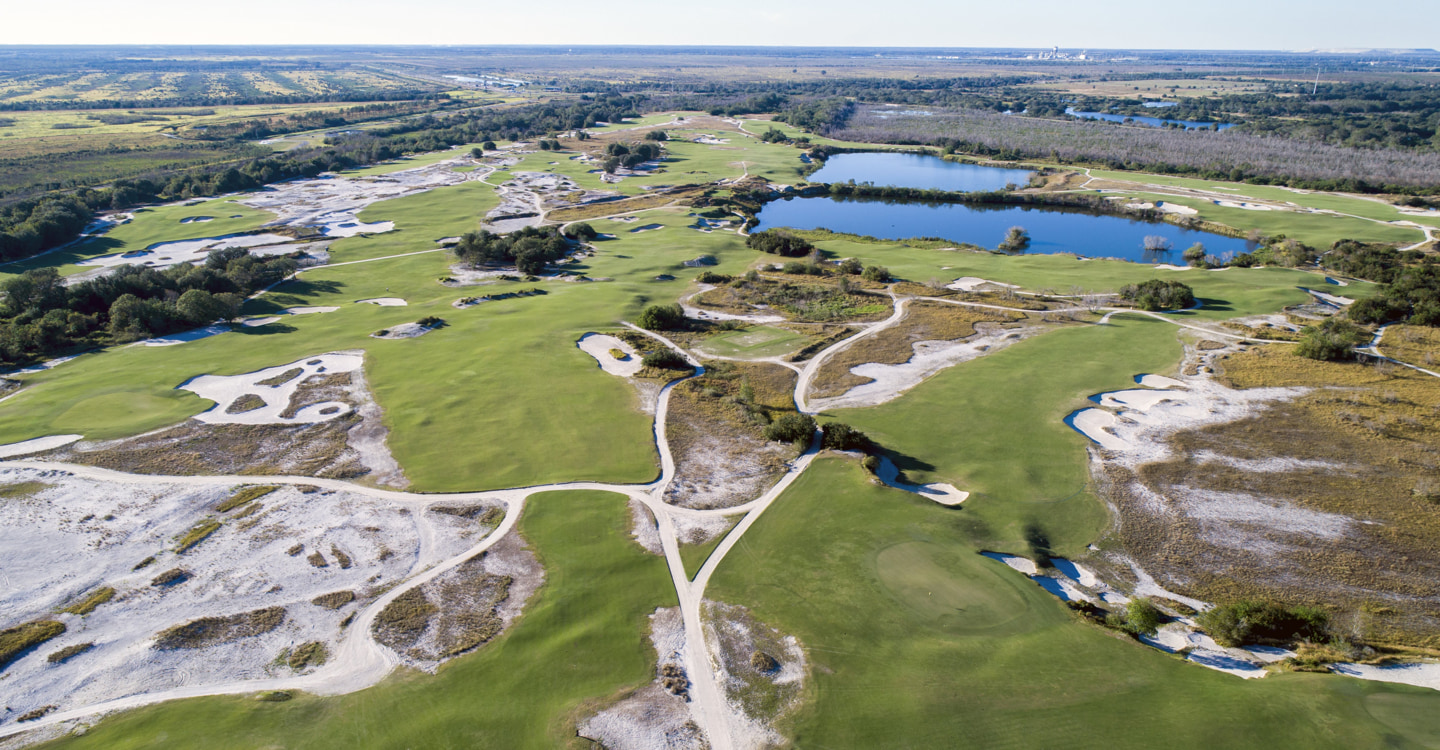
The 2nd fairway snakes up the middle toward the green
-
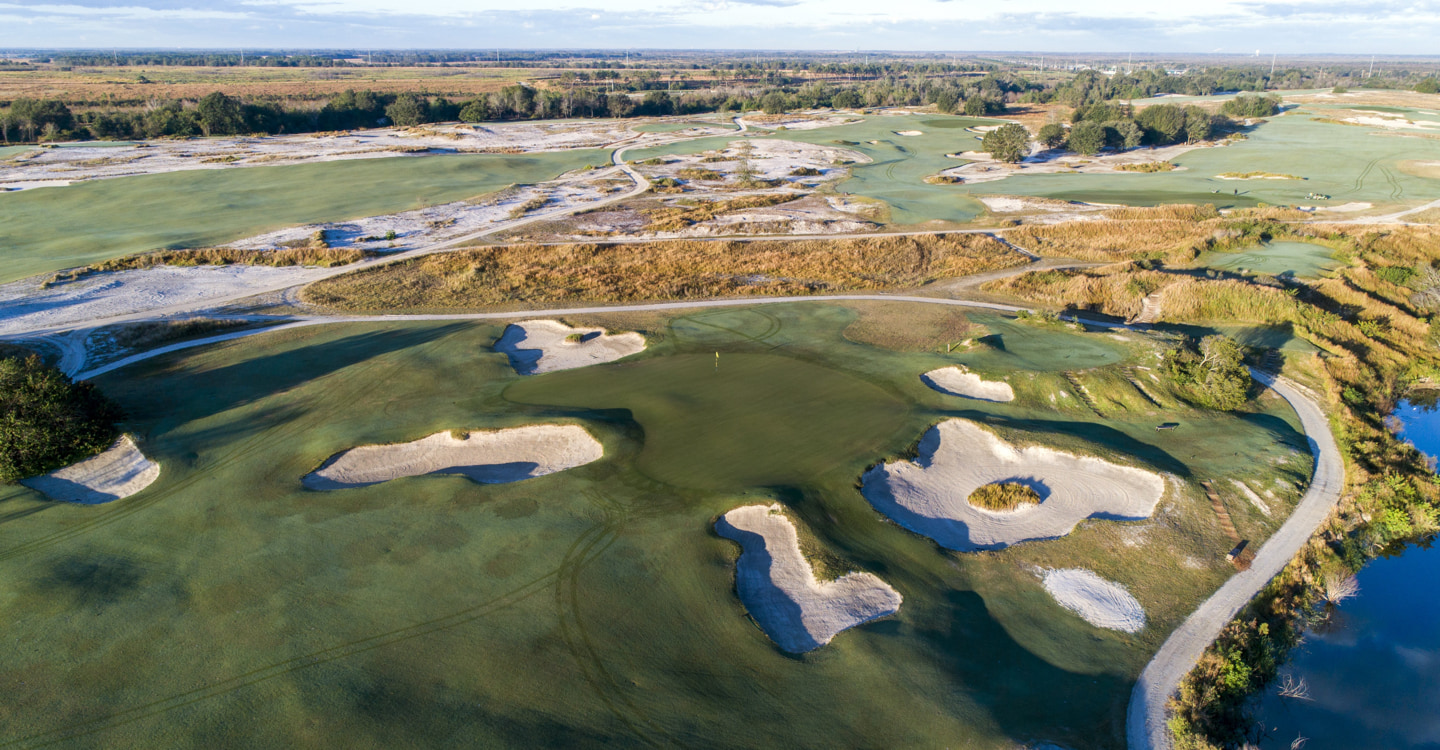
Short of the putting surface
-
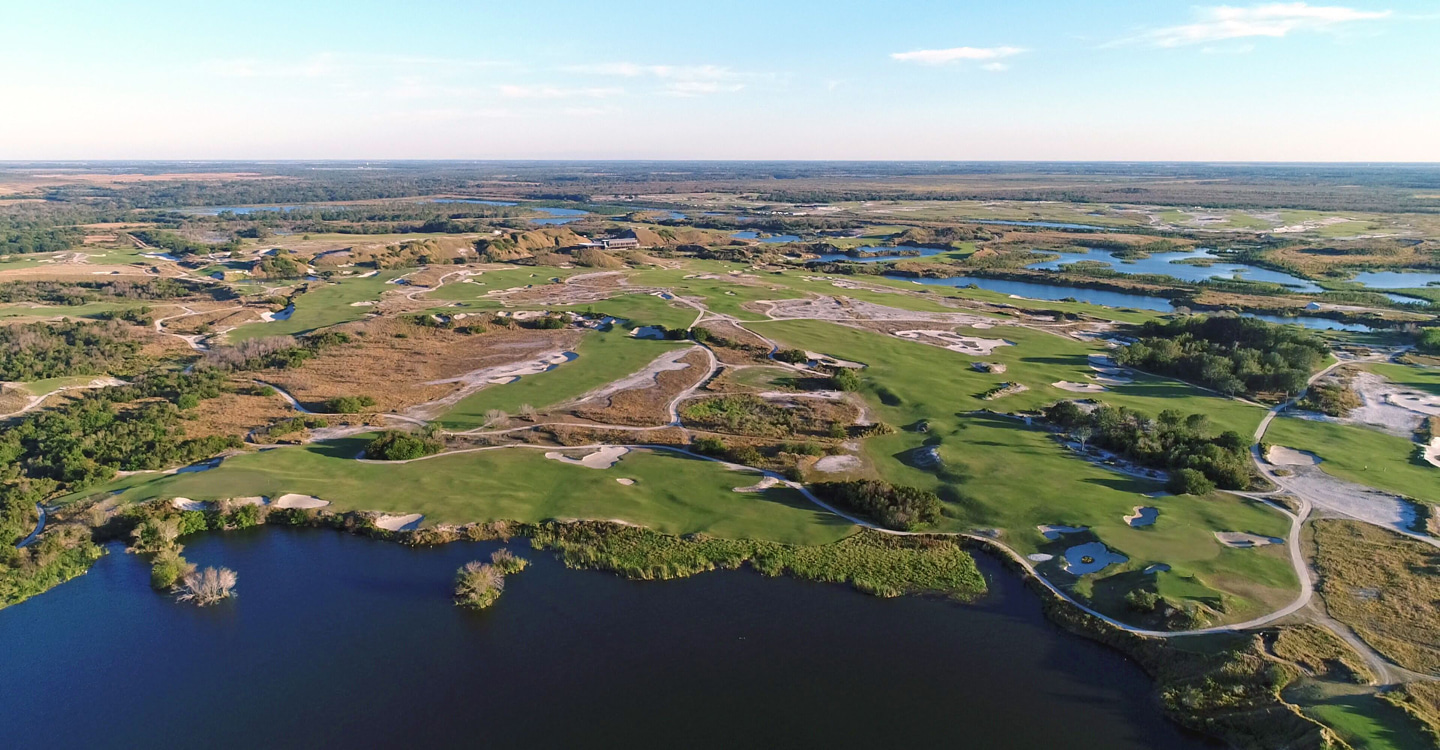
Looking back reveals how tightly against the lake the green is sited
HOLE #3 – 418 yards – par 4
The 3rd hole is a beautiful par-4 that starts in a low part of the property and runs back up a gentle hill. The tee shot has a lake which cuts diagonally in front and down the left side, with an abundant amount of fairway to the right. The ideal line is up the left as it shortens the hole and provides a great angle of approach, but that line brings the hazard into play. The green sits on a plateau with a steep runoff area in front and on the right, while the left side is guarded by a bunker and the hazard. The putting surface has a different ledges that make distance control vital on the uphill approach shot.
-
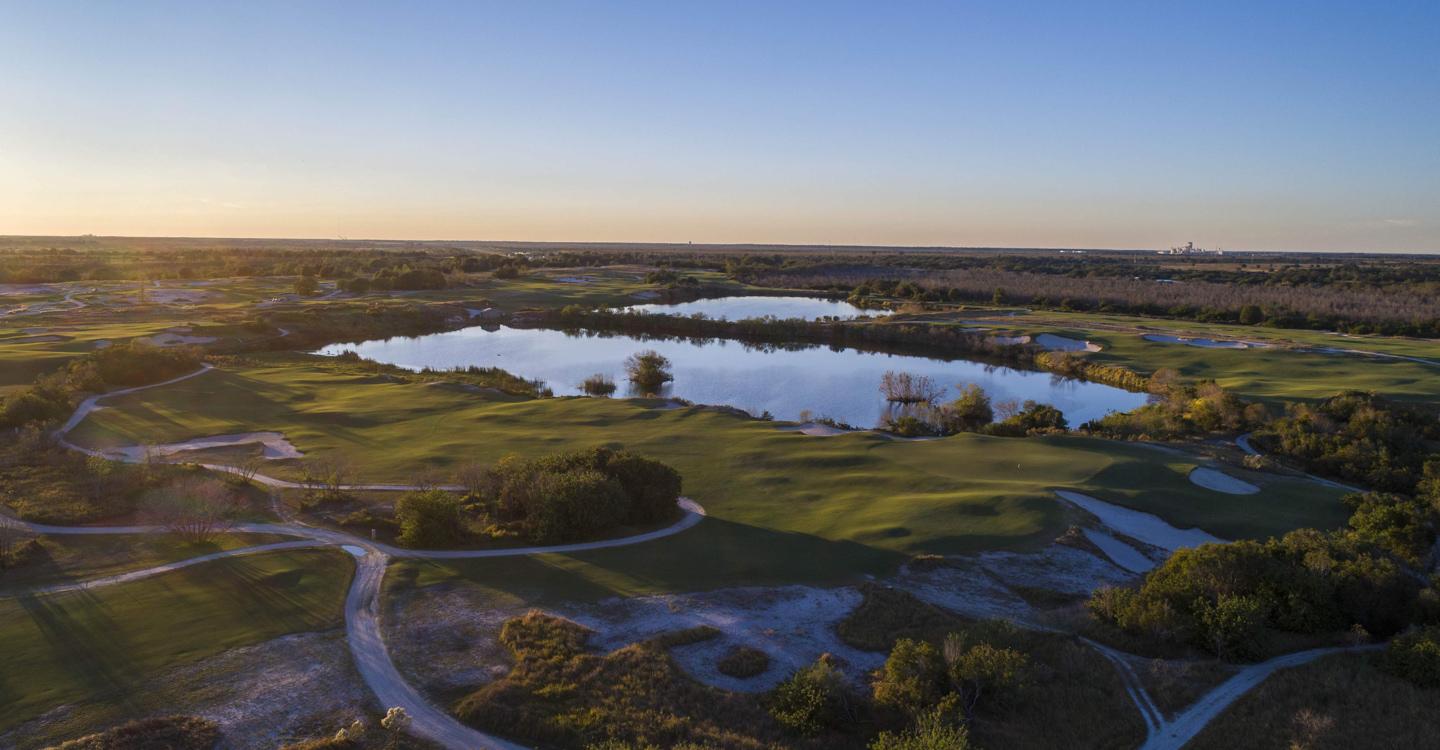
Back right of the green on the challenging but beautiful 3rd
HOLE #4 – 442 yards – par 4
Doak continues to move back up the ridge with the uphill and dramatic par-4 4th hole. Playing at 442 yards and up a pretty significant hill, the 4th gives you everything you can handle. The tee shot is friendly and wide with the favored line up the left side to setup the beautiful approach shot. Much like the Red course, Doak shows off the property and the massive scale of the sandy dunes on the 4th’s approach shot by guarding the front right and left sides of the green with large deep bunkers. The green is no picnic either as it slopes significantly from back to front.
-
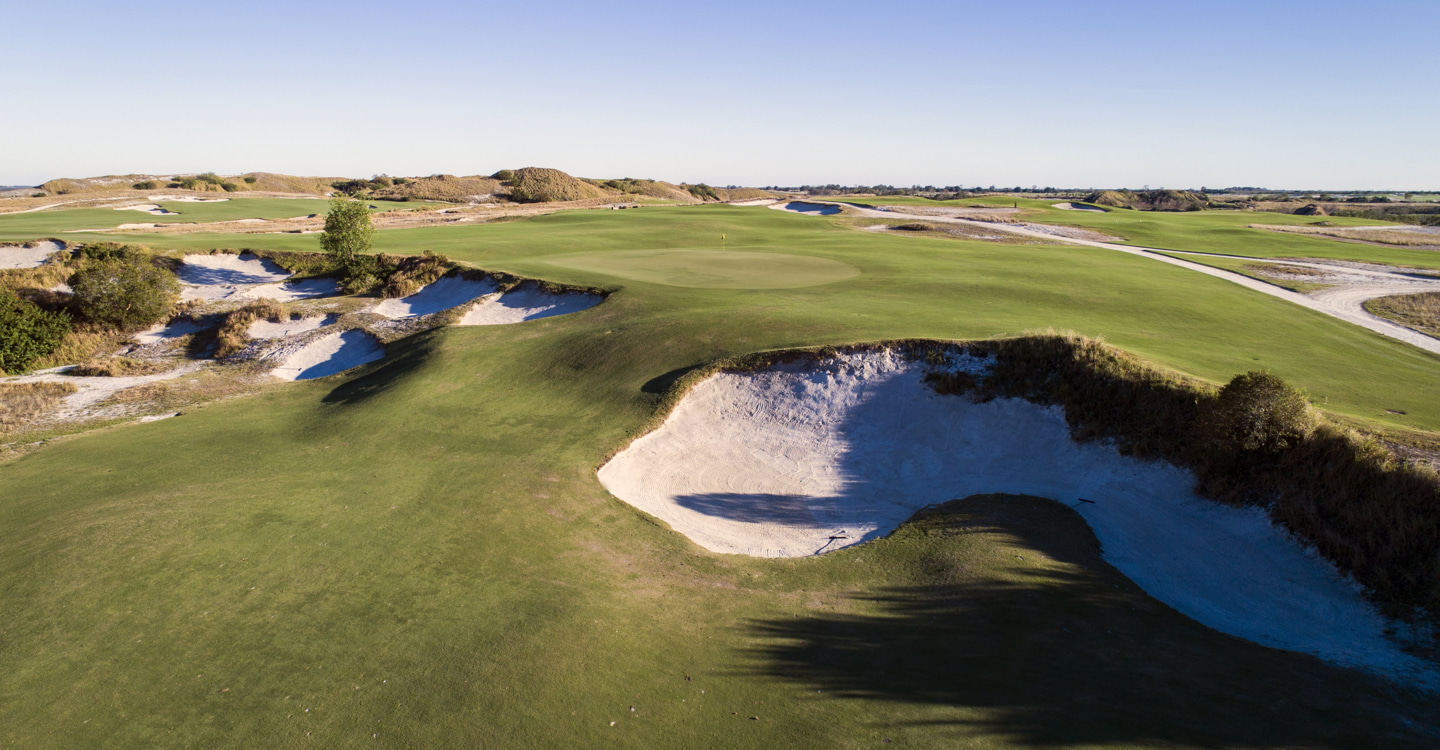
The imposing bunker short right of the 4th green
-
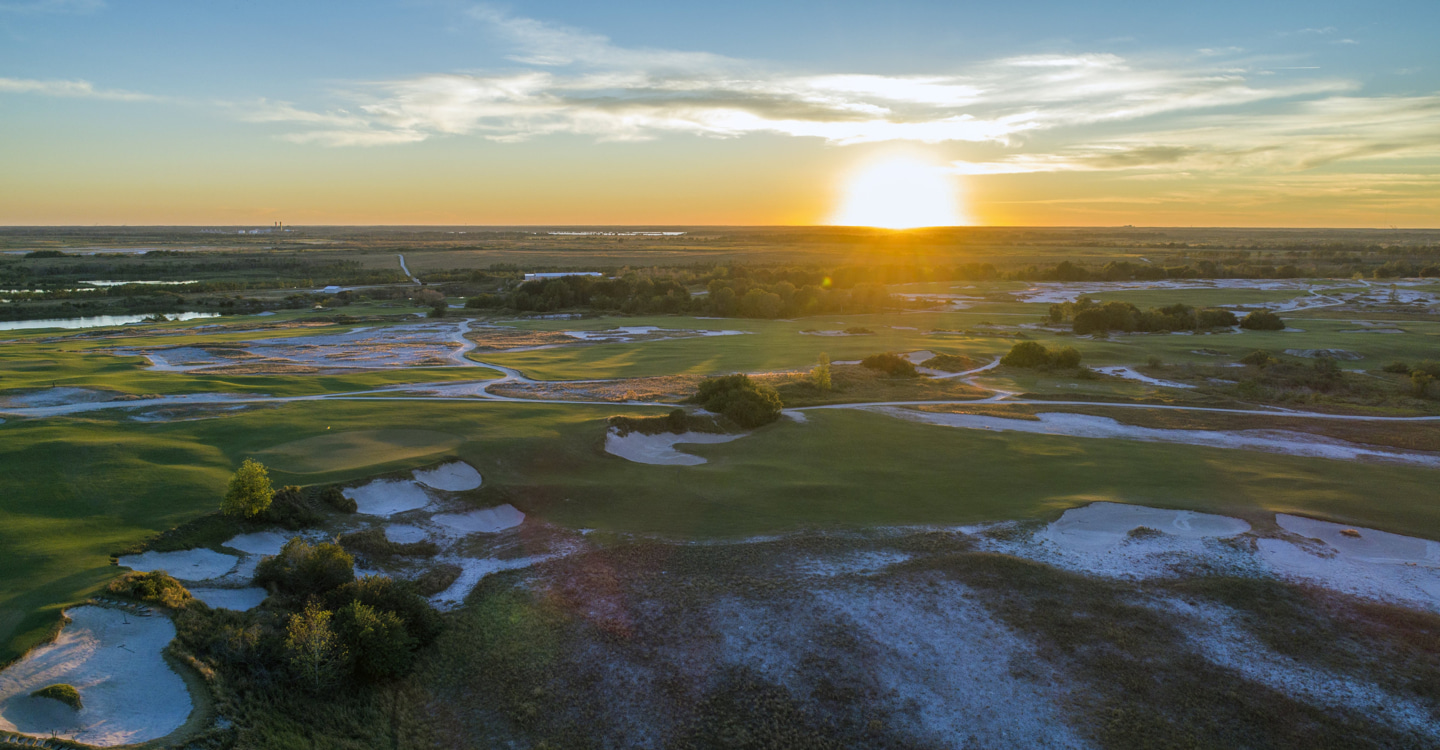
Approaching from the left
-
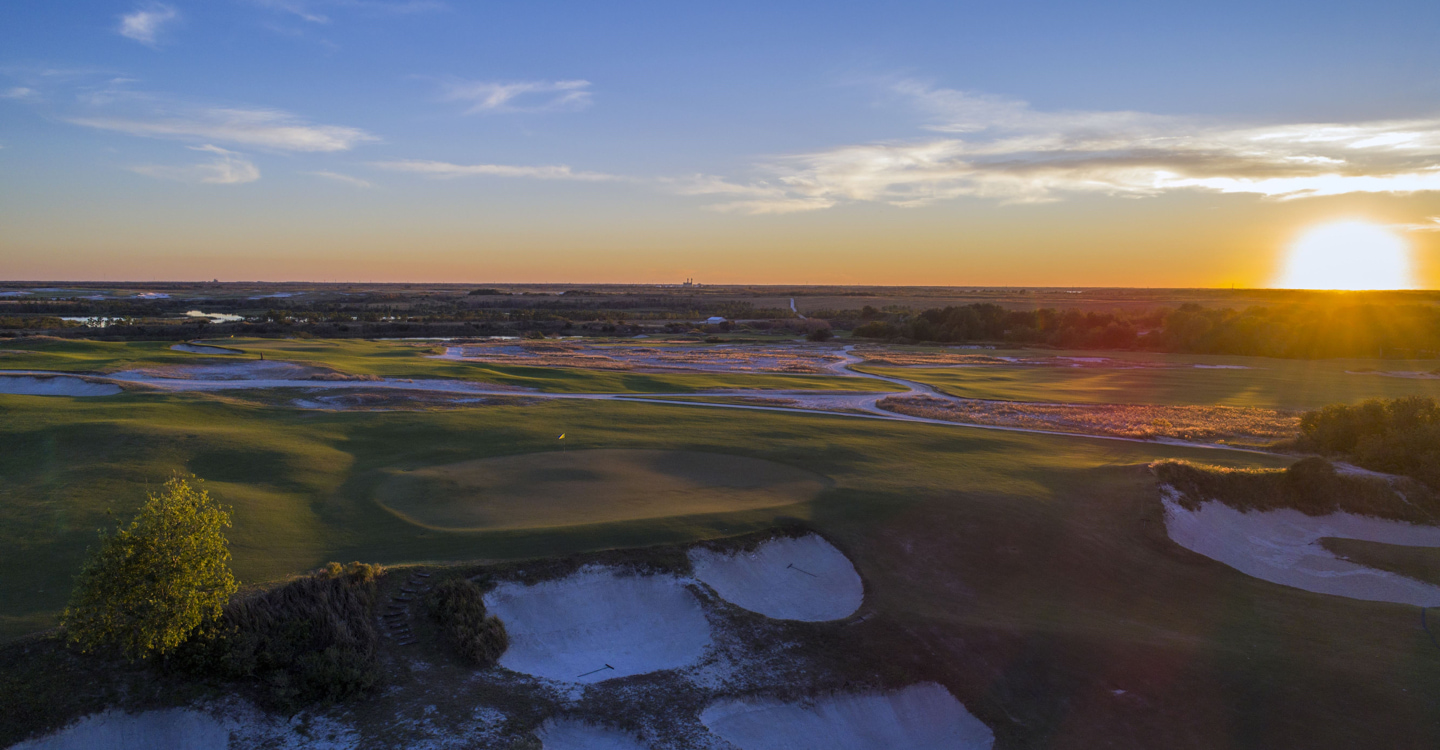
A set of bunkers guards the front left as well
-
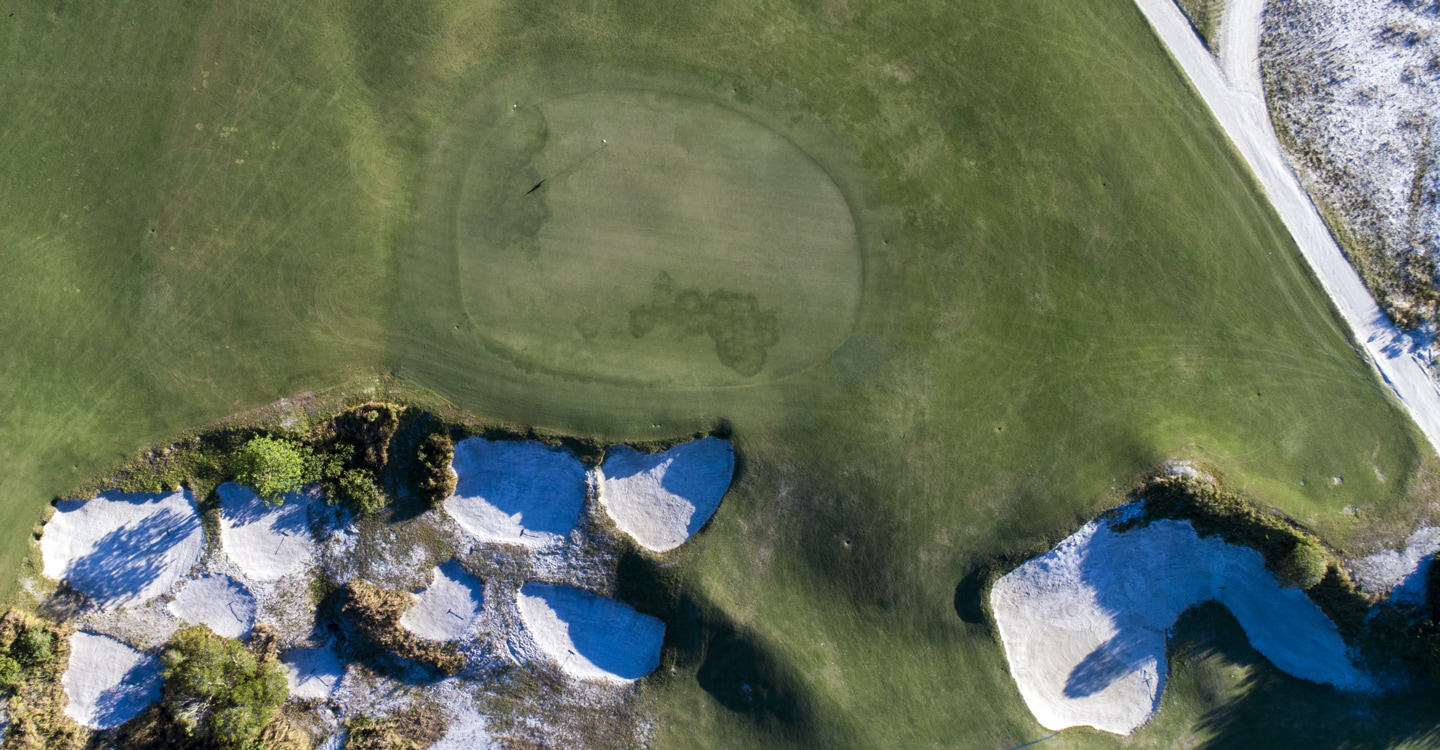
The view above highlights the green-front defenses
HOLE #5 – 157 yards – par 3
The previous hole brings you back to the top of the ridge where the course began, where the beautiful short par-3 5th is found. The hole can play a variety of yardages because of its 74-yard deep green! The green has abundant slopes and segments with the back half funneling to a bowl on the right side and the front half funneling to the middle of the narrow target. The 5th demands a quality golf shot with both distance and spin control.
-
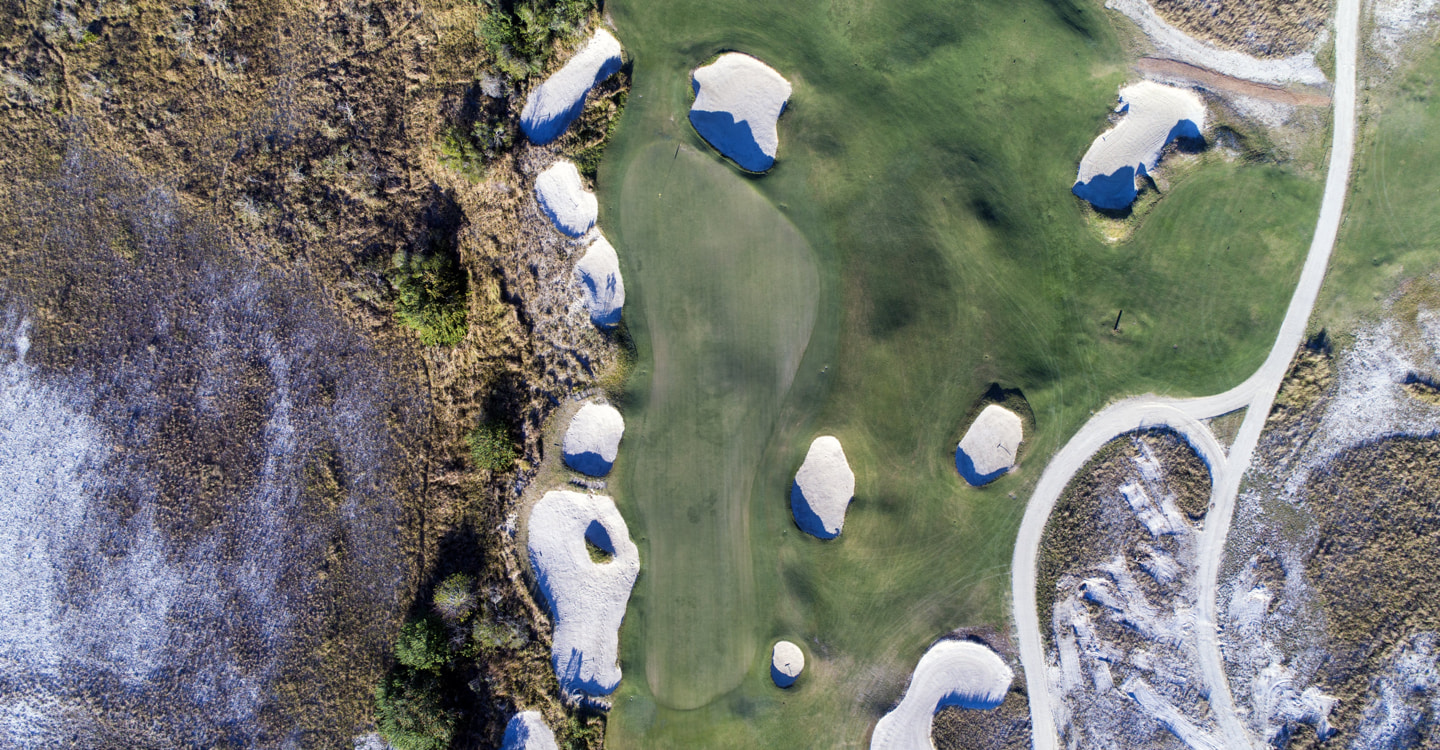
The massive green creates wonderful variety
-
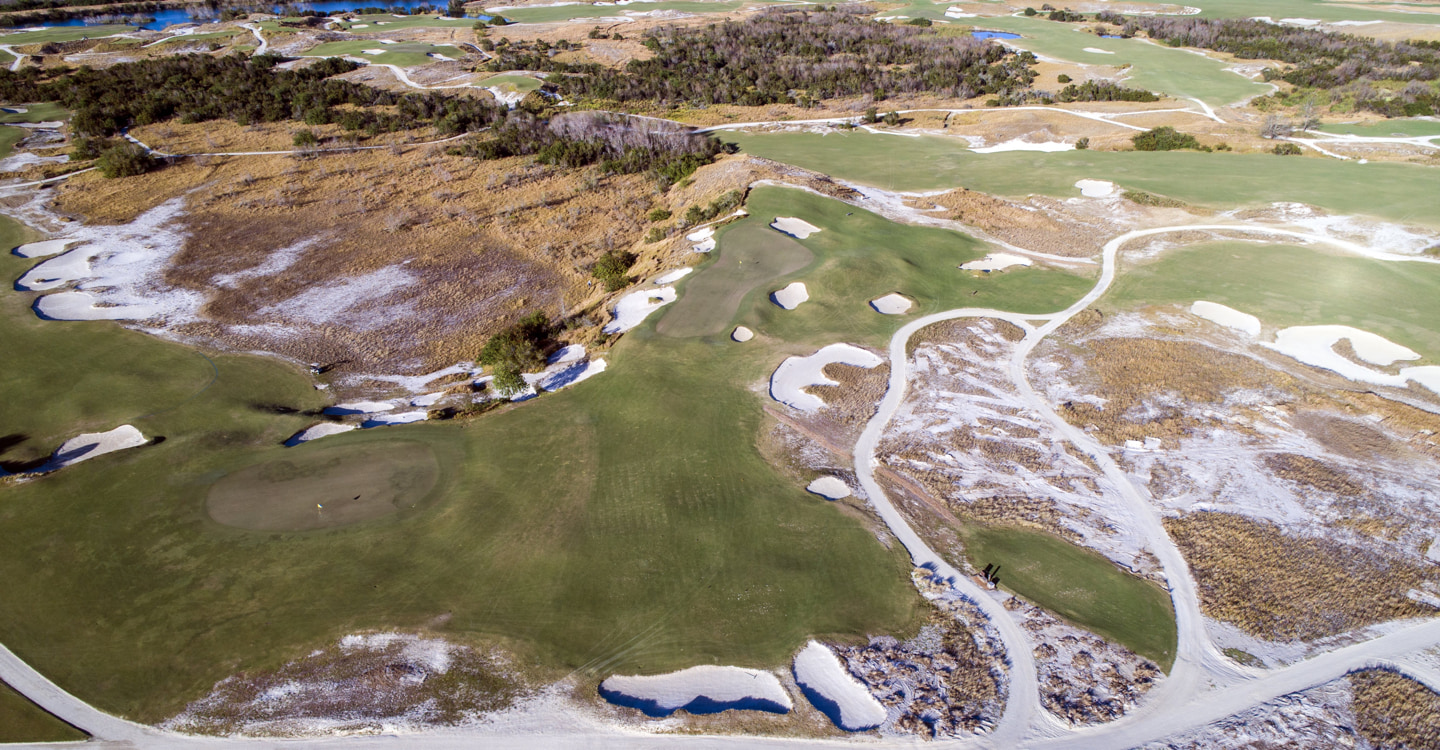
A solid tee ball is demanded on the 5th
-
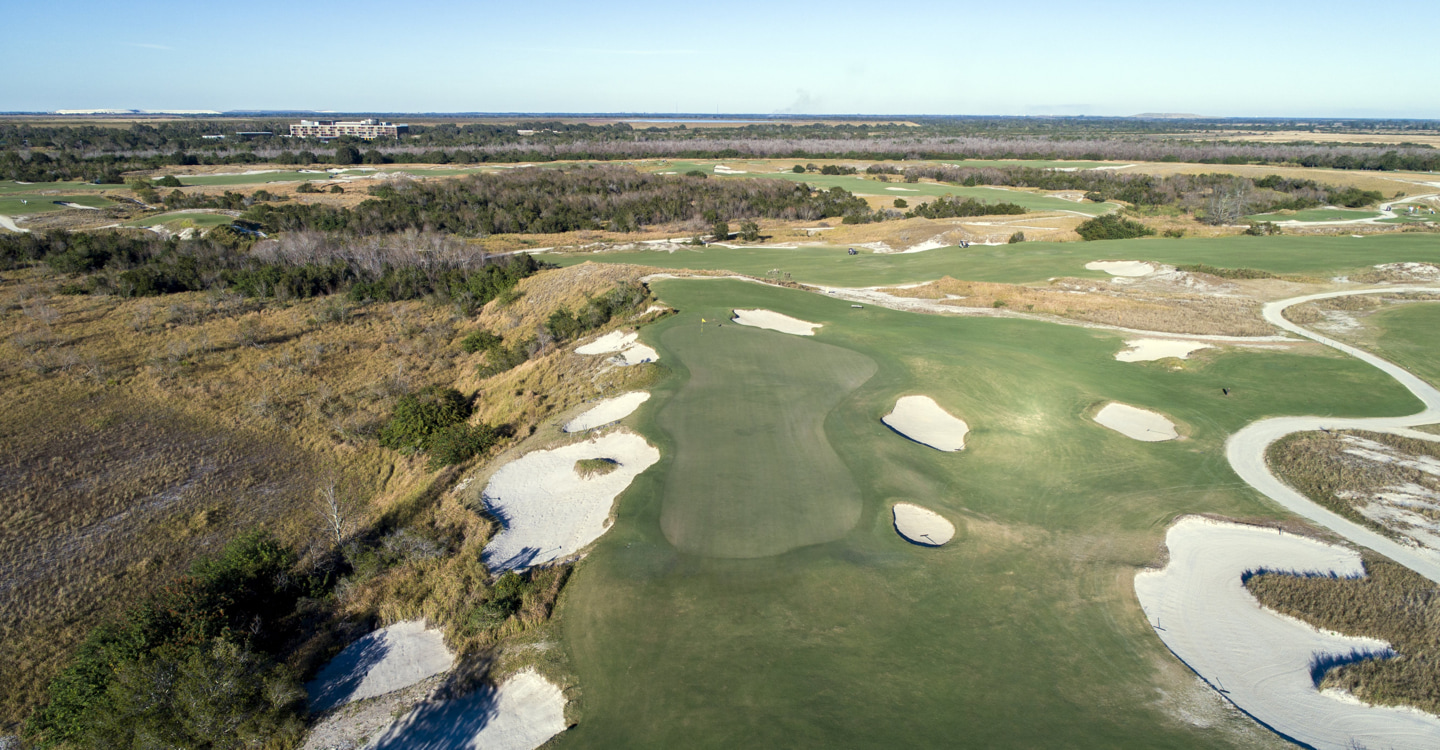
Peril awaits in the bunkers that grab errant shots
-
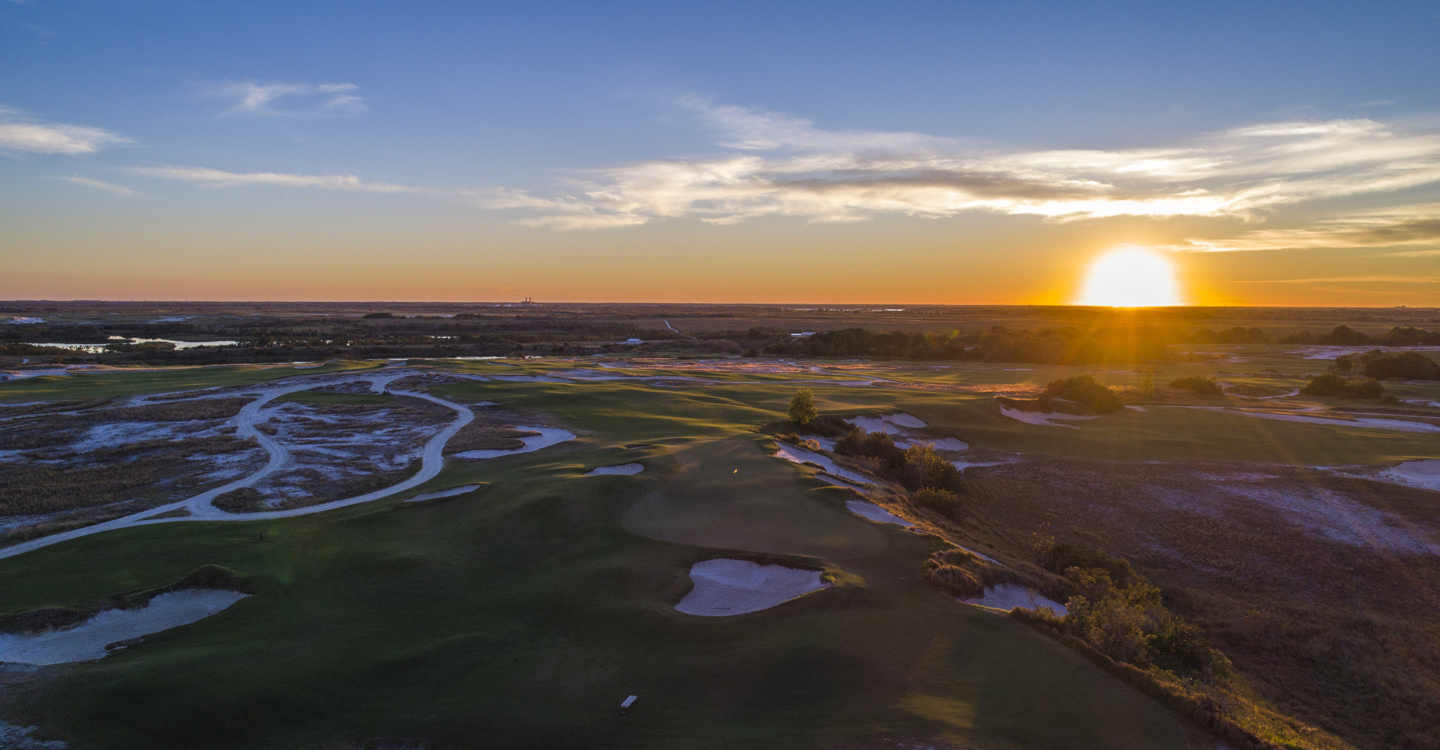
One of Doak's finest one-shotters
HOLE #6 – 345 yards – par 4
After the difficult stretch from the 3rd to the 5th, Doak gives a great chance to get one back at the short par-4 6th. The defining characteristic of the hole is the massive sand dune which sits behind the green. This hole has shades of a Macdonald/Raynor template strategy. Off the tee, the key is to avoid the plethora of fairway bunkers. Well played tee shots will leave a short iron or wedge into the green which sits in a bit of a valley with runoff areas all around it.
-
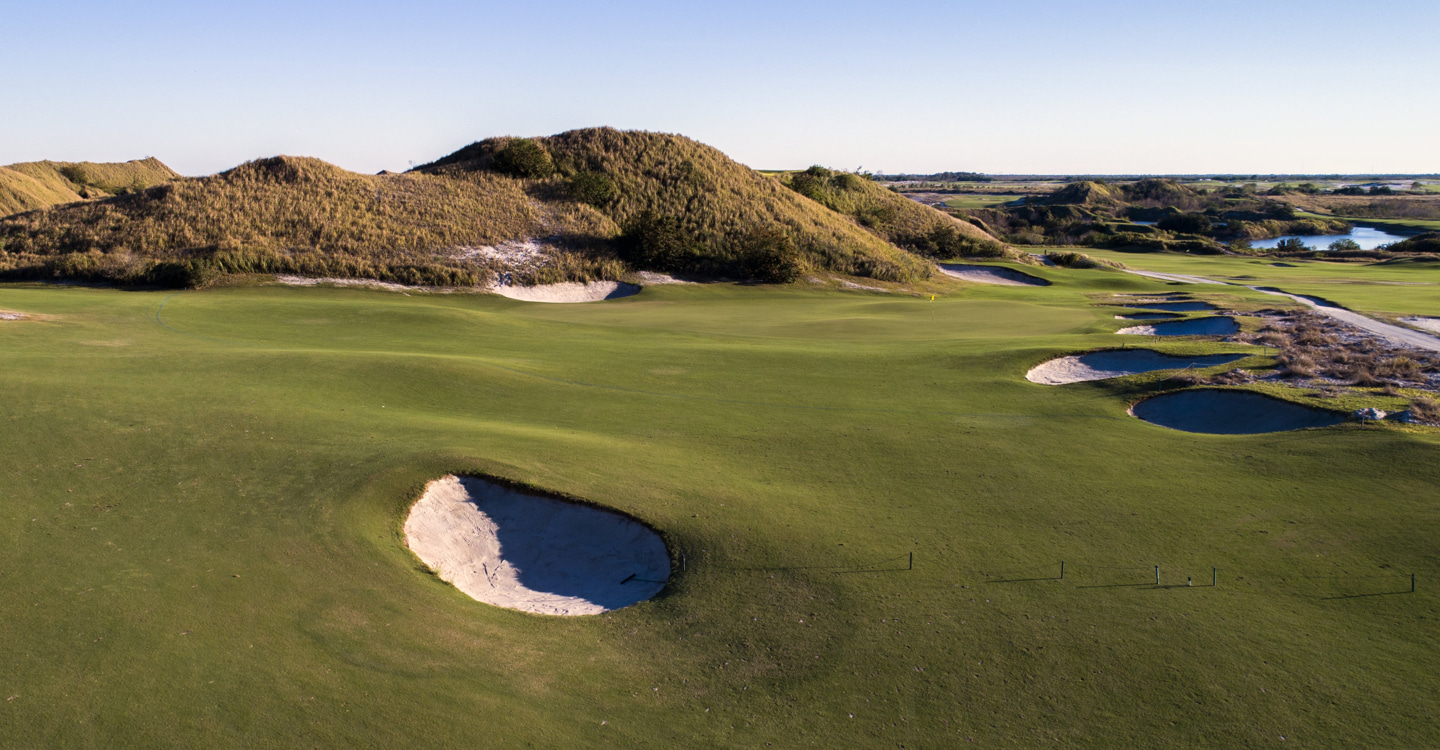
The short approach into the 6th
-
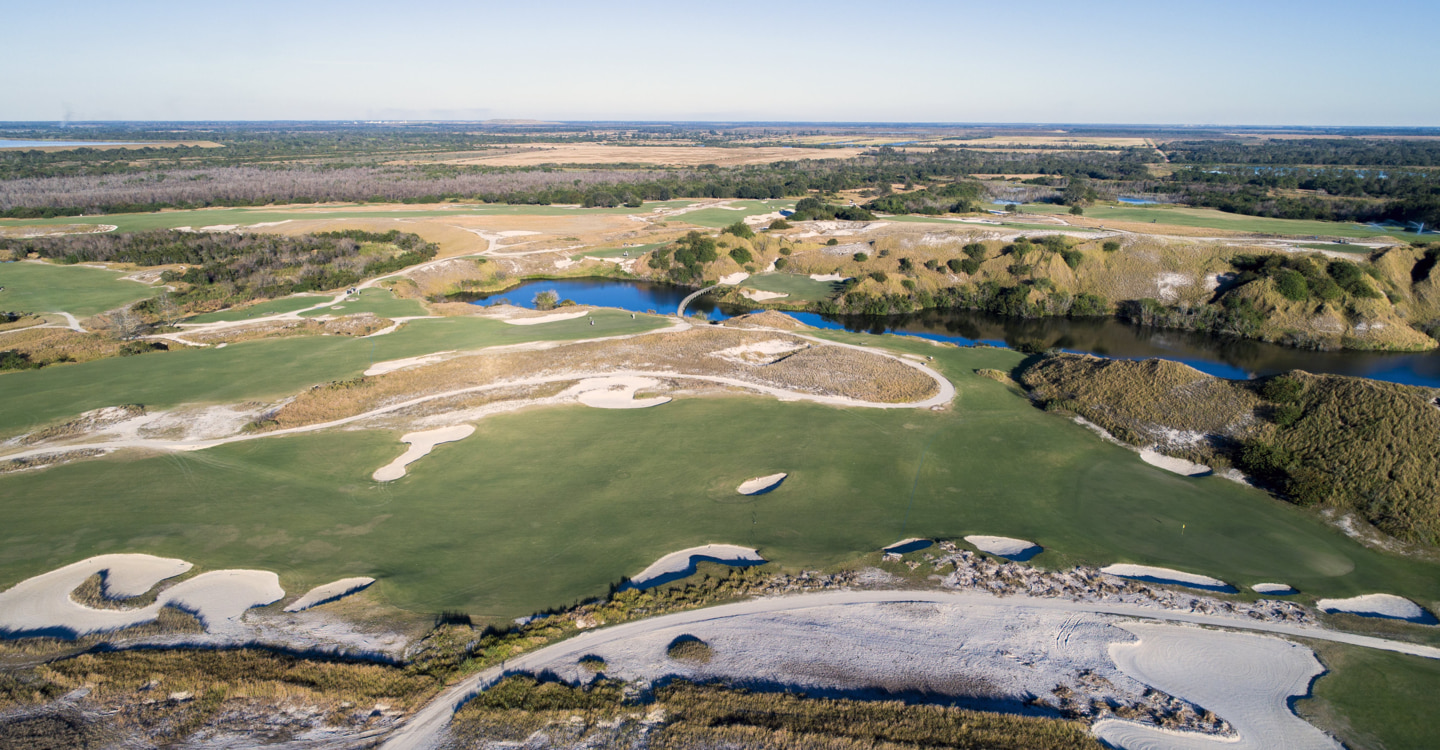
The 6th gives strategic options and demands a confident choice from the tee
-
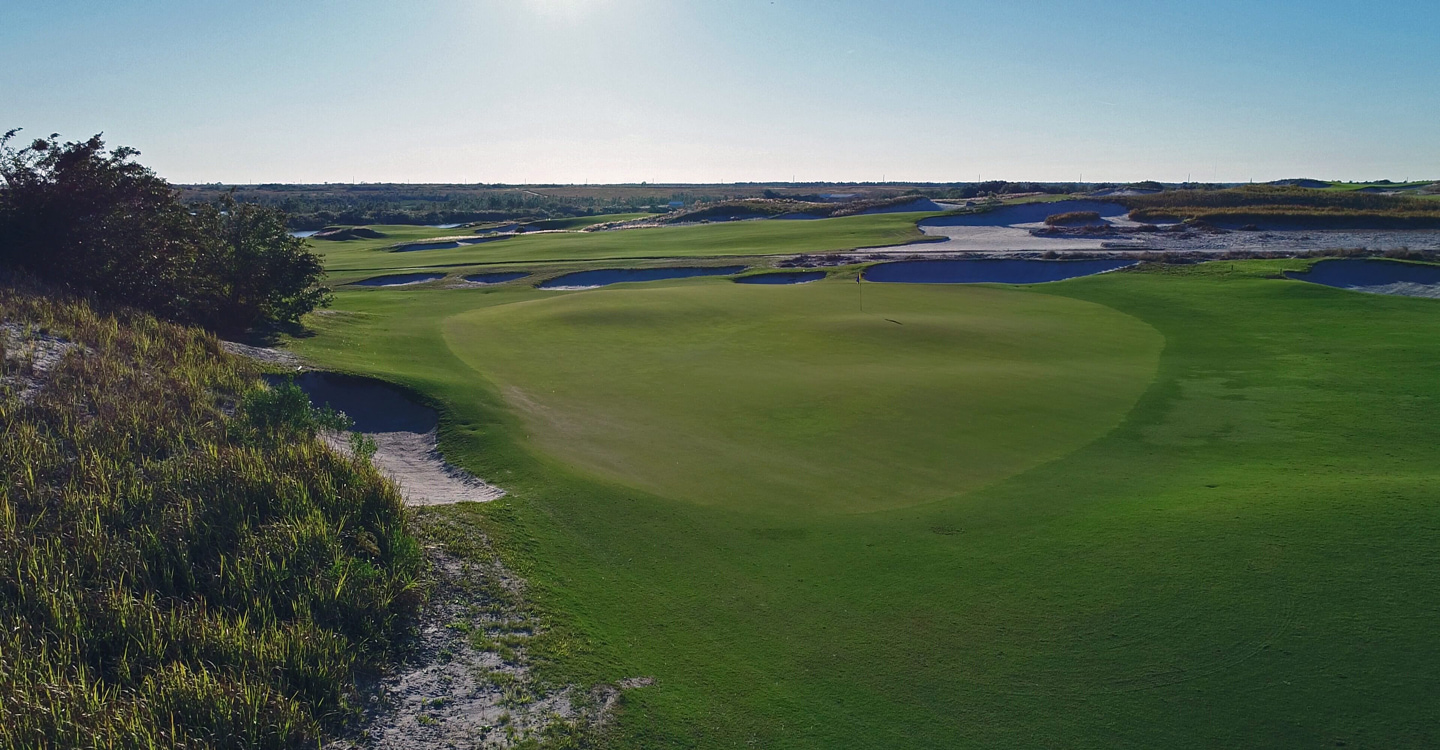
Ample internal contour awaits on the putting surface
HOLE #7 – 203 yards – par 3
Another of the highly photogenic holes at Streamsong Blue, the 7th runs alongside the beautiful 16th from Streamsong Red. The hole plays true to its yardage and the green slopes hard from the right to left. There is a slope that’s not visible from the tee because of the shrubs – a shot right of the green will funnel down towards the hole.
-
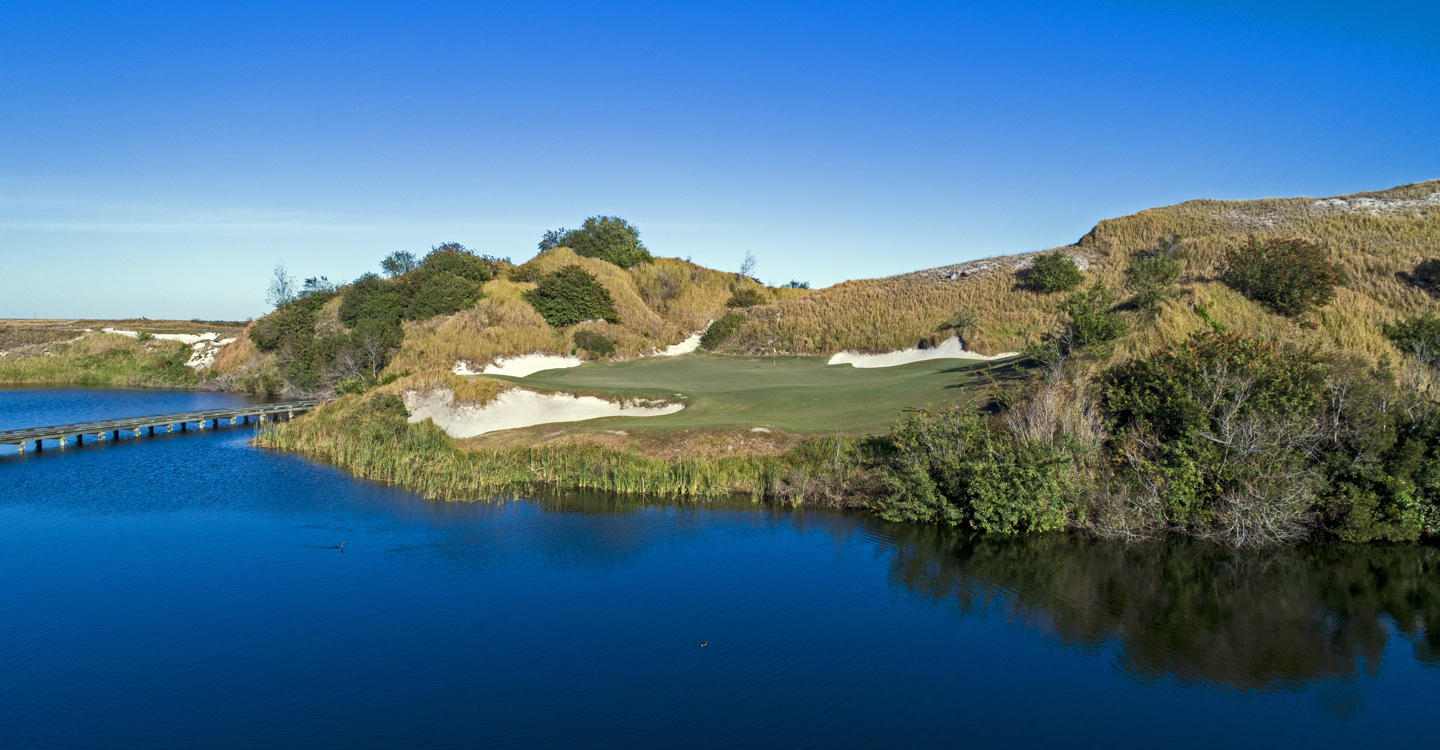
The 7th green sits in the pocket of a large dune
-
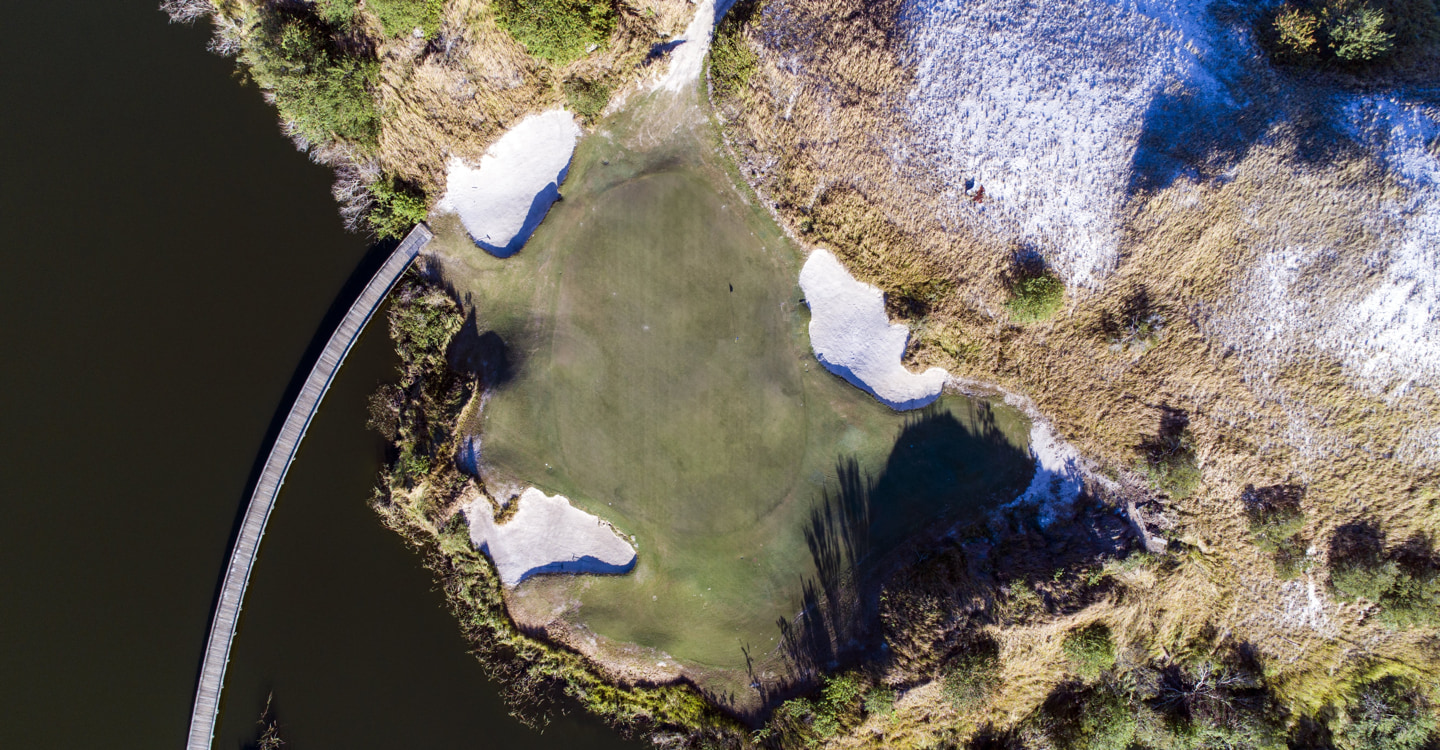
The green is well guarded by bunkers
-
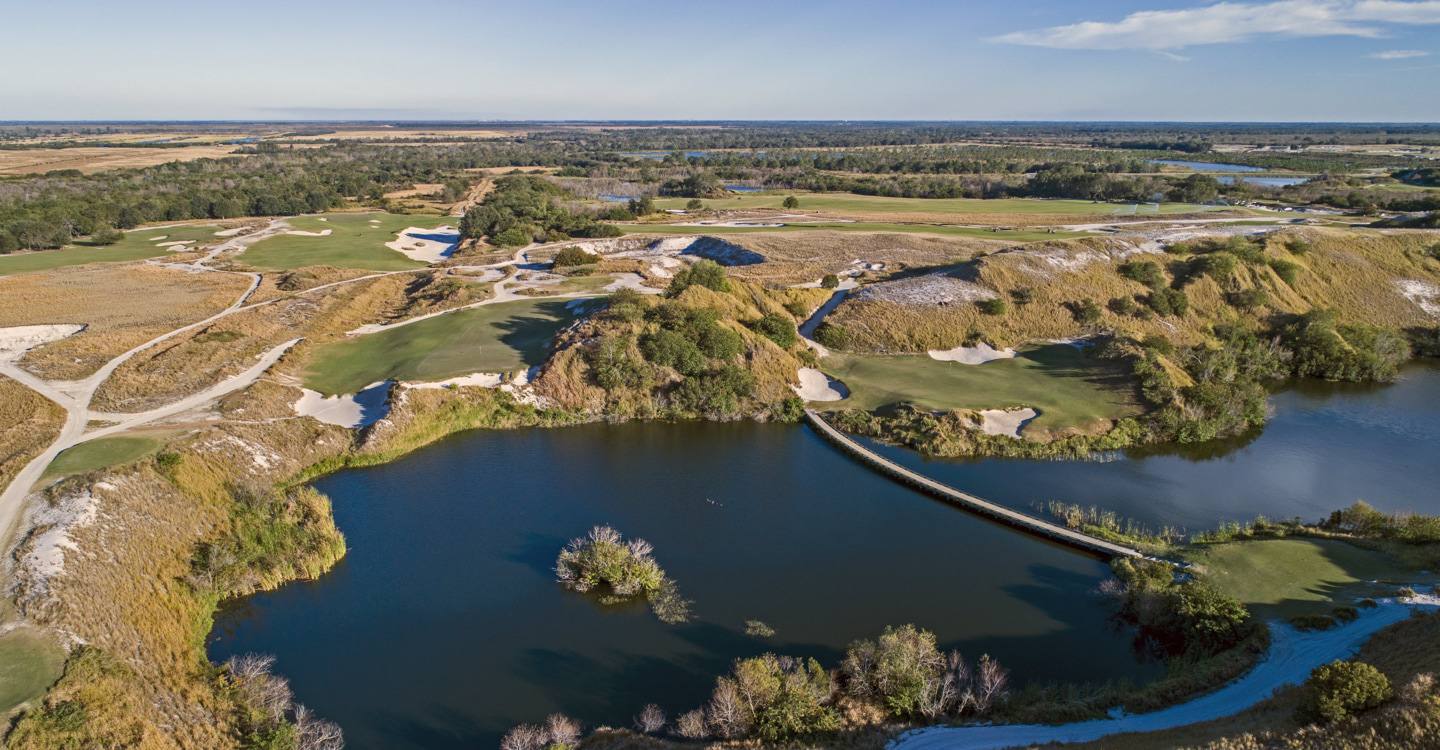
At this spot, the two courses intersect
HOLE #8 – 454 yards – par 4
The 8th is a quintessential Doak hole. Width and strategy fill this long par-4 where the architect uses centerline bunkers to force a decision of left or right. A drive up the left side shortens the hole while the right side will leave a great angle for approach into the elevated and multi-tiered green. The approach is obstructed by a couple of greenside bunkers, a runoff in the front and a small pond. If the approach shot isn’t great, it will leave a very difficult two putt on this diabolical putting surface.
-
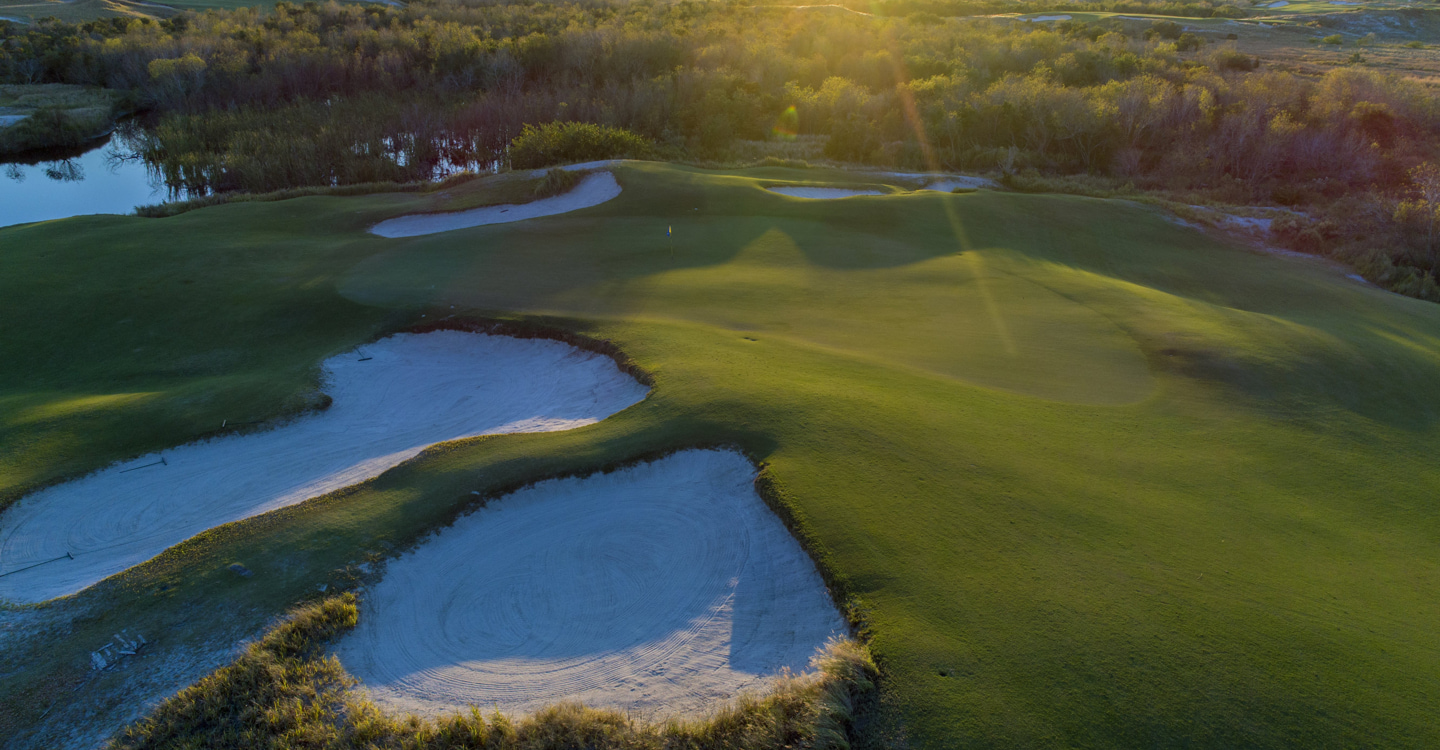
Deep bunkers wait to catch flares right
-
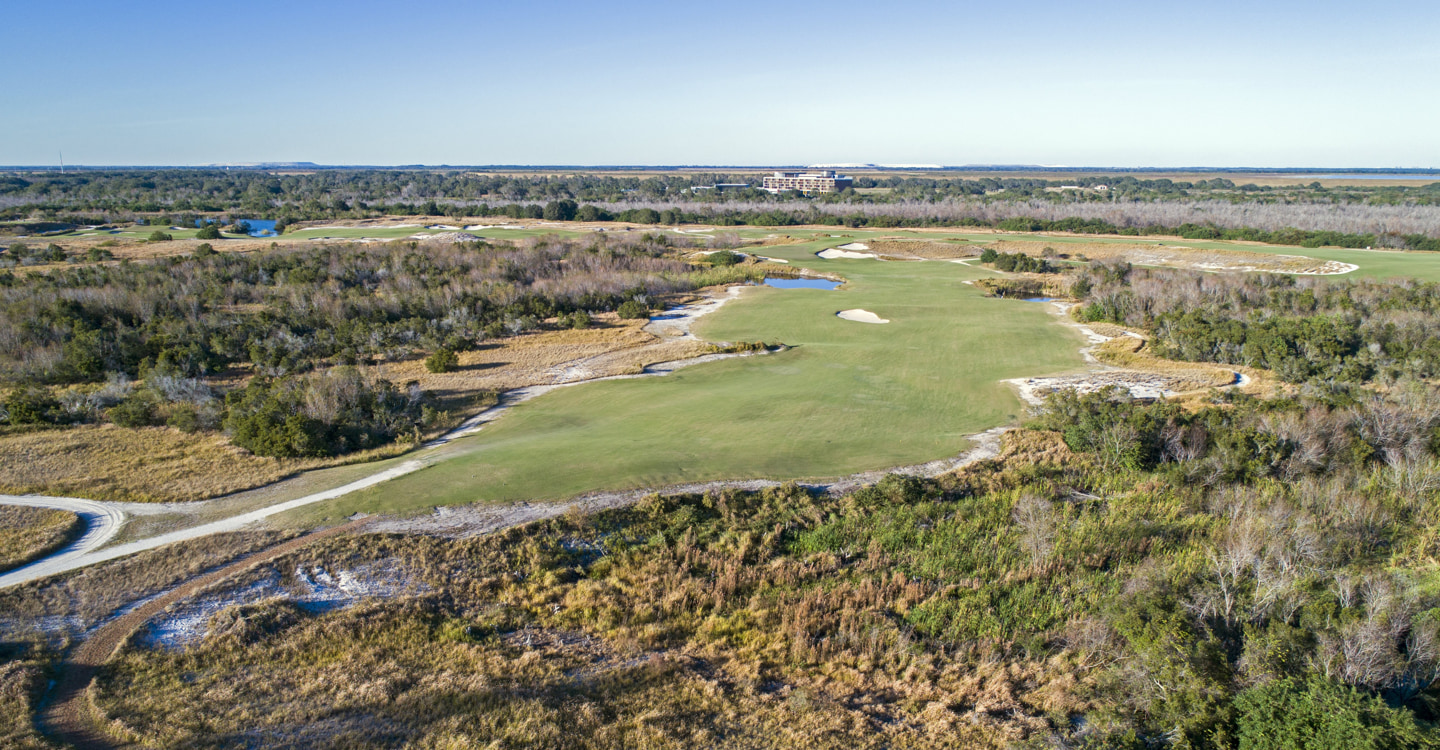
From the tee, players are presented with options
-
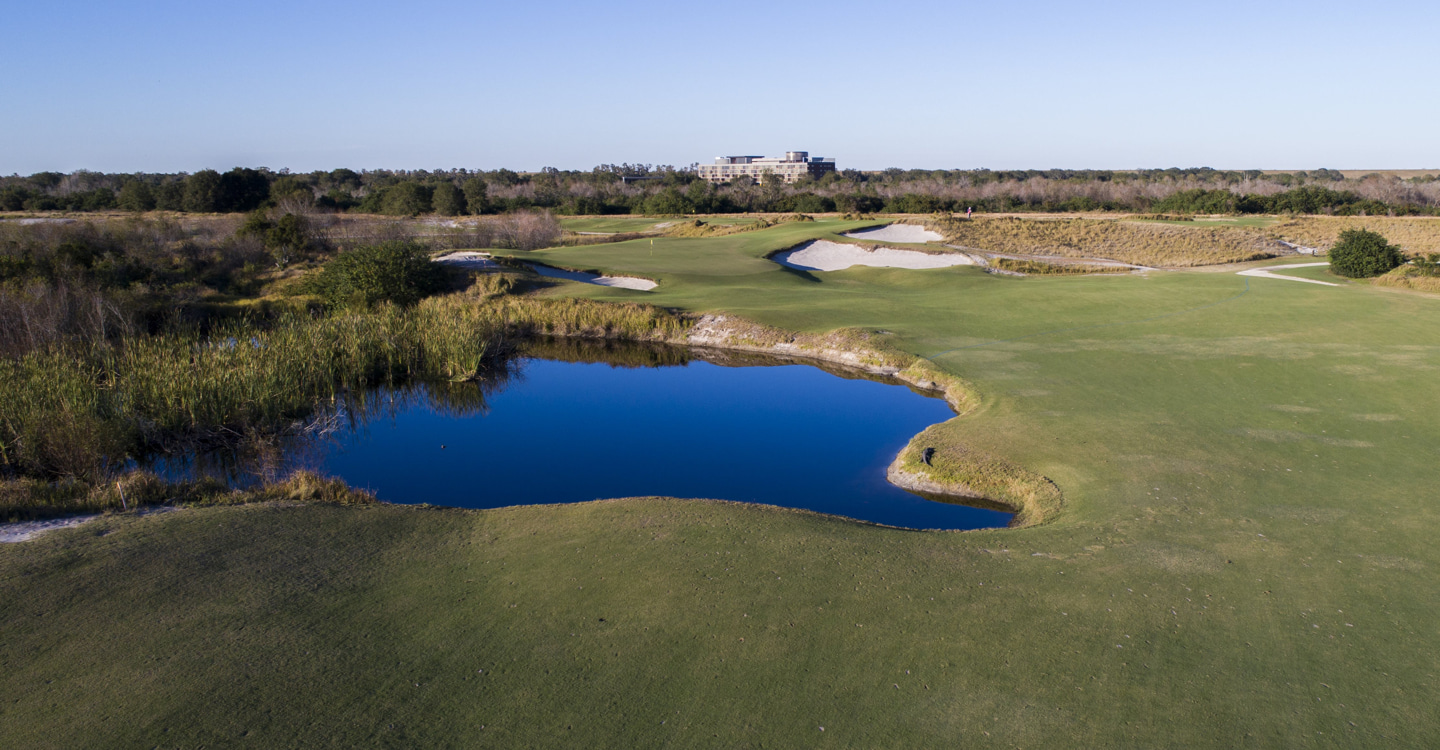
From the left, the approach plays over water
-
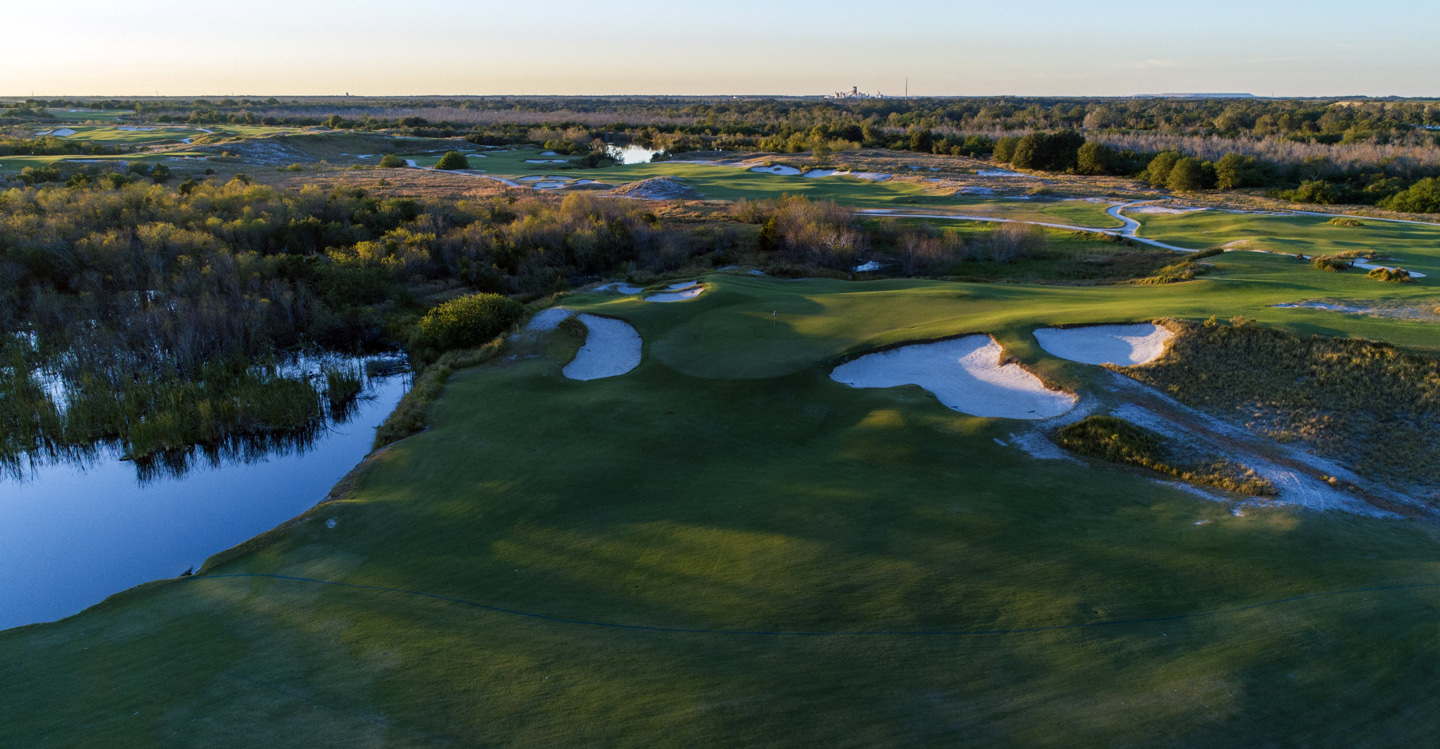
The green twists and turns among the bunkers
HOLE #9 – 575 yards – par 5
The front nine comes to a close with the brutish par-5 9th. From the back tees, the massive fairway bunker dictates strategy, as the more a player bites off the shorter the approach. Something that isn’t evident from the tee is the unbelievable amount of fairway to the left that makes it nearly impossible not to find the short grass if you avoid the bunker. For most, the 9th is a three-shot hole and the layup is relatively benign with only a couple of bunkers to navigate. The approach to the uphill shallow and wide green complex is guarded by deep bunkers in front and one long. The green slopes hard from back to front making spin control very important.
-
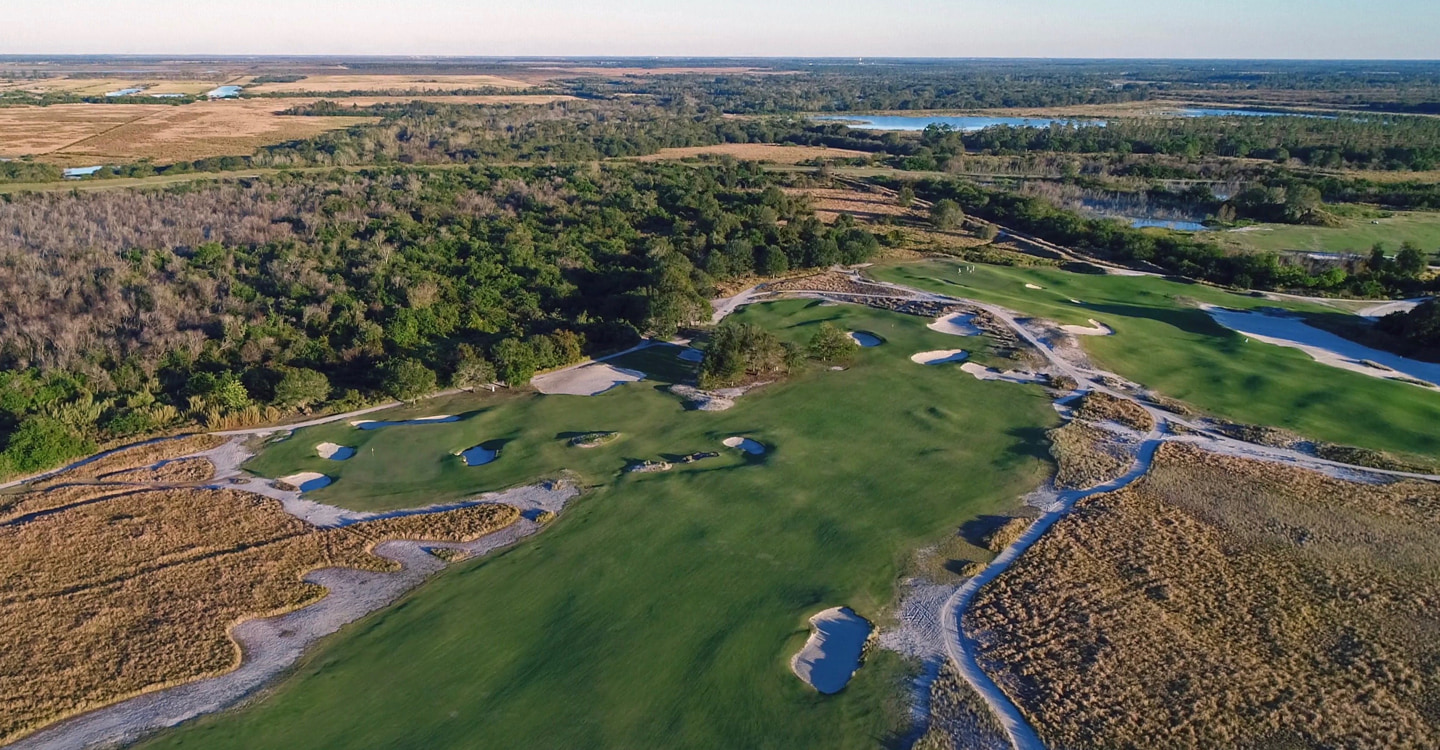
The wide fairway on the 9th
-
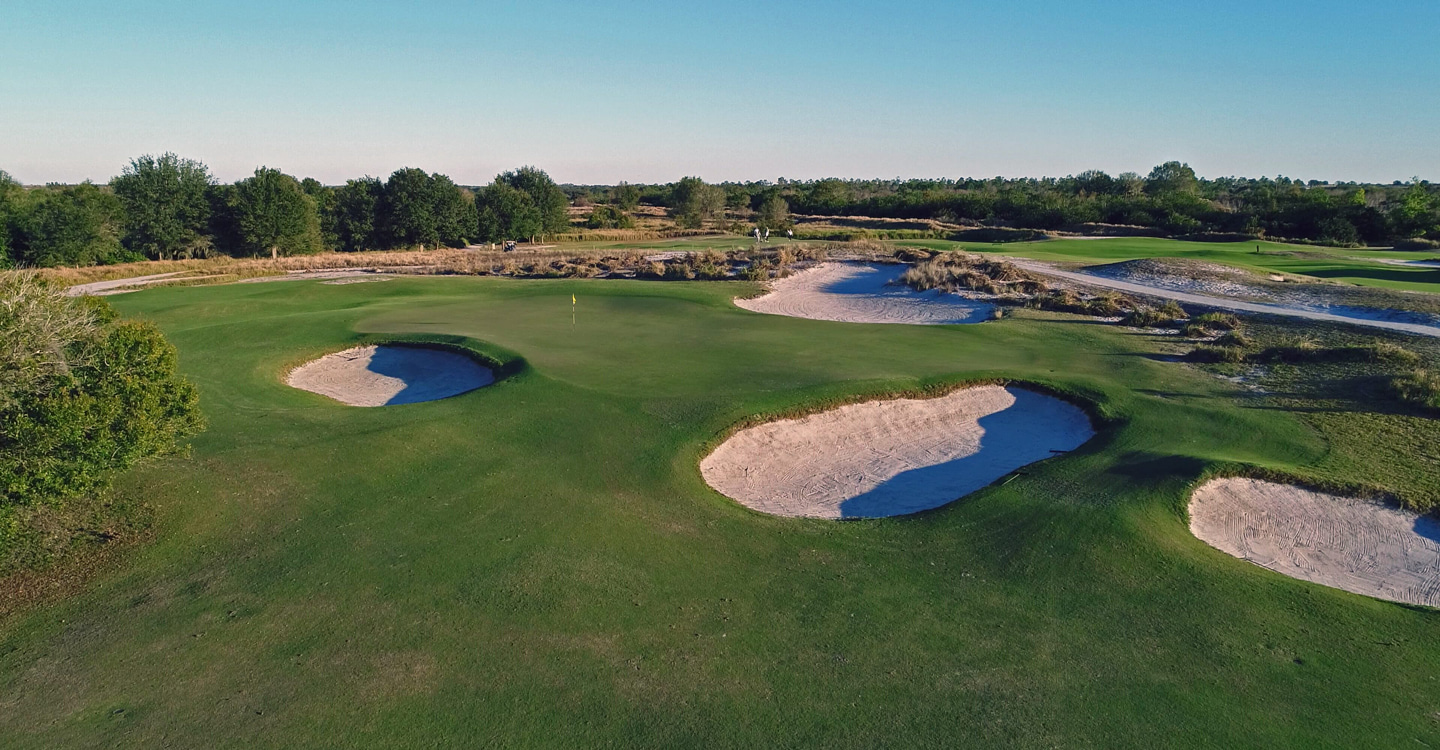
Short right of the elevated green
-
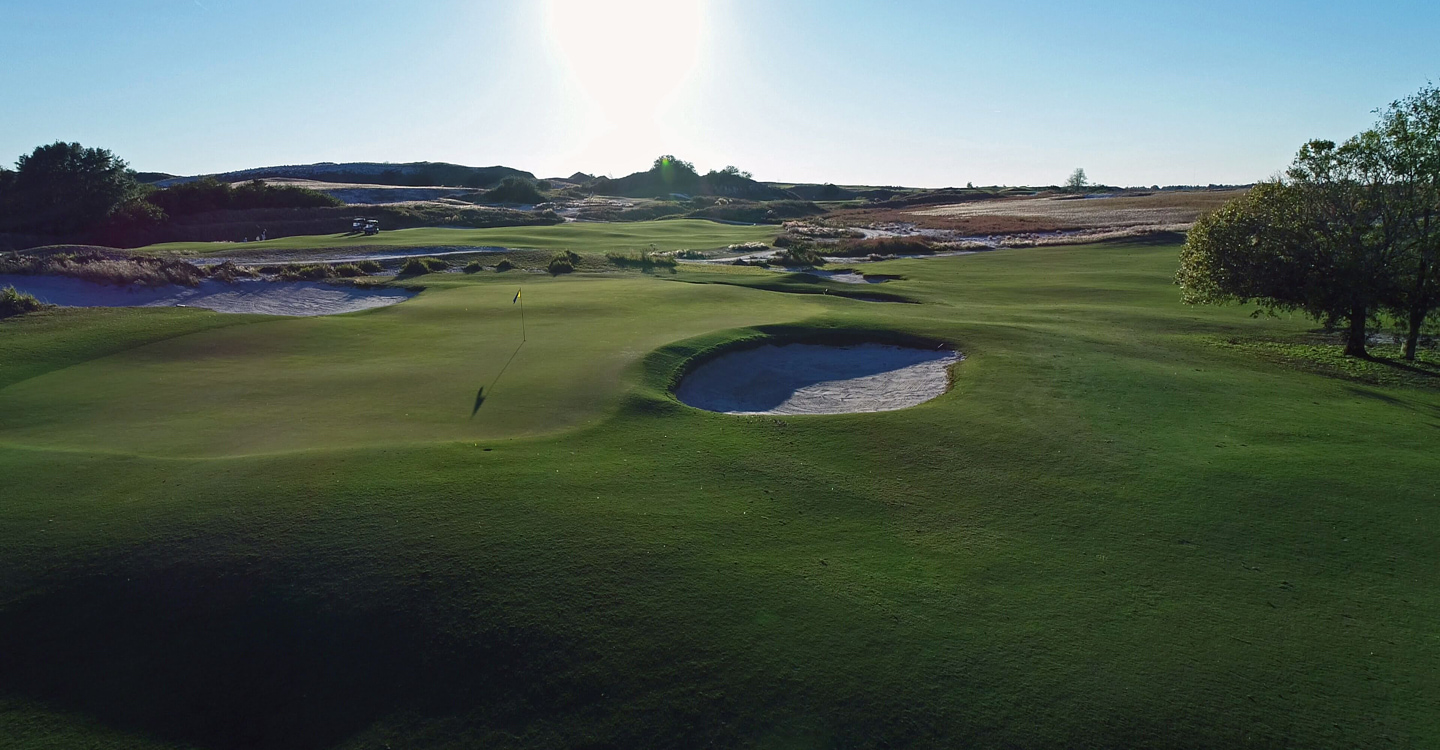
Long approaches leave testy recoveries
Taco Stand
Much like the Red course, the Blue features phenomenal halfway house food. For those wondering, I can confirm that 9:15am is not too early for Streamsong tacos.
HOLE #10 – 187 yards – par 3
The back nine kicks off with a tough mid-length par-3, which is guarded by a number of bunkers and a tricky green complex. The green sits diagonally between the bunkers, and the front right section slopes away from the tee making it difficult to hold the green.
-
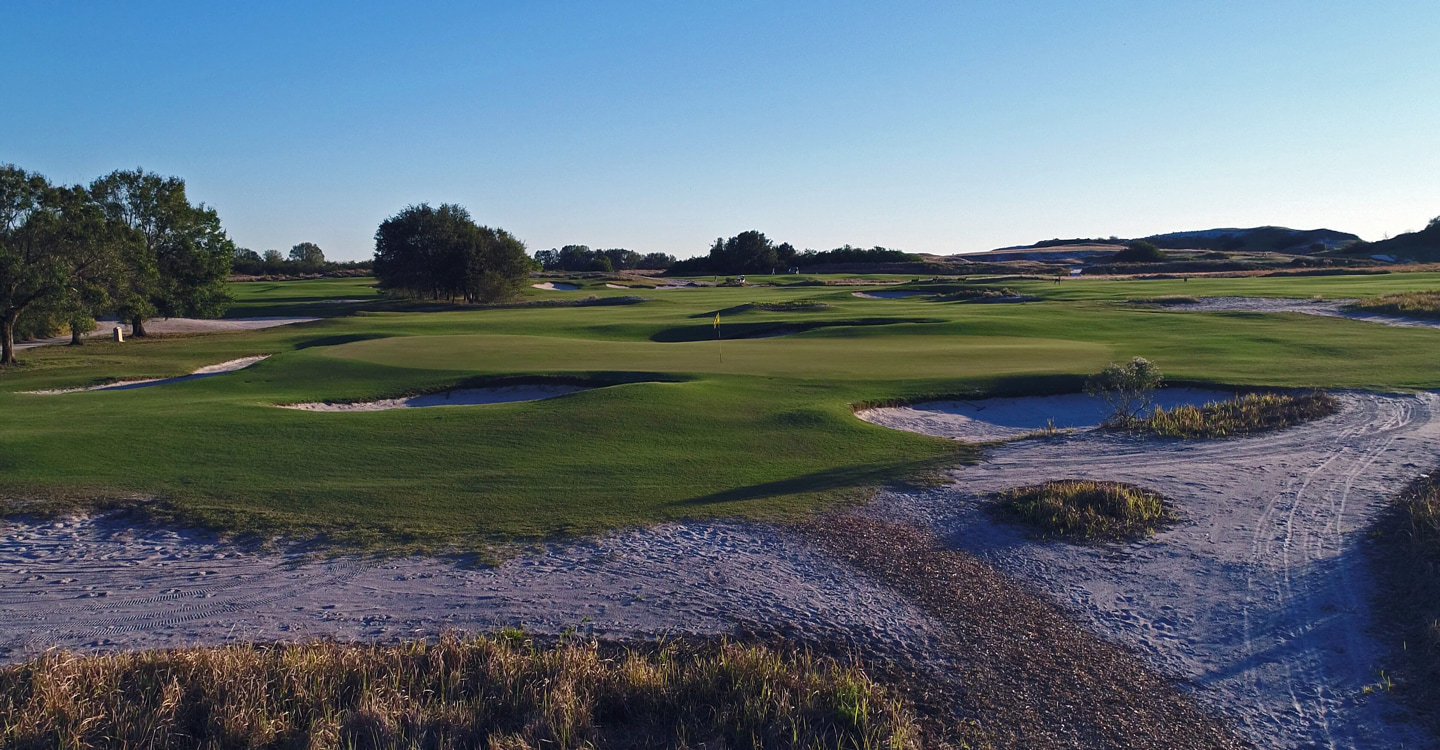
The back side of the 10th green bleeds right into a sandy wash
-
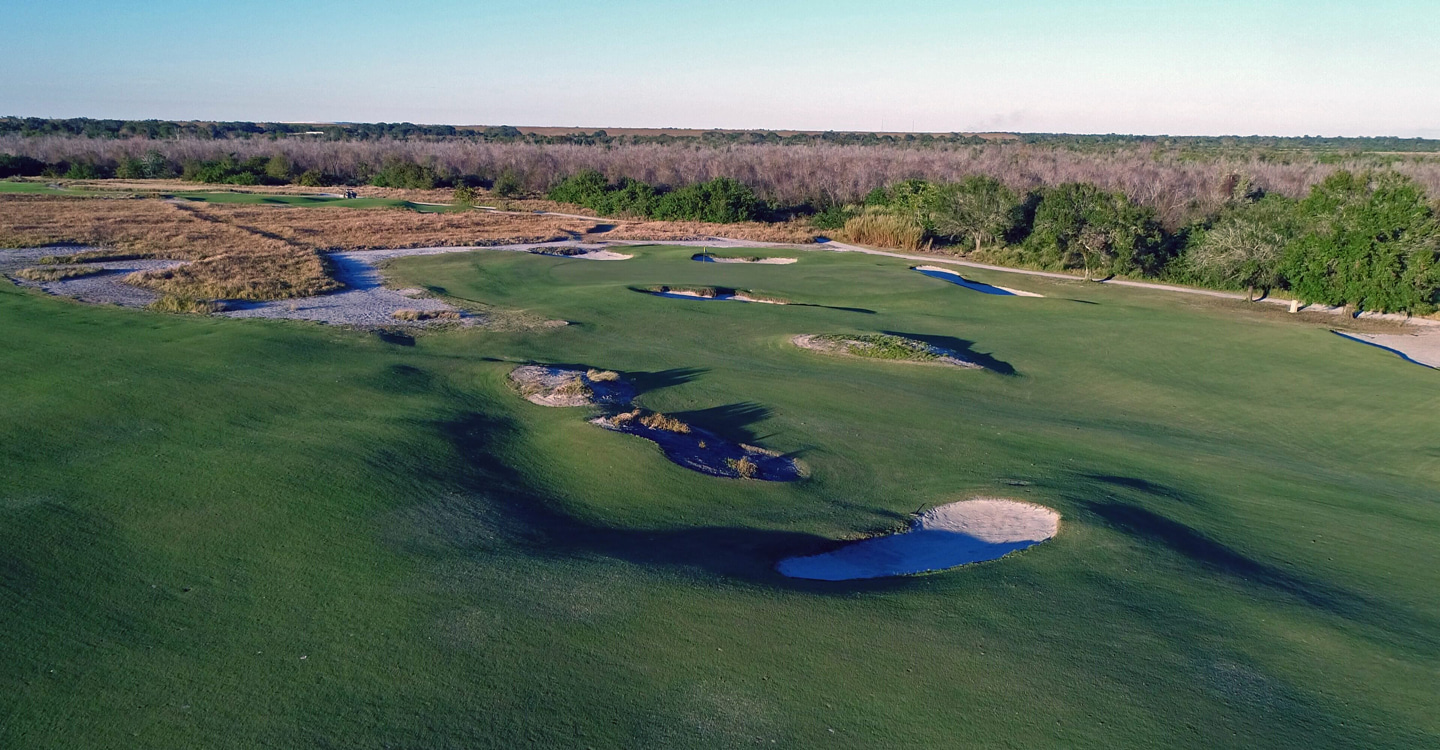
The 10th as seen from the 9th fairway
-
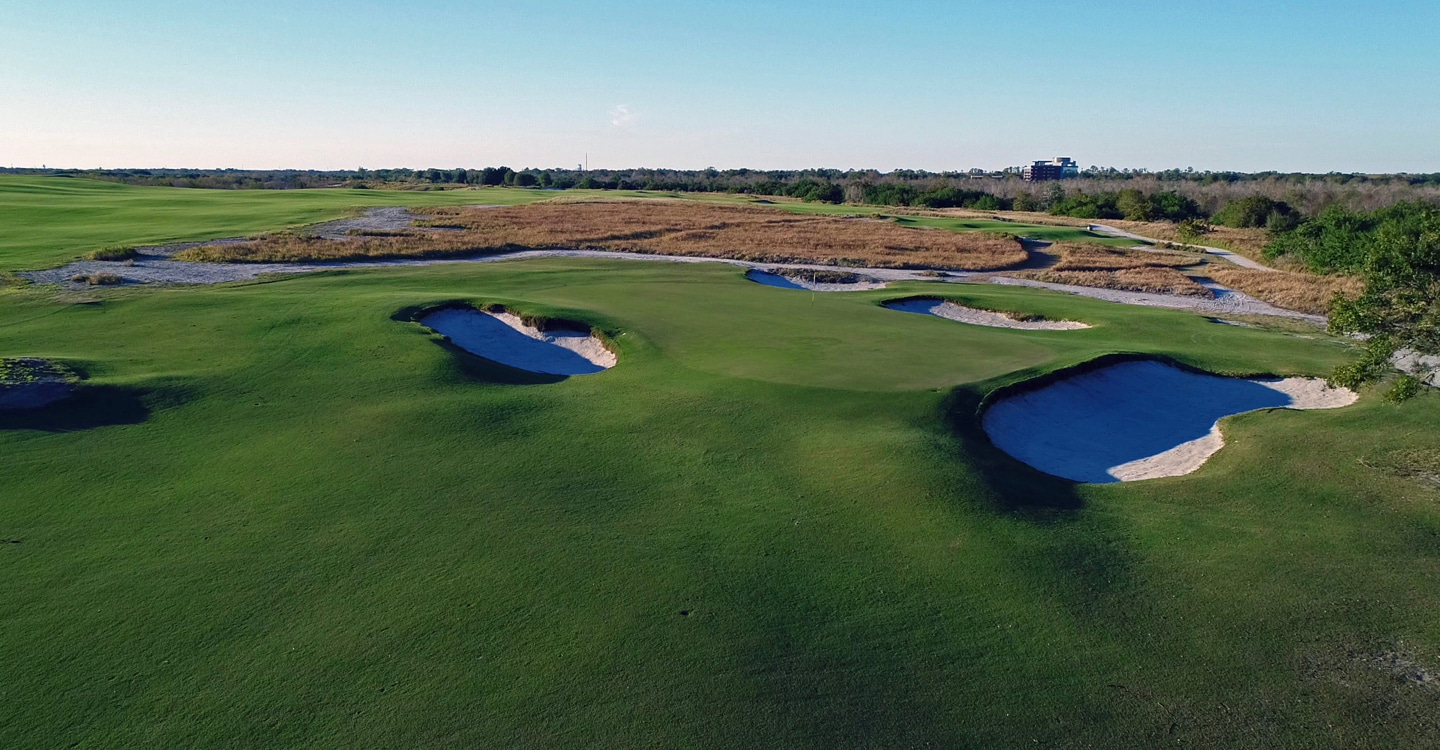
Another Doak par-3 that demands a well struck tee shot
HOLE #11 – 487 yards – par 4
The longest par-4 on the property has an incredibly wide fairway which is split by a small pot bunker sitting in the middle. The bunker is 260 yards to carry and forces players to decide right or left. Right is safer, while the left is tougher because of the fairway bunkers that run along that side. However, this side gives the best angle and a clear look at the green. The approach calls for a mid to long-iron into the only bunkerless green complex. Instead of sand, Doak uses a series of rolls as a defense which can lead to some awkward shots and big bounces. The green is long and narrow with many twists and turns. From the strategic tee shot to the unique quirks, one of the best holes on the course.
-
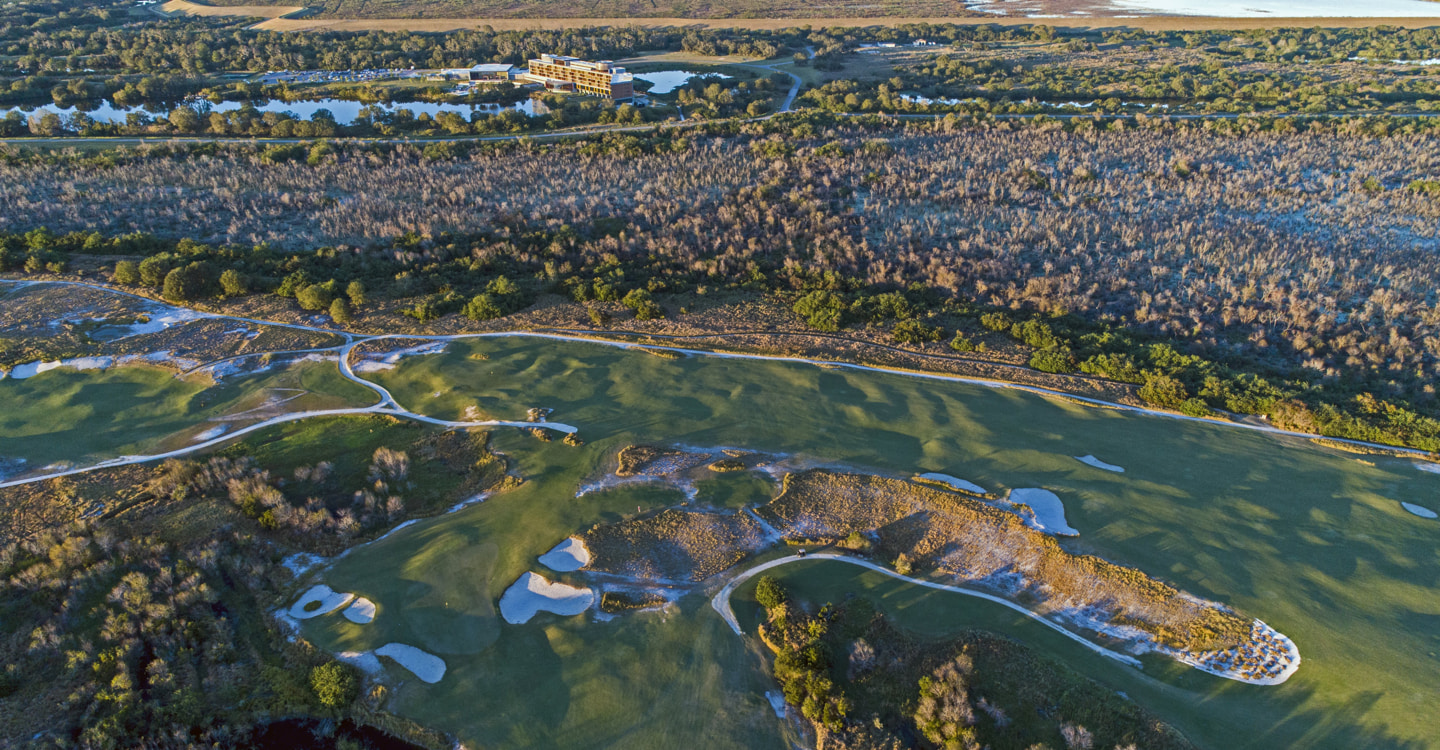
The high aerial view highlights the ripples and rolls of the fairway
-
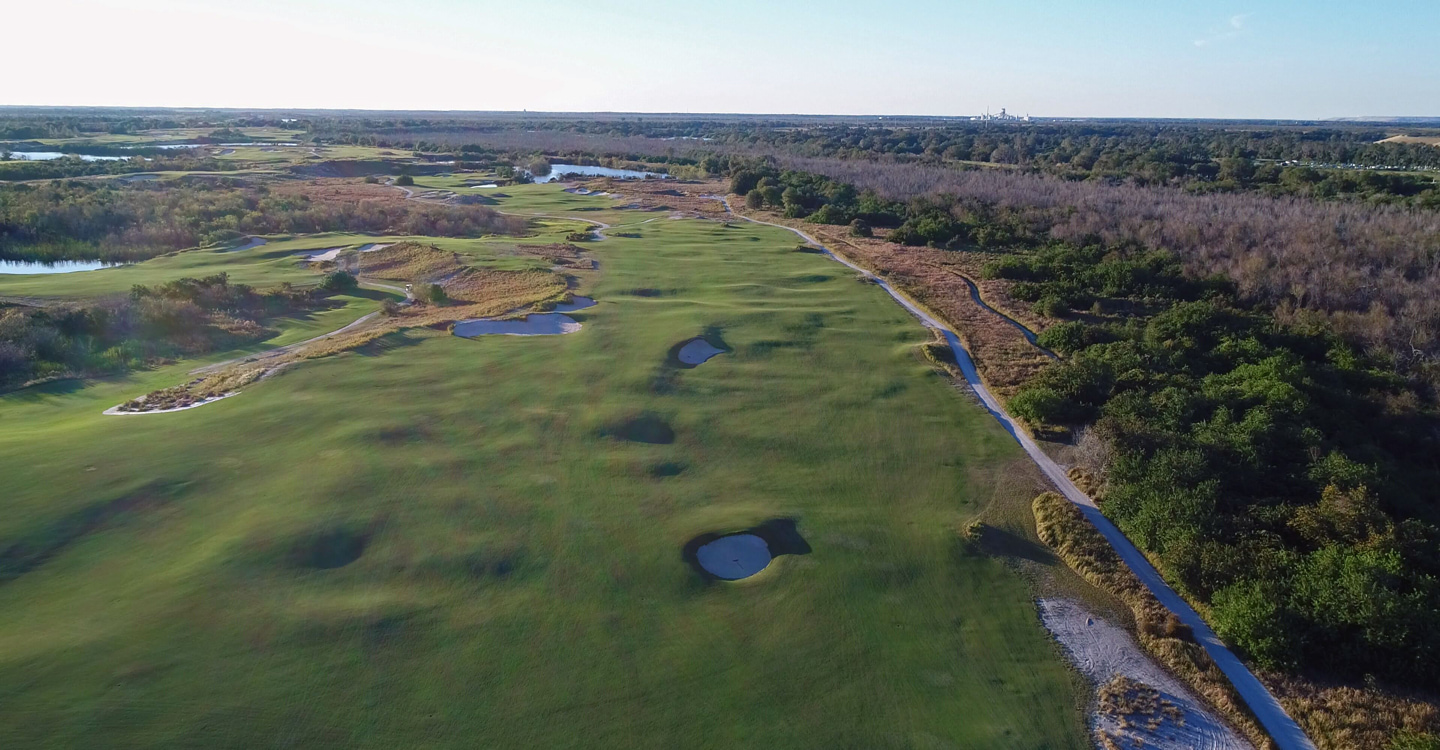
The centerline bunker forces players to pick a side from the tee
-
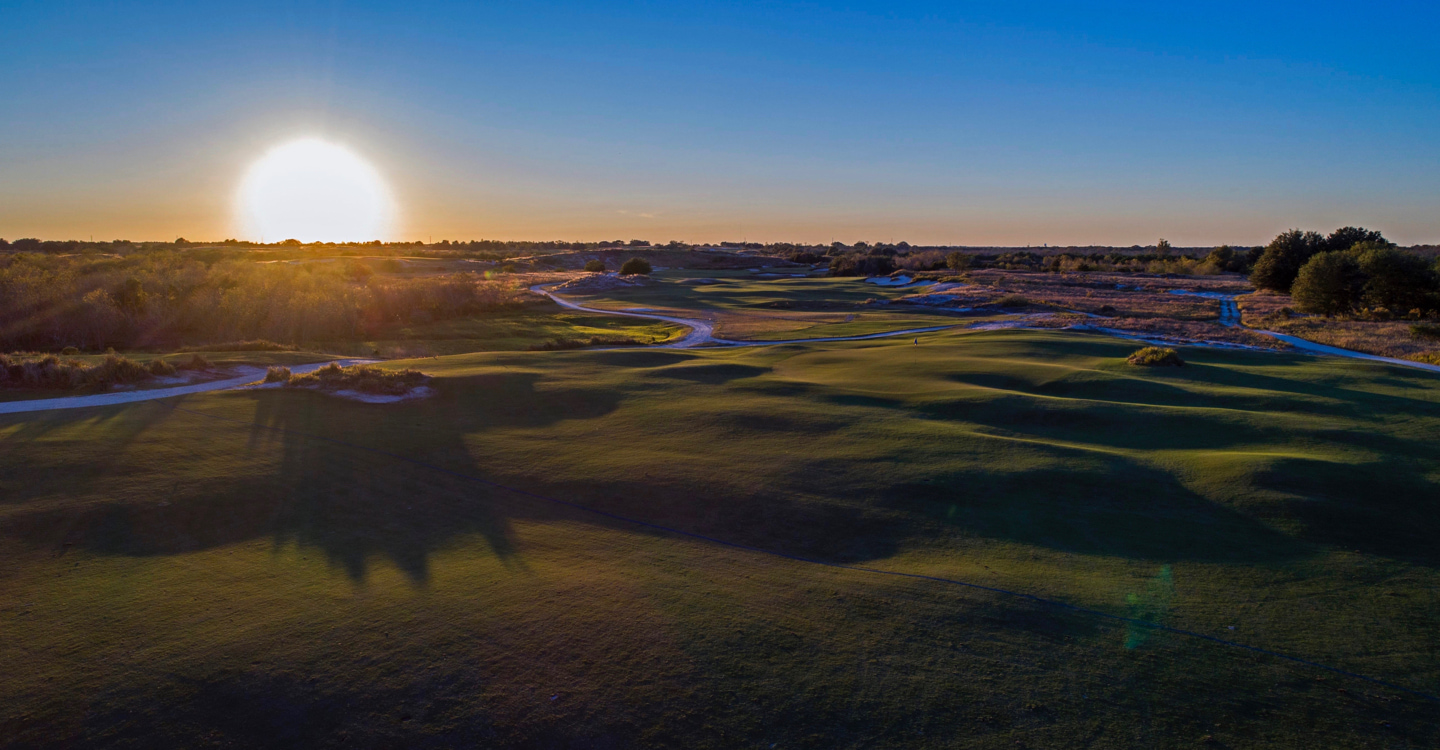
Doak defends the 11th with contours
-
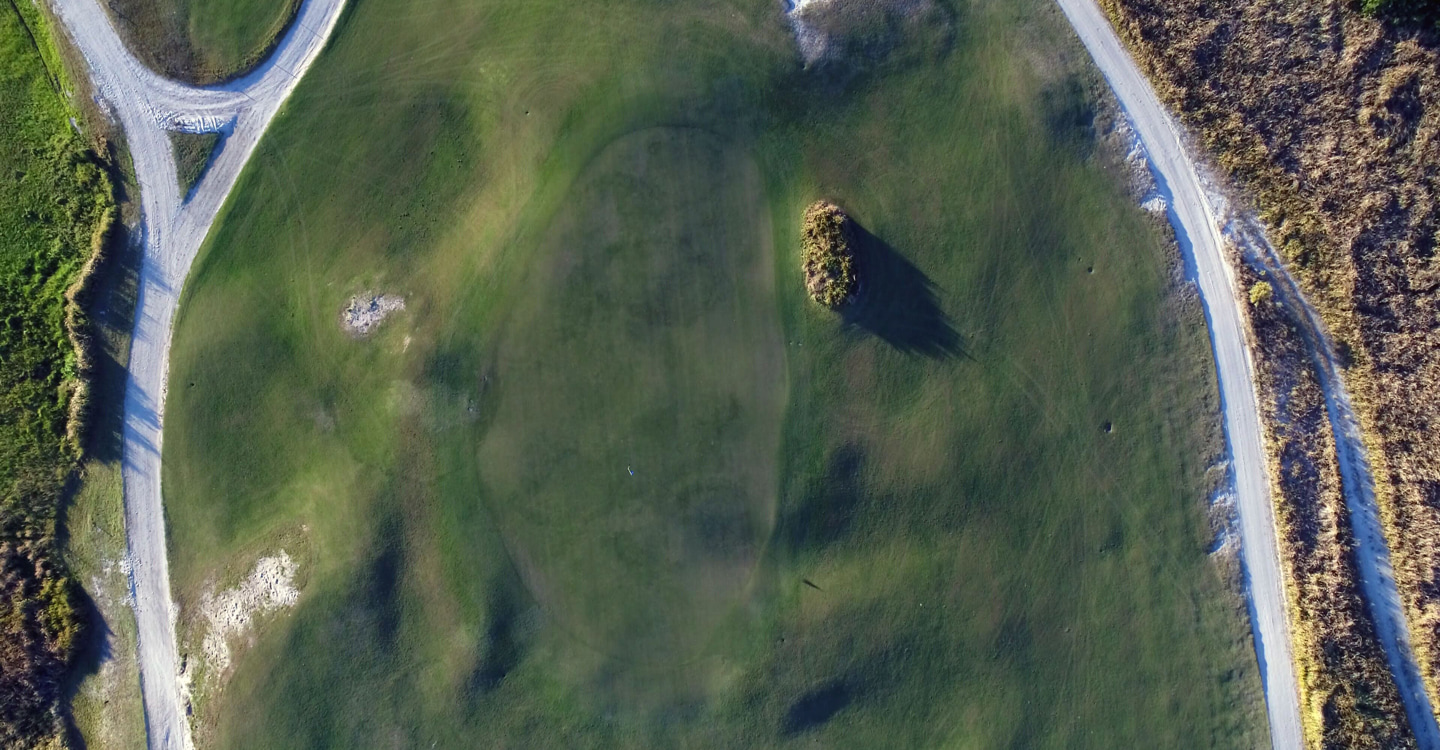
The green may be bunkerless, but it is not defenseless
HOLE #12 – 408 yards – par 4
After the flattish 10th and 11th, the 12th gets back to more dramatic land with a par-4 that was seemingly carved out of sand dunes. The tee shot screams high draw, threading it between the right and left fairway bunkers. A big drive will lead to a wedge approach into the most undulated and bold green complex on the property. It’s a picturesque shot as the bunker edges are strongly defined and rugged and the key is having precise control of your spin and distance. One of my few qualms with Doak’s design of the Blue course come here. I found the back portions of the green just too severe, considering an absolutely perfect shot has to be hit to have a makeable birdie putt. A great shot that is one yard short or long will find itself in the back bunker or 70 feet away.
-
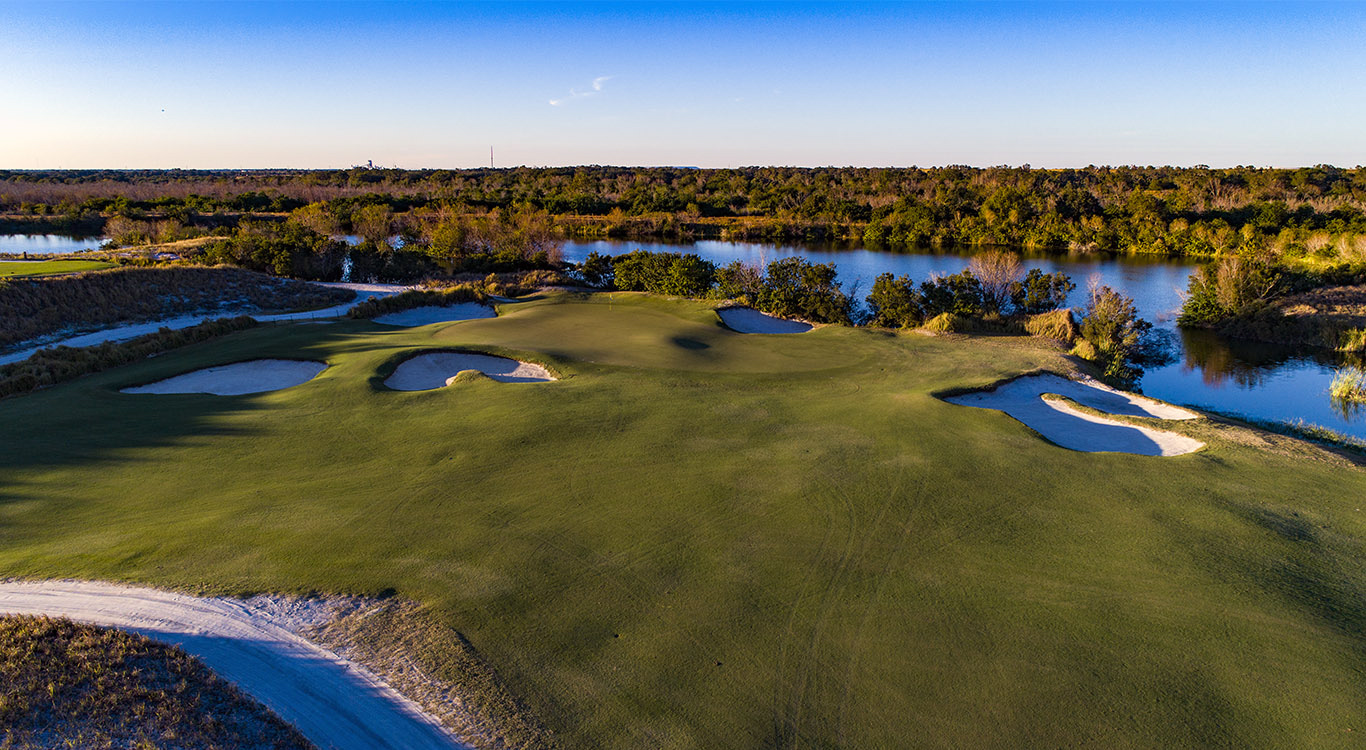
The approach into the wild green on the 12th
HOLE #13 – 312 yards – par 4
The 13th stands as one of the great short par-4s where birdies can be had but a poor decision can lead to a big number. I pulled driver and pulled it, 6 shots later and I’d had enough. The hole runs slightly uphill, and the green is guarded by a few very deep bunkers on the left side. Finding one leaves an extremely uncomfortable and awkward shot. The prudent play is an iron up the right side which will give you a look at the narrow and flat green.
-
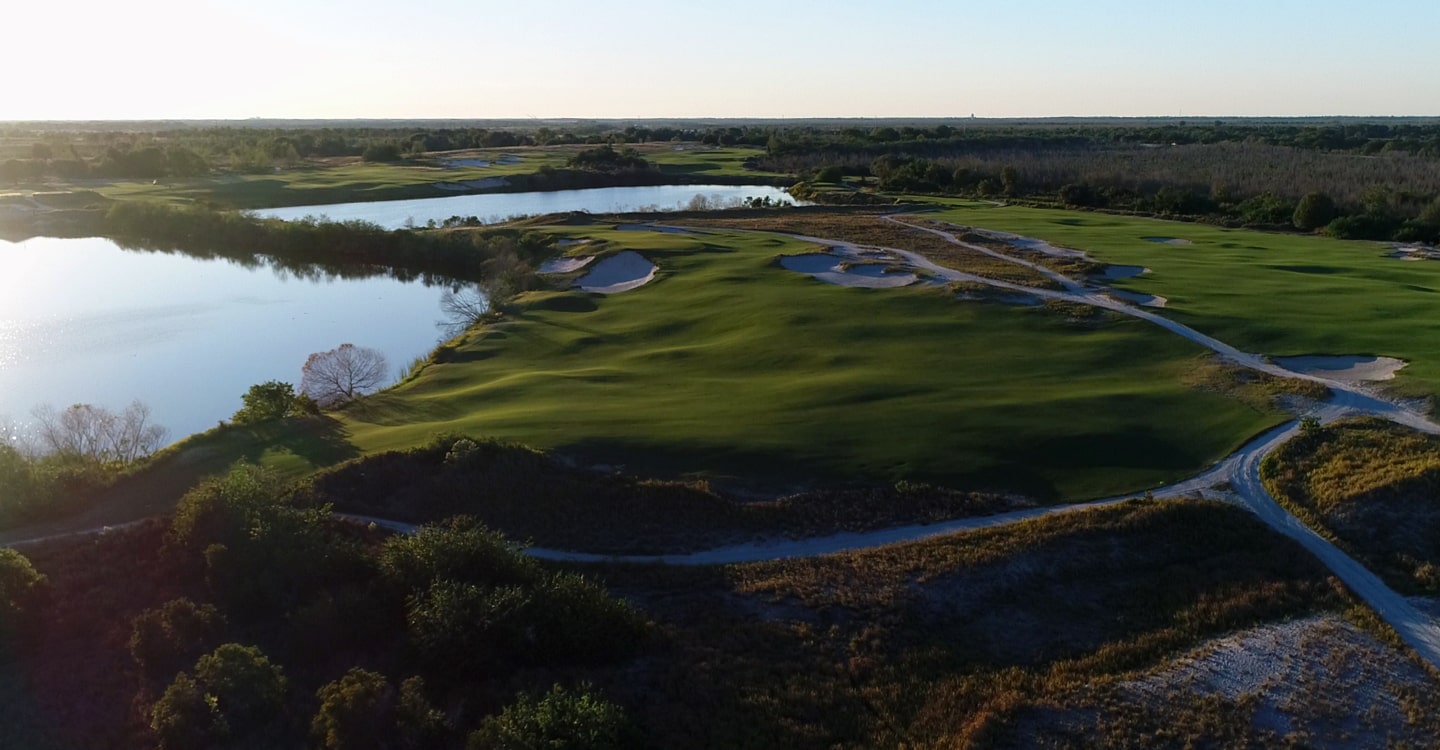
The closer the narrower on the short par-4 13th
HOLE #14 – 545 yards – par 5
Following the short par-4 13th, Doak gives the last great birdie chance of the day. The 14th tees off over a lake and has a great look to it with the right bunker that sits in the ridge you tee over. A good drive will leave an opportunity to hit the small green in two but those who have to lay up will be forced to navigate a small pot bunker on the right and a massive bunker on the left. The best aspect of the 14th is Doak’s small green and runoff areas that reward a great shot and make for a difficult up and down if missed.
HOLE #15 – 446 yards – par 4
Doak saves his best for the close at Streamsong Blue, incorporating template holes into the final four. The 15th is a modern rendition of the Alps template. Here, the sand dune and bunkering in the middle of the fairway obscures the view of the second shot into the relatively long par-4. A good drive yields a semi-blind approach to the tiered green which features a punchbowl front section flanked by deep bunkers and two other tiers.
-
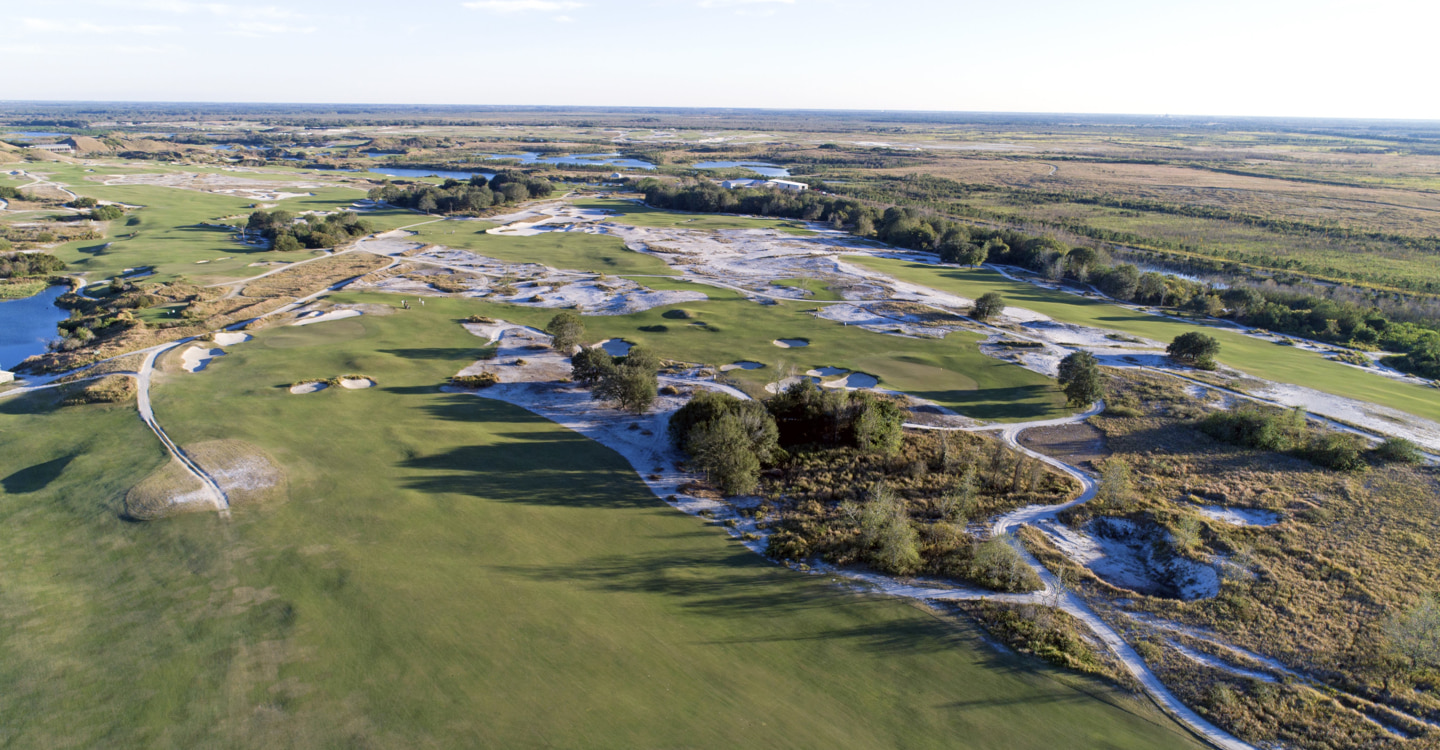
From above the 15th, contours and hazards revealed
-
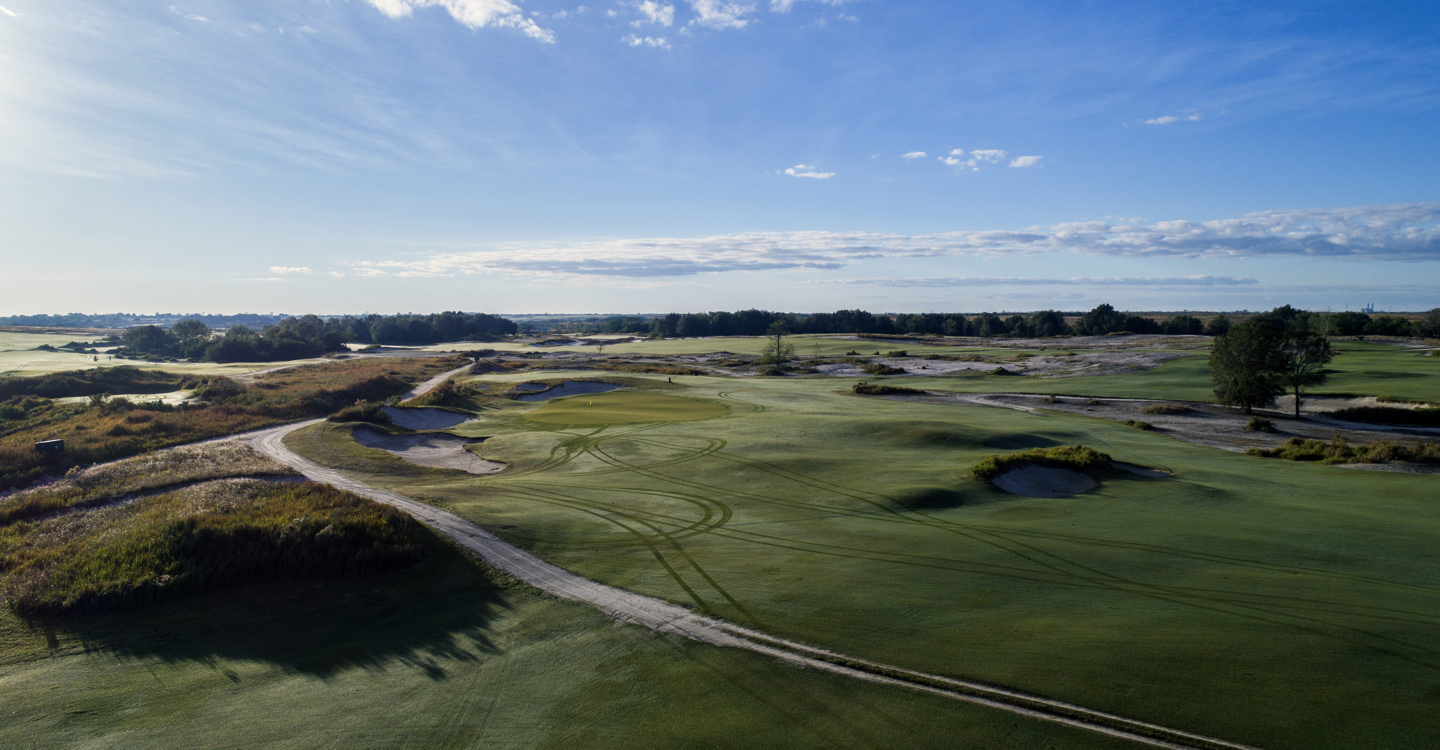
The left angle into the green
-
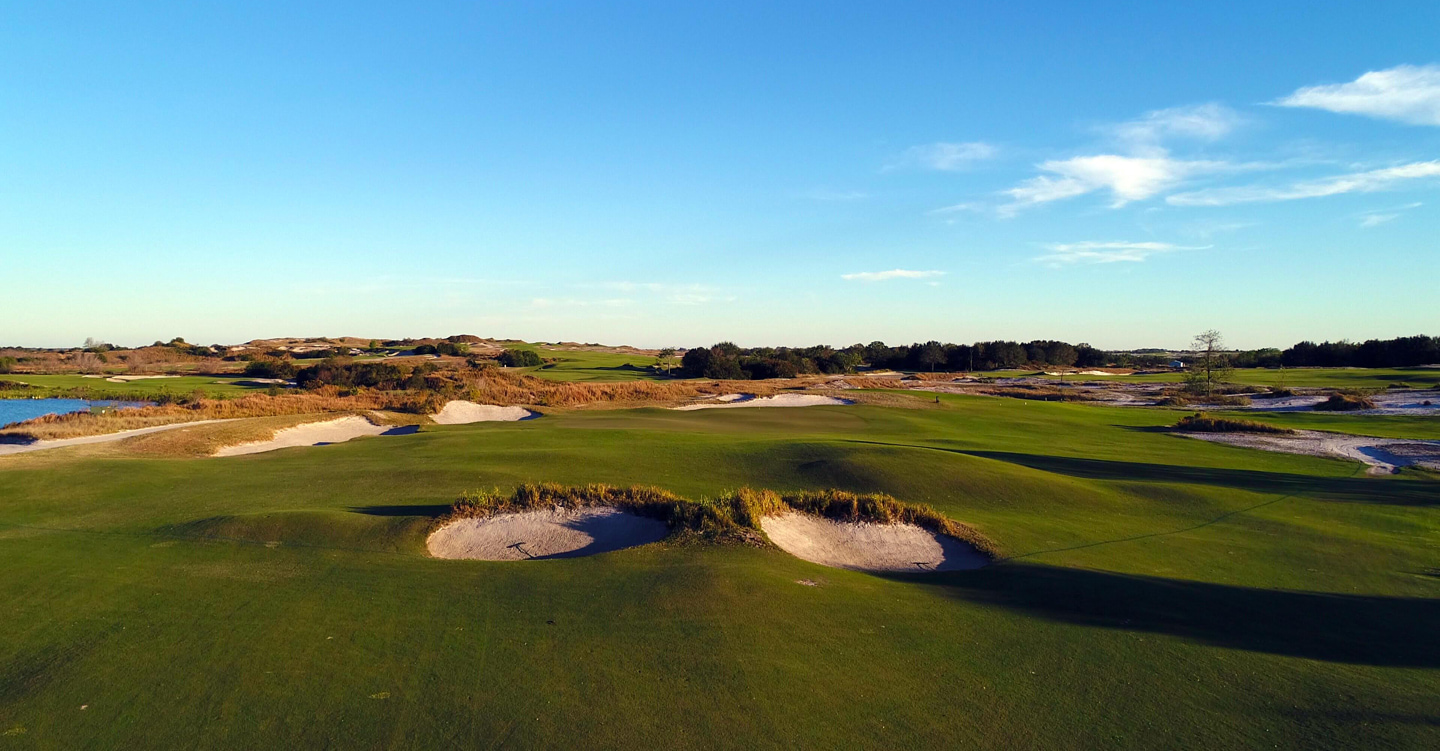
The bunkers short are in the player's face
-
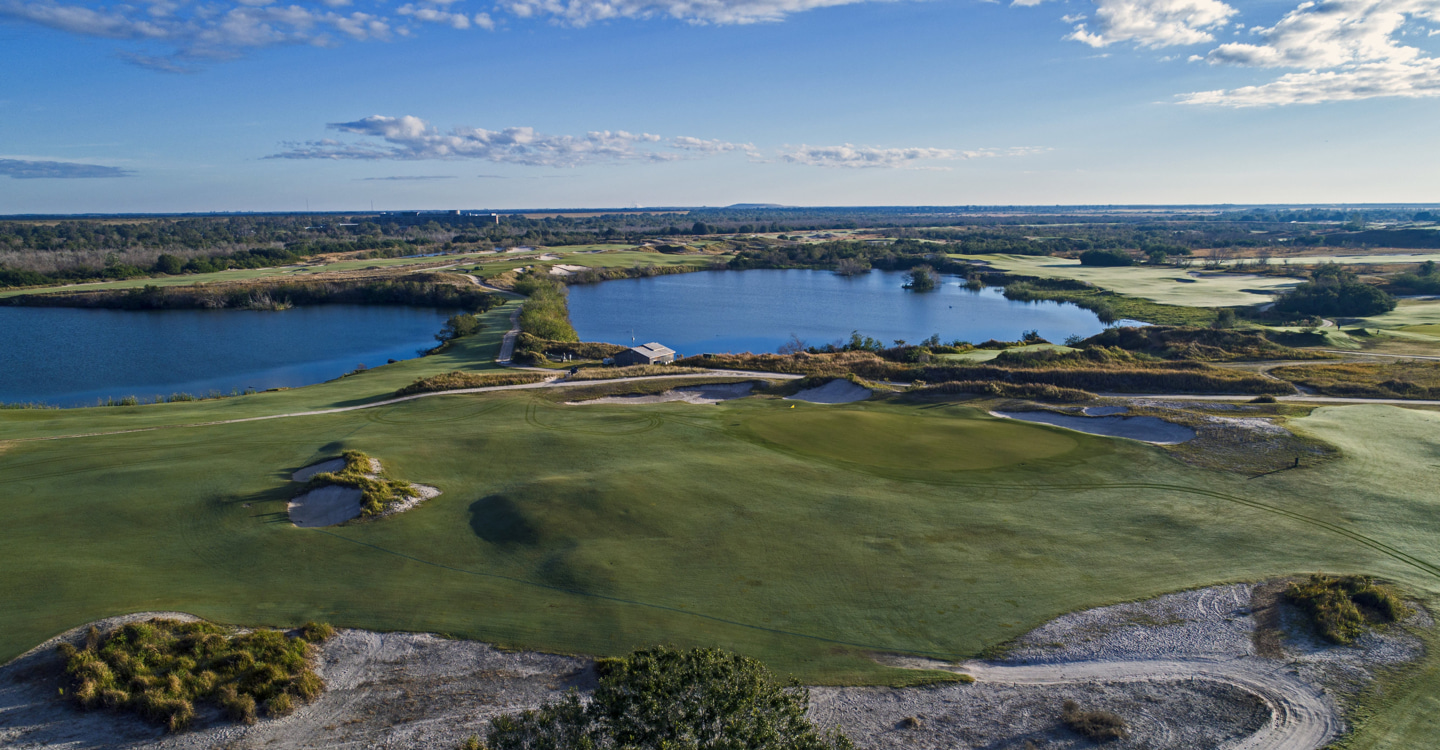
The runoff right funnels away bailouts
HOLE #16 – 237 yards – par 3
The 16th is a long par-3 that has all the characteristics of a reverse redan hole except for the back left part of the green running uphill to its own plateau. The bunkers on the right side are treacherous and not a great place to miss. Using the strong left to right slope to run the ball up is the ideal way to attack this challenging one-shotter.
-
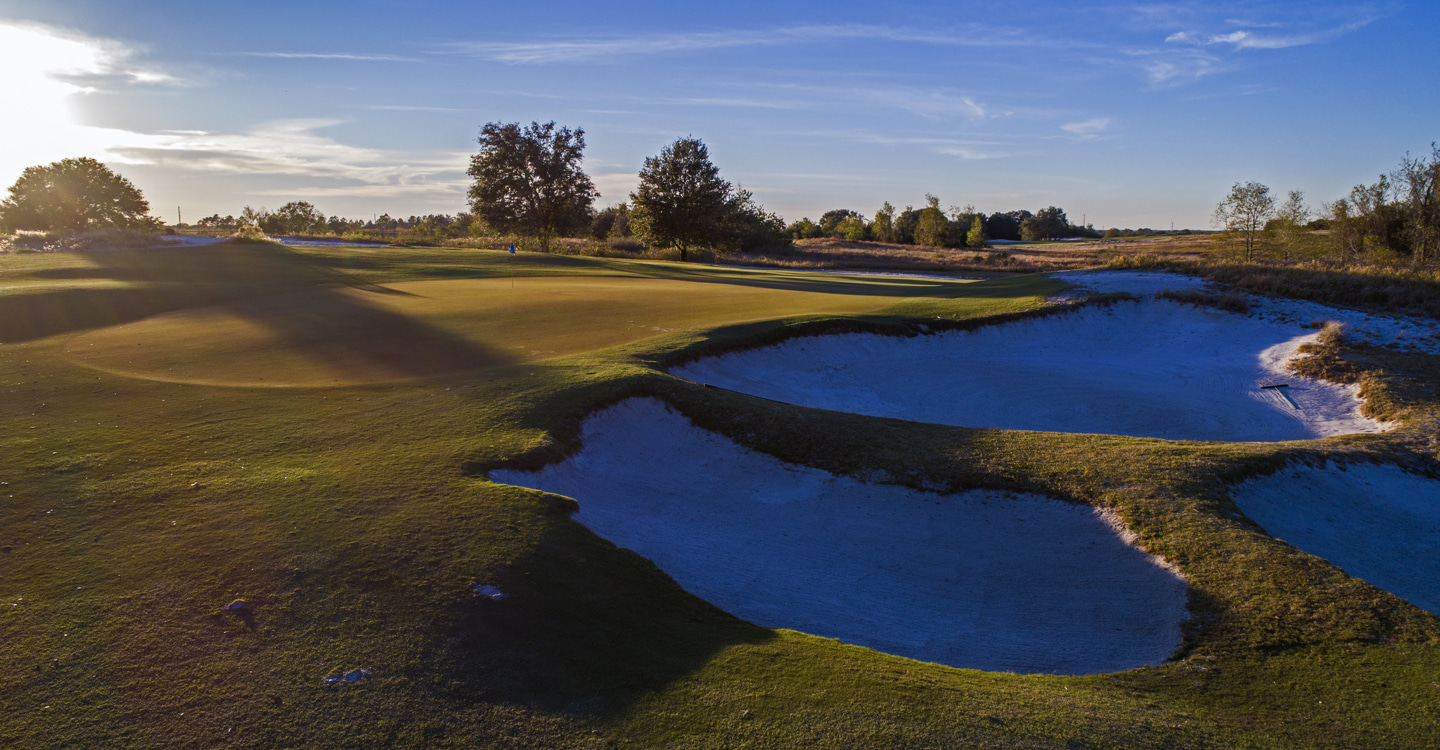
The bunkers right are not the place to miss
-
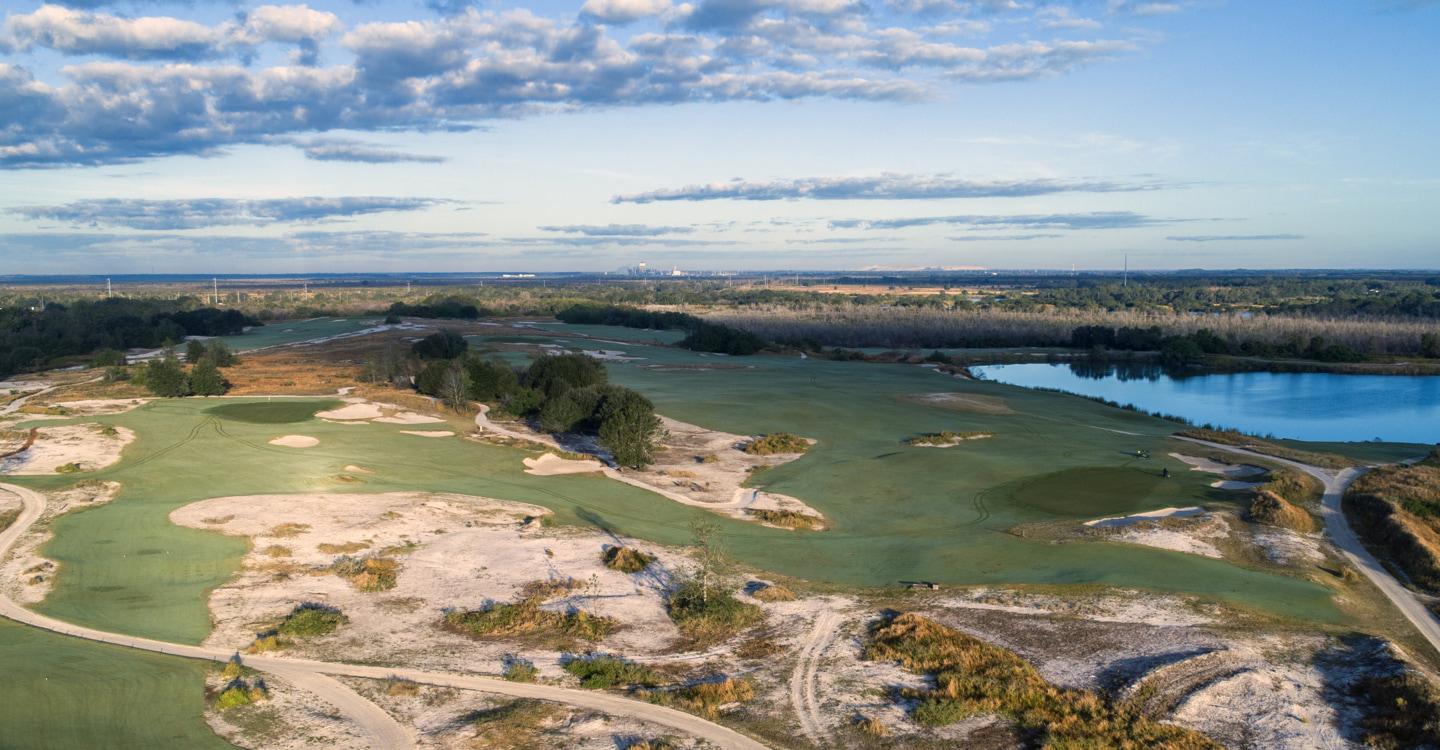
High above the sandy waste left of the fairway
-
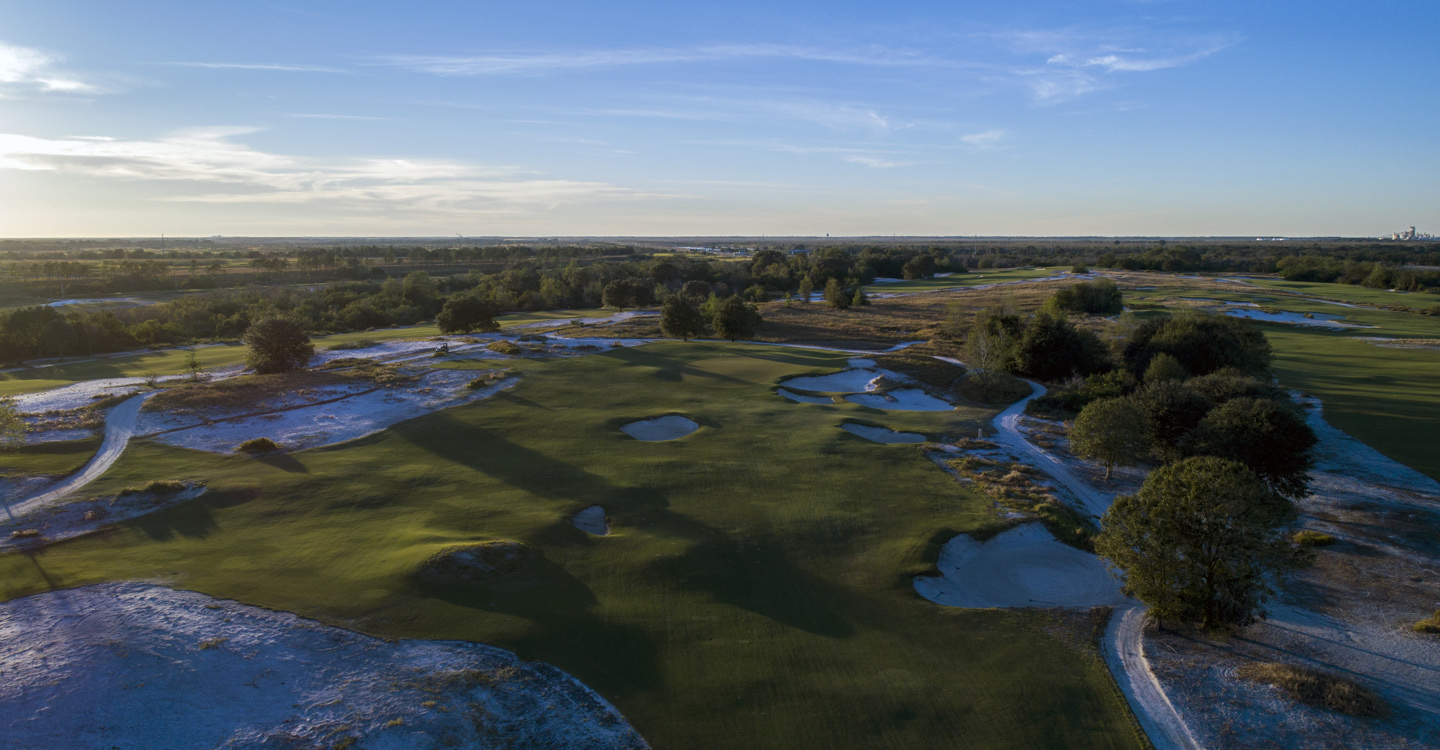
Hazards center and right must be navigated
-
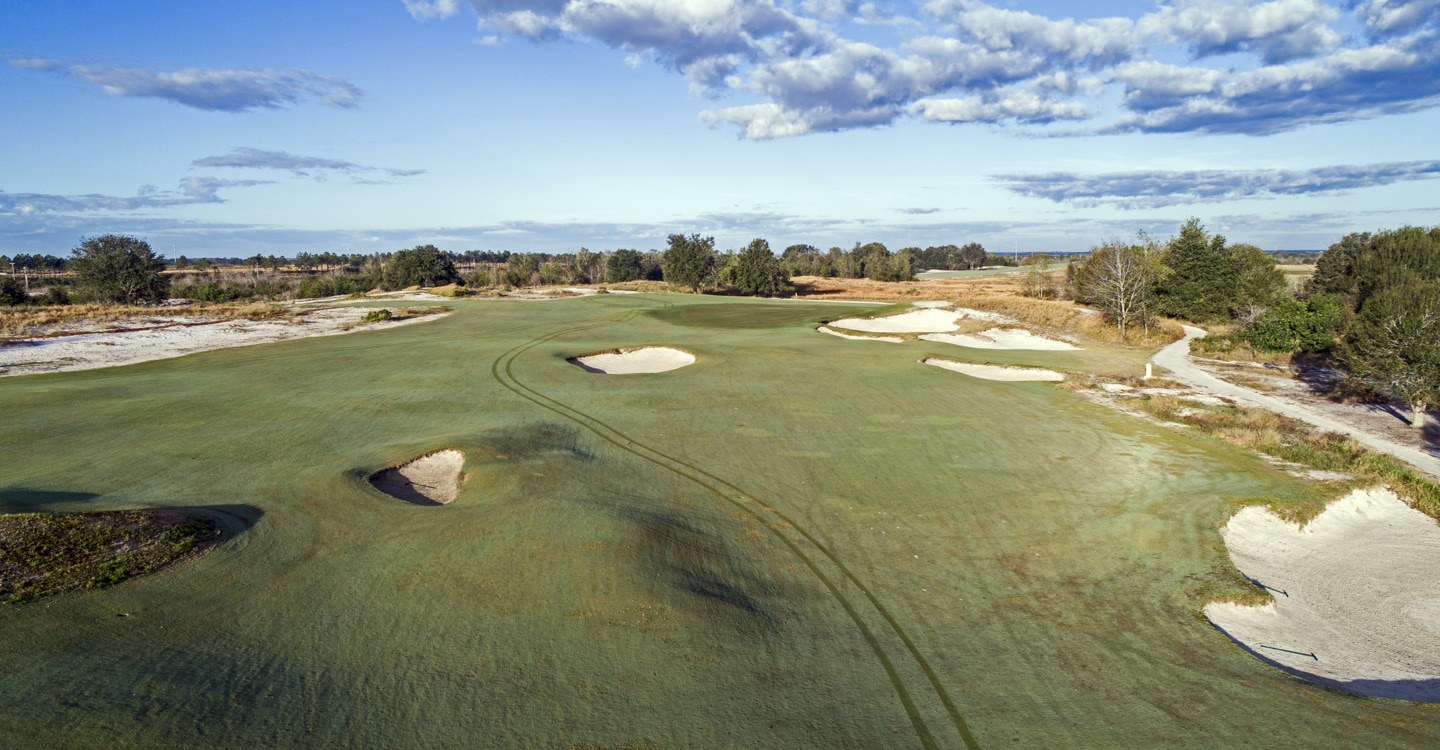
A straightforward approach, but packed with peril
-
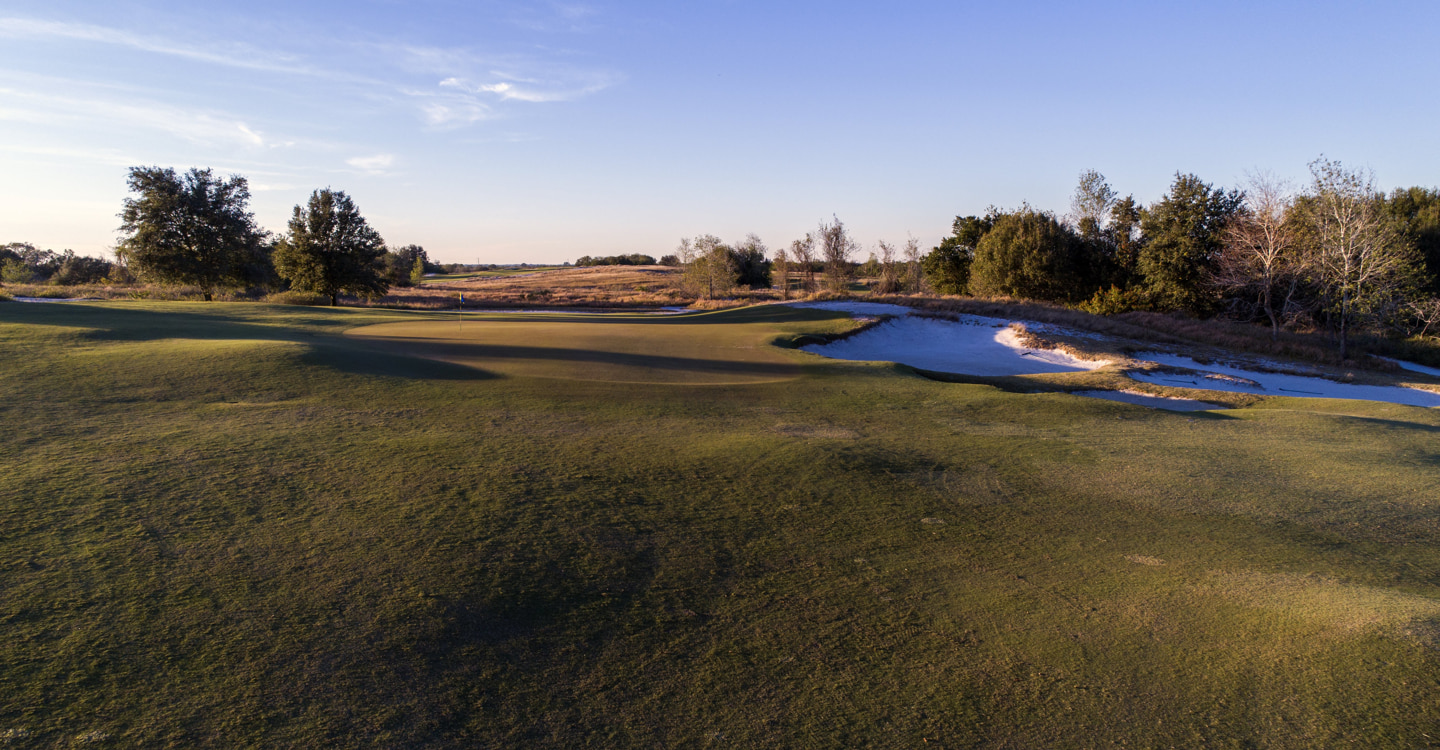
The false front on the 16th green
HOLE #17 – 590 yards – par 5
One of my favorite par-5 designs is the Great Hazard, a concept originally used by A.W. Tillinghast during the golden age. Doak’s modern rendition on the 17th is magnificent. The hole design places pressure on the player to hit a good tee shot. When the fairway is missed it leaves a very difficult shot to carry the great hazard bunkering, forcing many to lay up short and leave a long uphill approach for the third. If you find yourself in one of the massive great hazard bunkers, the approach is blind to the 17th green which is no easy task. The green’s front half is a false front, repelling anything that is slightly short.
-
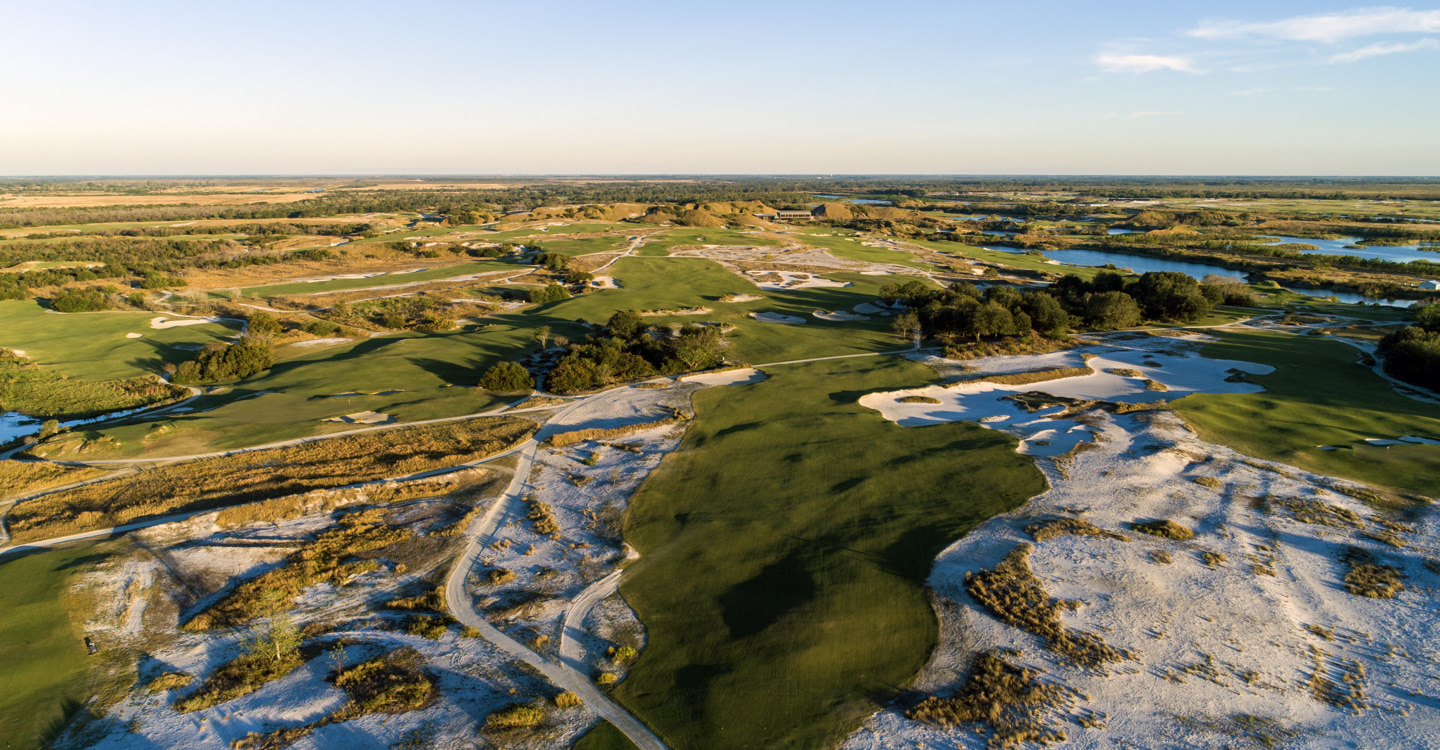
The winding fairway of Doak's brilliant par-5 17th
-
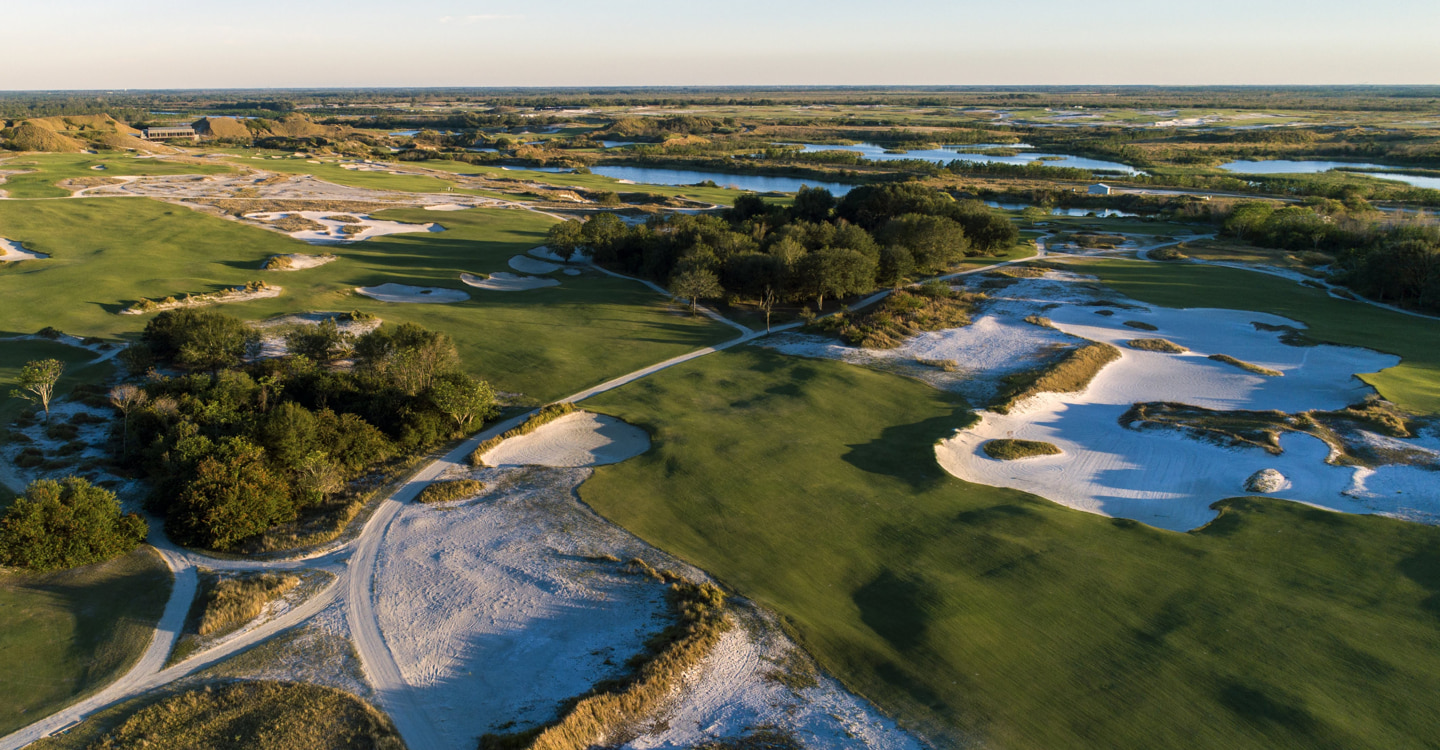
Approaching the Great Hazard
-
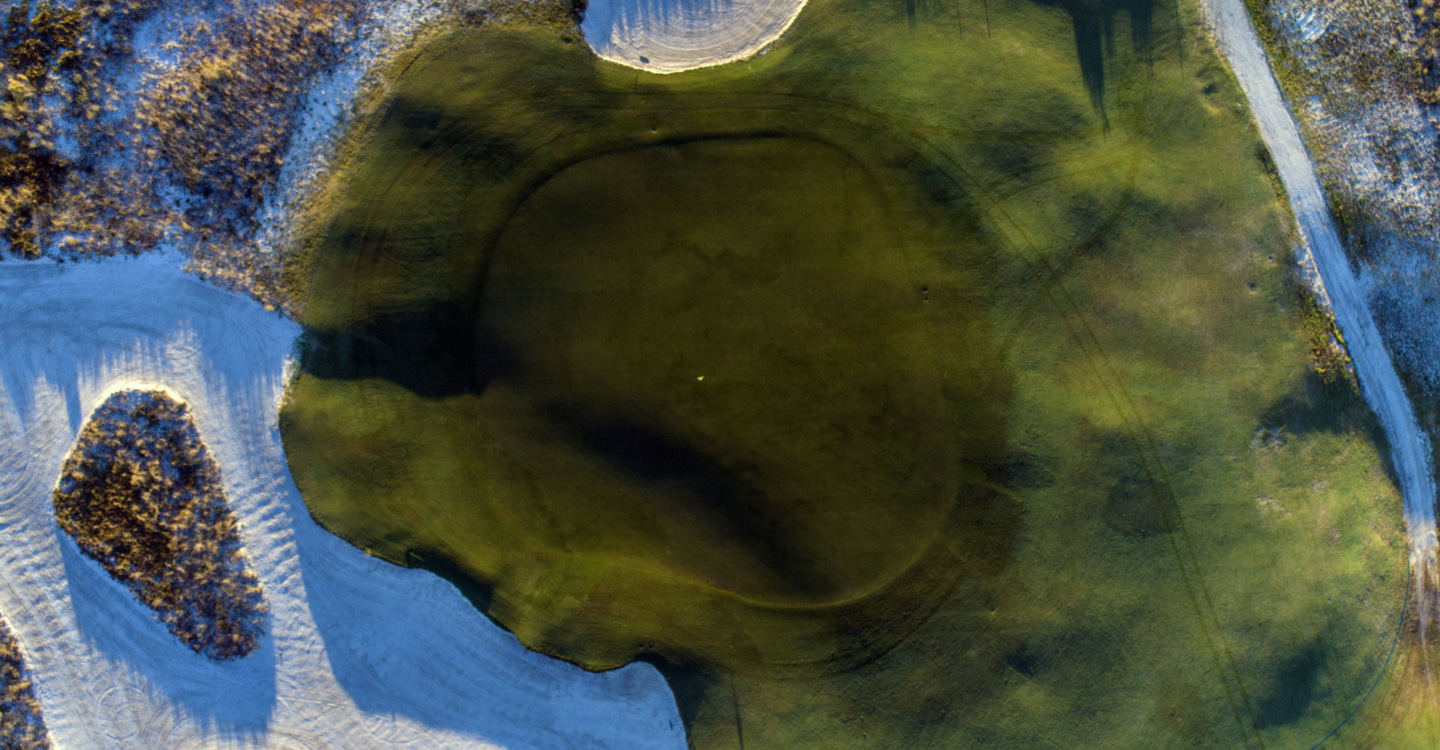
Above the green, where contours demand precise approaches
HOLE #18 – 478 yards – par 4
The closer at Streamsong Blue is spectacular, utilizing the terrain to make it memorable. Favoring the right side of the fairway will shorten the hole but bring the bunkers into play. The tee shot runs uphill, and as you reach the top of the hill it reveals a majestic closing shot with the Streamsong clubhouse in the distance. I loved what Doak did here with the green that slopes hard from left to right, making it very tough to hold the green from the left side of the fairway.
-

The diagonal bunkering right on Blue's closer
-
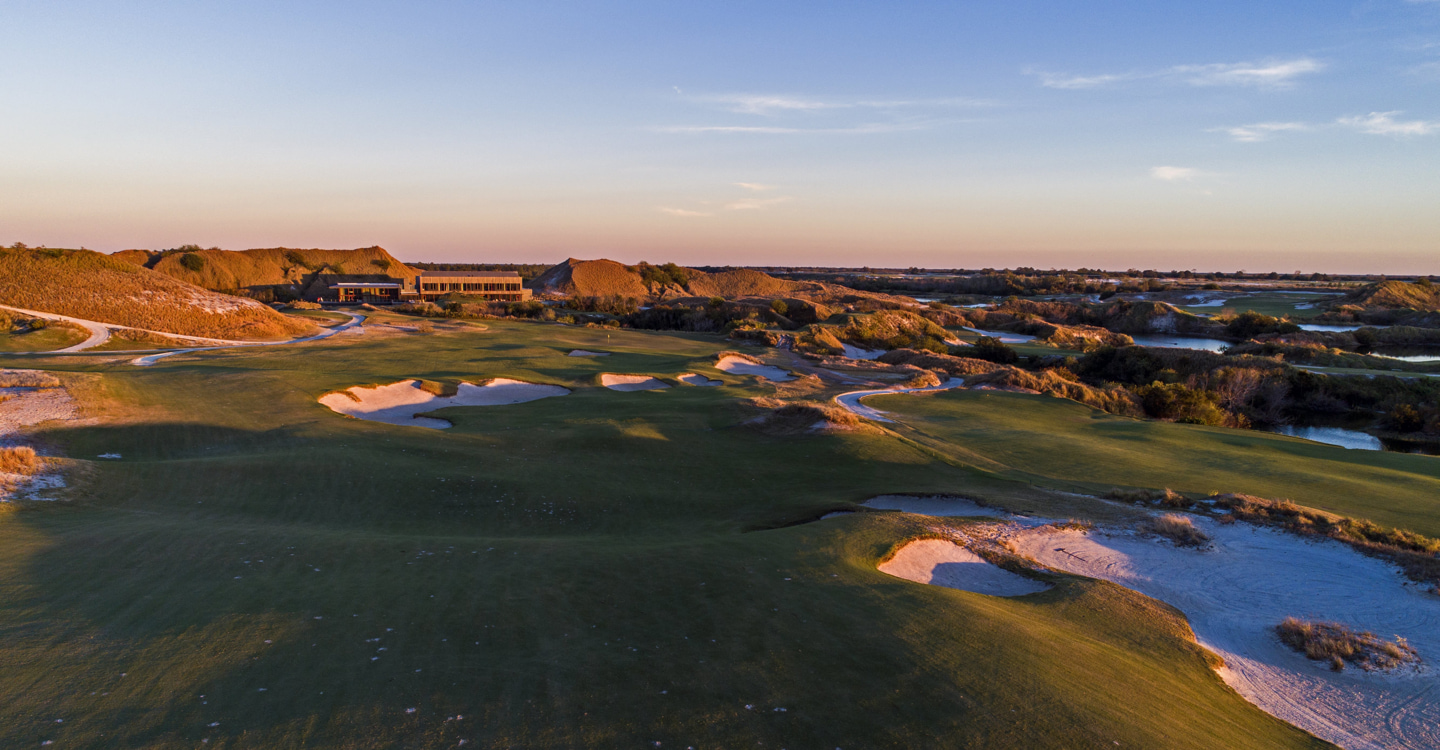
Approaching the 18th, with the clubhouse beyond
-
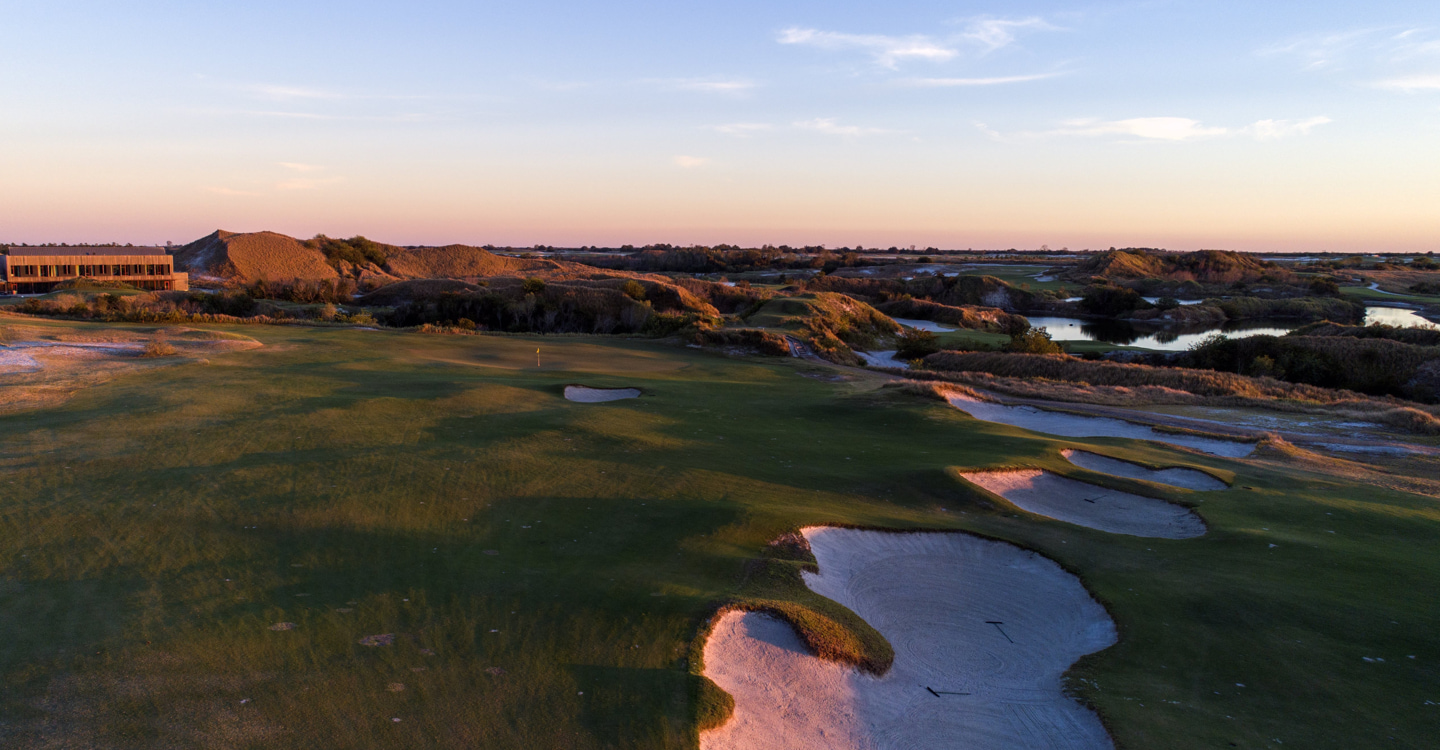
A final center bunker guards the green
I really enjoyed my round at Streamsong Blue. Doak’s uncanny ability to confound the great player while being extremely playable for the average player is quite evident. Of the Doak designs that I have had the opportunity to play, Streamsong Blue stands among favorites. It possesses great variety and is an absolute blast to play.
The question that constantly buzzes around Streamsong’s property is what course do you like better? The answer typically comes back as a 50/50 split. In my mind, Streamsong Blue was a fantastic golf course and one I would gladly play over and over, but I didn’t think it was at the same level as Streamsong Red, which I feel is world class. As is the case with all such questions, there is no definitive answer. The fun is in the debate, and in playing the courses.
For additional looks at Streamsong Blue, watch The Fried Egg Flyover videos:
For golf fans who want to bring home a piece of this course, we offer a collection of Streamsong photography prints shot by the Fried Egg Golf team available in our Pro Shop.
Sign Up for The Fried Egg Newsletter
The Fried Egg Newsletter is the best way to stay up to date on all things golf. Delivered every Monday, Wednesday, and Friday for free!


 by
by 